Methods to increase response to postal and electronic questionnaires
- PMID: 38032037
- PMCID: PMC10687884
- DOI: 10.1002/14651858.MR000008.pub5
Methods to increase response to postal and electronic questionnaires
Abstract
Background: Self-administered questionnaires are widely used to collect data in epidemiological research, but non-response reduces the effective sample size and can introduce bias. Finding ways to increase response to postal and electronic questionnaires would improve the quality of epidemiological research.
Objectives: To identify effective strategies to increase response to postal and electronic questionnaires.
Search methods: We searched 14 electronic databases up to December 2021 and manually searched the reference lists of relevant trials and reviews. We contacted the authors of all trials or reviews to ask about unpublished trials; where necessary, we also contacted authors to confirm the methods of allocation used and to clarify results presented.
Selection criteria: Randomised trials of methods to increase response to postal or electronic questionnaires. We assessed the eligibility of each trial using pre-defined criteria.
Data collection and analysis: We extracted data on the trial participants, the intervention, the number randomised to intervention and comparison groups and allocation concealment. For each strategy, we estimated pooled odds ratios (OR) and 95% confidence intervals (CI) in a random-effects model. We assessed evidence for selection bias using Egger's weighted regression method and Begg's rank correlation test and funnel plot. We assessed heterogeneity amongst trial odds ratios using a Chi2 test and quantified the degree of inconsistency between trial results using the I2 statistic.
Main results: Postal We found 670 eligible trials that evaluated over 100 different strategies of increasing response to postal questionnaires. We found substantial heterogeneity amongst trial results in half of the strategies. The odds of response almost doubled when: using monetary incentives (odds ratio (OR) 1.86; 95% confidence interval (CI) 1.73 to 1.99; heterogeneity I2 = 85%); using a telephone reminder (OR 1.96; 95% CI 1.03 to 3.74); and when clinical outcome questions were placed last (OR 2.05; 95% CI 1.00 to 4.24). The odds of response increased by about half when: using a shorter questionnaire (OR 1.58; 95% CI 1.40 to 1.78); contacting participants before sending questionnaires (OR 1.36; 95% CI 1.23 to 1.51; I2 = 87%); incentives were given with questionnaires (i.e. unconditional) rather than when given only after participants had returned their questionnaire (i.e. conditional on response) (OR 1.53; 95% CI 1.35 to 1.74); using personalised SMS reminders (OR 1.53; 95% CI 0.97 to 2.42); using a special (recorded) delivery service (OR 1.68; 95% CI 1.36 to 2.08; I2 = 87%); using electronic reminders (OR 1.60; 95% CI 1.10 to 2.33); using intensive follow-up (OR 1.69; 95% CI 0.93 to 3.06); using a more interesting/salient questionnaire (OR 1.73; 95% CI 1.12 to 2.66); and when mentioning an obligation to respond (OR 1.61; 95% CI 1.16 to 2.22). The odds of response also increased with: non-monetary incentives (OR 1.16; 95% CI 1.11 to 1.21; I2 = 80%); a larger monetary incentive (OR 1.24; 95% CI 1.15 to 1.33); a larger non-monetary incentive (OR 1.15; 95% CI 1.00 to 1.33); when a pen was included (OR 1.44; 95% CI 1.38 to 1.50); using personalised materials (OR 1.15; 95% CI 1.09 to 1.21; I2 = 57%); using a single-sided rather than a double-sided questionnaire (OR 1.13; 95% CI 1.02 to 1.25); using stamped return envelopes rather than franked return envelopes (OR 1.23; 95% CI 1.13 to 1.33; I2 = 69%), assuring confidentiality (OR 1.33; 95% CI 1.24 to 1.42); using first-class outward mailing (OR 1.11; 95% CI 1.02 to 1.21); and when questionnaires originated from a university (OR 1.32; 95% CI 1.13 to 1.54). The odds of response were reduced when the questionnaire included questions of a sensitive nature (OR 0.94; 95% CI 0.88 to 1.00). Electronic We found 88 eligible trials that evaluated over 30 different ways of increasing response to electronic questionnaires. We found substantial heterogeneity amongst trial results in half of the strategies. The odds of response tripled when: using a brief letter rather than a detailed letter (OR 3.26; 95% CI 1.79 to 5.94); and when a picture was included in an email (OR 3.05; 95% CI 1.84 to 5.06; I2 = 19%). The odds of response almost doubled when: using monetary incentives (OR 1.88; 95% CI 1.31 to 2.71; I2 = 79%); and using a more interesting topic (OR 1.85; 95% CI 1.52 to 2.26). The odds of response increased by half when: using non-monetary incentives (OR 1.60; 95% CI 1.25 to 2.05); using shorter e-questionnaires (OR 1.51; 95% CI 1.06 to 2.16; I2 = 94%); and using a more interesting e-questionnaire (OR 1.85; 95% CI 1.52 to 2.26). The odds of response increased by a third when: offering survey results as an incentive (OR 1.36; 95% CI 1.16 to 1.59); using a white background (OR 1.31; 95% CI 1.10 to 1.56); and when stressing the benefits to society of response (OR 1.38; 95% CI 1.07 to 1.78; I2 = 41%). The odds of response also increased with: personalised e-questionnaires (OR 1.24; 95% CI 1.17 to 1.32; I2 = 41%); using a simple header (OR 1.23; 95% CI 1.03 to 1.48); giving a deadline (OR 1.18; 95% CI 1.03 to 1.34); and by giving a longer time estimate for completion (OR 1.25; 95% CI 0.96 to 1.64). The odds of response were reduced when: "Survey" was mentioned in the e-mail subject (OR 0.81; 95% CI 0.67 to 0.97); when the email or the e-questionnaire was from a male investigator, or it included a male signature (OR 0.55; 95% CI 0.38 to 0.80); and by using university sponsorship (OR 0.84; 95%CI 0.69 to 1.01). The odds of response using a postal questionnaire were over twice those using an e-questionnaire (OR 2.33; 95% CI 2.25 to 2.42; I2 = 98%). Response also increased when: providing a choice of response mode (electronic or postal) rather than electronic only (OR 1.76 95% CI 1.67 to 1.85; I2 = 97%); and when administering the e-questionnaire by computer rather than by smartphone (OR 1.62 95% CI 1.36 to 1.94).
Authors' conclusions: Researchers using postal and electronic questionnaires can increase response using the strategies shown to be effective in this Cochrane review.
Copyright © 2023 The Authors. Cochrane Database of Systematic Reviews published by John Wiley & Sons, Ltd. on behalf of The Cochrane Collaboration.
Conflict of interest statement
Phil Edwards: no relevant interests; involved in 'Woolf B, Edwards P. Does advance contact with research participants increase response to questionnaires: an updated systematic review and meta‐analysis. BMC Med Res Methodol. 2021;21(1):265. doi: 10.1186/s12874‐021‐01435‐2'.
Benjamin Woolf: no relevant interests; involved in 'Woolf B, Edwards P. Does pre‐notification increase questionnaire response rates: a randomised controlled trial nested within a systematic review. BMC Med Res Methodol. 2021;21(1):259. doi: 10.1186/s12874‐021‐01462‐z'.
Chloe Perkins: no relevant interests.
Ian Roberts: no relevant interests; former Editor of Cochrane Injuries (closed in March 2023).
Carolyn DiGuiseppi: no relevant interests; former Editor of Cochrane Injuries (closed in March 2023) until November 2020.
Mike Clarke: National Institute for Health and Care Research (grant/contract); Co‐ordinating Editor of Cochrane Methodology plus other Cochrane editorial roles but he was not involved in any part of the editorial process for this review update.
Figures
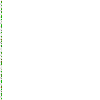
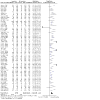




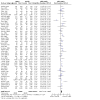

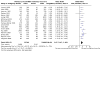
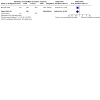


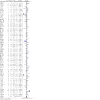
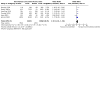
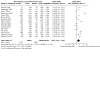
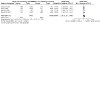
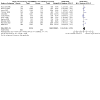
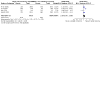
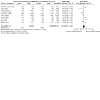
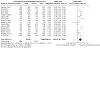
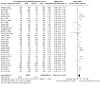
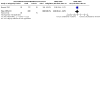

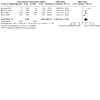
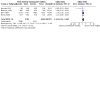
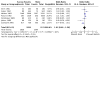
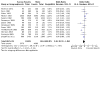

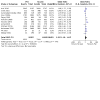
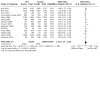

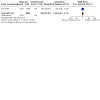

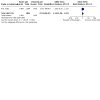
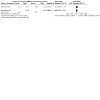



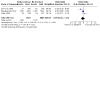

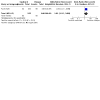





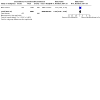
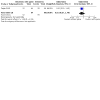




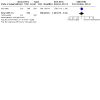
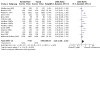

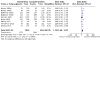





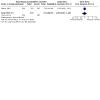
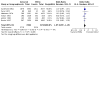
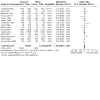



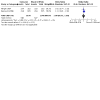
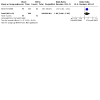
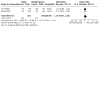
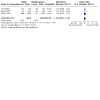



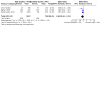






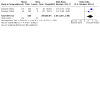







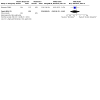



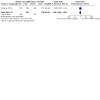

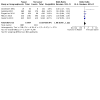

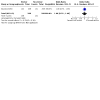
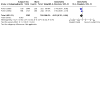

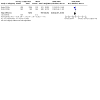
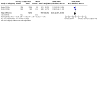







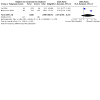

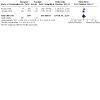

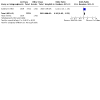
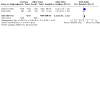



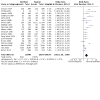



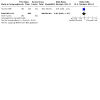
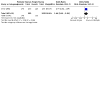


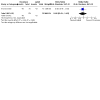



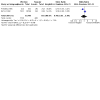
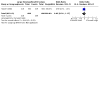

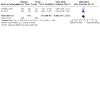

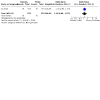
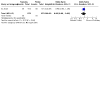
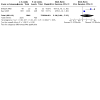
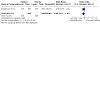


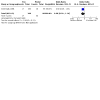
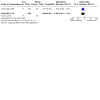







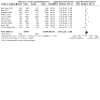



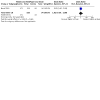




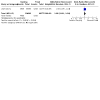

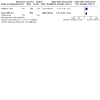

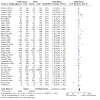
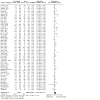
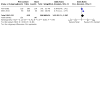
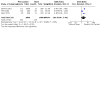

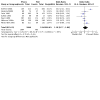
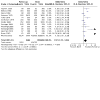


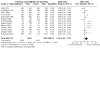

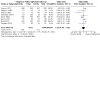



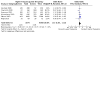


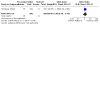

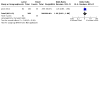


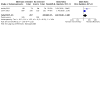

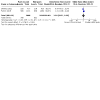






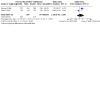

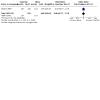
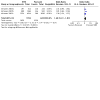
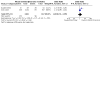
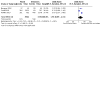
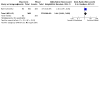
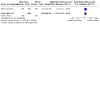



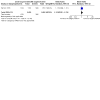





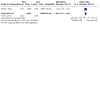





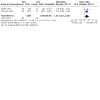

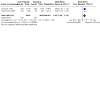


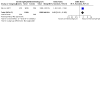




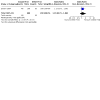
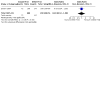








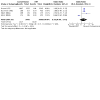

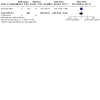


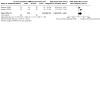
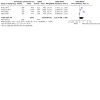




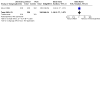


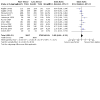
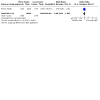

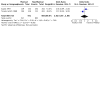
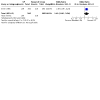





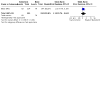
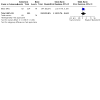


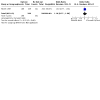




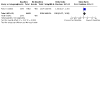







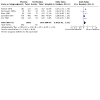



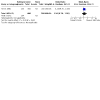




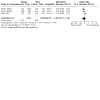
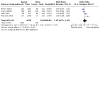

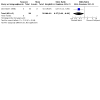

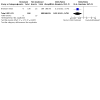




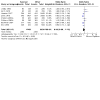






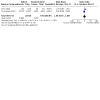




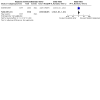
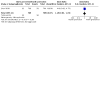


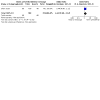
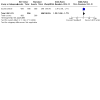

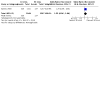


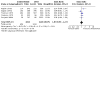



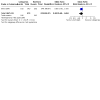


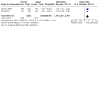

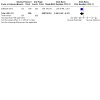


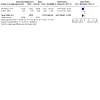
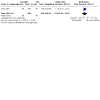

Update of
-
Methods to increase response to postal and electronic questionnaires.Cochrane Database Syst Rev. 2009 Jul 8;2009(3):MR000008. doi: 10.1002/14651858.MR000008.pub4. Cochrane Database Syst Rev. 2009. Update in: Cochrane Database Syst Rev. 2023 Nov 30;11:MR000008. doi: 10.1002/14651858.MR000008.pub5. PMID: 19588449 Free PMC article. Updated.
References
References to studies included in this review
Aadahl 2003 {published data only}
-
- Aadahl M, Jørgensen T. The effect of conducting a lottery on questionnaire response rates: a randomised controlled trial. European Journal of Epidemiology 2003;18:941–4. - PubMed
Abdulaziz 2015 {published data only}
Adams 1982 {published data only}
-
- Adams LL, Gale D. Solving the quandary between questionnaire length and response rate in educational research. Research in Higher Education 1982;17(3):231-40.
Agarwal 2016 {published data only}
Akl 2005 {published data only}
-
- Akl E A, Maroun N, Klocke R A, Montori V, Schünemann H J. Electronic mail was not better than postal mail for surveying residents and faculty. J Clin Epidemiol 2005;58(4):425-9. - PubMed
Akl 2011 {published data only}
Albaum 1987 {published data only}
-
- Albaum G. Do source and anonymity affect mail survey results? Journal of the Academy of Marketing Science 1987;15(3):74-81.
Albaum 1989 {published data only}
-
- Albaum G, Strandskov J. Participation in a mail survey of international marketers: effects of pre-contact and detailed project explanation. Journal of Global Marketing 1989;2(4):7-23.
Allen 2016 {published data only}
-
- Allen P J, Roberts L D. The impact of academic sponsorship on Web survey dropout and item non-response. First Monday 2016;21(2):1.
Allen 2016a {published data only}
-
- Allen P J, Roberts L D. The impact of academic sponsorship on Web survey dropout and item non-response. First Monday 2016;21(2):1.
Alutto 1970 {published data only}
-
- Alutto JA. Some dynamics of questionnaire completion and return among professional and managerial personnel: the relative impacts of reception at work site or place of residence. Journal of Applied Psychology 1970;54(5):430-2.
Andreasen 1970 {published data only}
-
- Andreasen AR. Personalizing mail questionnaire correspondence. Public Opinion Quarterly 1970;34:273-7.
Antoun 2017 {published data only}
-
- Antoun C, Couper M P, Conrad F G. Effects of Mobile versus PC Web on Survey Response Quality. Public Opinion Quarterly 2017;81:280-306.
Arai 2016 {published data only}
-
- Arai Kiichiro, Yamada Kyohei. Examining the effect of providing a pen on the response rate to a mail survey. Behaviormetrika 2016;43(2):83-101.
Arzheimer 1999 {published data only}
-
- Arzheimer K, Klein M. The effect of material incentives on return rate, panel attrition and sample composition of a mail panel survey. International Journal of Public Opinion Research 1999;11(4):368-77.
Asch 1996 {published data only}
-
- Asch DA. Use of a coded postcard to maintain anonymity in a highly sensitive mail survey: cost, response rates, and bias. Epidemiology 1996;7(5):550-1. - PubMed
Asch 1998 {published data only}
-
- Asch DA, Christakis NA, Ubel PA. Conducting physician mail surveys on a limited budget. A randomized trial comparing $2 bill versus $5 bill incentives. Medical Care 1998;36(1):95-9. - PubMed
Ashby 2011 {published data only}
-
- Ashby Rebecca, Turner Gwen, Cross Ben, Mitchell Natasha, Torgerson David. A randomized trial of electronic reminders showed a reduction in the time to respond to postal questionnaires. Journal of clinical epidemiology 2011;64(2):208-12. - PubMed
Ashing‐Giwa 2000 {published data only}
Aveyard 2001 {published data only}
-
- Aveyard P, Manaseki S, Griffin C. The cost effectiveness of including pencils and erasers with self-completion epidemiological questionnaires. Public Health 2001;115:80-1. - PubMed
Bachman 1987 {published data only}
-
- Bachman DP. Cover letter appeals and sponsorship effects on mail survey response rates. Journal of Marketing Education 1987;9:45-51.
Bakan 2014 {published data only}
-
- Bakan Jennifer, Chen Bing, Medeiros-Nancarrow Cheryl, Hu Jim C, Kantoff Philip W, Recklitis Christopher J. Effects of a gift certificate incentive and specialized delivery on prostate cancer survivors' response rate to a mailed survey: a randomized-controlled trial. Journal of geriatric oncology 2014;5(2):127-32. - PubMed
Barker 1996 {published data only}
Barra 2016 {published data only}
Basnov 2009 {published data only}
-
- Basnov M, Kongsved Sm Fau - Bech Per, Bech P Fau - Hjollund Niels Henrik, Hjollund N H. Reliability of short form-36 in an Internet- and a pen-and-paper version. Inform Health Soc Care 2009;34(1):53-8. - PubMed
Bauer 2004 {published data only}
-
- Bauer JE, Rezaishiraz H, Head K, Cowell J, Bepler G, Aiken M, et al. Obtaining DNA from a geographically dispersed cohort of current and former smokers: use of mail-based mouthwash collection and monetary incentives. Nicotine & Tobacco Research 2004;6:439-46. - PubMed
Bech 2009 {published data only}
-
- Bech M, Kristensen M B. Differential response rates in postal and web-based surveys among older respondents. Survey Research Methods 2009;3(1):1-6.
Becker 2000a {published and unpublished data}
-
- Becker H, Cookston J, Kulberg V. Mailed survey follow-ups - are postcard reminders more cost-effective than second questionnaires? Western Journal of Nursing Research 2000;22(5):642-7. - PubMed
Becker 2000b {published and unpublished data}
-
- Becker H, Cookston J, Kulberg V. Mailed survey follow-ups - are postcard reminders more cost-effective than second questionnaires? Western Journal of Nursing Research 2000;22(5):642-7. - PubMed
Beebe 2005a {published data only}
-
- Beebe TJ, Davern ME, McAlpine DD, Call KT, Rockwood TH. Increasing response rates in a survey of medicaid enrollees: the effect of a prepaid monetary incentive and mixed modes (mail and telephone). Medical Care 2005a;43(4):411-20. - PubMed
Beebe 2005b {published data only}
-
- Beebe TJ, Davern ME, McAlpine DD, Call KT, Rockwood TH. Increasing response rates in a survey of medicaid enrollees: the effect of a prepaid monetary incentive and mixed modes (mail and telephone). Medical Care 2005b;43(4):411-20. - PubMed
Beebe 2005c {published data only}
-
- Beebe TJ, Davern ME, McAlpine DD, Call KT, Rockwood TH. Increasing response rates in a survey of medicaid enrollees: the effect of a prepaid monetary incentive and mixed modes (mail and telephone). Medical Care 2005c;43(4):411-20. - PubMed
Beebe 2005d {published data only}
-
- Beebe TJ, Davern ME, McAlpine DD, Call KT, Rockwood TH. Increasing response rates in a survey of medicaid enrollees: the effect of a prepaid monetary incentive and mixed modes (mail and telephone). Medical Care 2005d;43(4):411-20. - PubMed
Beebe 2005e {published data only}
-
- Beebe TJ, Davern ME, McAlpine DD, Call KT, Rockwood TH. Increasing response rates in a survey of medicaid enrollees: the effect of a prepaid monetary incentive and mixed modes (mail and telephone). Medical Care 2005e;43(4):411-20. - PubMed
Beebe 2005f {published data only}
-
- Beebe TJ, Davern ME, McAlpine DD, Call KT, Rockwood TH. Increasing response rates in a survey of medicaid enrollees: the effect of a prepaid monetary incentive and mixed modes (mail and telephone). Medical Care 2005f;43(4):411-20. - PubMed
Beebe 2007 {published data only}
-
- Beebe TJ, Stoner SM, Anderson KJ, Williams AR. Selected questionnaire size and color combinations were significantly related to mailed survey response rates. Journal of Clinical Epidemiology 2007;60:1184-9. - PubMed
Beebe 2007a {published data only}
Beebe 2010 {published data only}
Beebe 2018 {published data only}
-
- Beebe Timothy J, Jacobson Robert M, Jenkins Sarah M, Lackore Kandace A, Rutten Lila J Finney. Testing the Impact of Mixed-Mode Designs (Mail and Web) and Multiple Contact Attempts within Mode (Mail or Web) on Clinician Survey Response. Health services research 2018;53 Suppl 1(g2l, 0053006):3070-83. - PMC - PubMed
Bell 2004 {published data only}
-
- Bell LS, Butler TL, Herring RP, Yancey AK, Fraser GE. Recruiting blacks to the adventist health study: do follow-up phone calls increase response rates? Annals of Epidemiology 2005;15(9):667–72. - PubMed
Bell 2016 {published data only}
-
- Bell K, Clark L, Fairhurst C, Mitchell N, Lenaghan E, Blacklock J, et al. Enclosing a pen reduced time to response to questionnaire mailings. JOURNAL OF CLINICAL EPIDEMIOLOGY 2016;74:144-50. - PubMed
Bellizzi 1986 {published data only}
-
- Bellizzi JA, Hite RE. Face-to-face advance contact and monetary incentives: effects on mail survey return rates, response differences, and survey costs. Journal of Business Research 1986;14:99-106.
Berdie 1973 {published data only}
-
- Berdie DR. Questionnaire length and response rate. Journal of Applied Psychology 1973;58(2):278-80.
Bergen 1957 {published data only}
-
- Bergen AV, Spitz JC. The introduction of a written survey [De introductie van een schriftelijke enquete]. Nederlandsch Tijdschrift voor Psychologie 1957;12:68-96. - PubMed
Bergeson 2013 {published data only}
Berk 1993 {published data only}
-
- Berk ML, Edwards WS, Gay NL. The use of a prepaid incentive to convert non responders on a survey of physicians. Evaluation & the Health Professions 1993;16:239-45. - PubMed
Berry 1987 {published data only}
-
- Berry S. Physician response to a mailed survey. An experiment in timing of payment. Public Opinion Quarterly 1987;51:102-14.
Beydoun 2006 {published data only}
-
- Beydoun H, Saftlas AF, Harland K, Triche E. Combining conditional and unconditional recruitment incentives could facilitate telephone tracing in surveys of postpartum women. Journal of Clinical Epidemiology 2006;59:732–8. - PubMed
Bhandari 2003 {published data only}
-
- Bhandari M, Swiontkowski MF, Shankardass K, Sprague S, Schemitsch EH, Guyatt GH. A randomized trial of opinion leader endorsement in a survey of orthopaedic surgeons: effect on primary response rates. International Journal of Epidemiology 2003;32:634–6. - PubMed
Biner 1988 {published data only}
-
- Biner PM. Effects of cover letter appeal and monetary incentives on survey response: a reactance theory application. Basic and Applied Social Psychology 1988;9(2):99-106.
Biner 1990 {published data only}
-
- Biner PM, Barton DL. Justifying the enclosure of monetary incentives in mail survey cover letters. Psychology & Marketing 1990;7(3):153-62.
Biner 1994 {published data only}
-
- Biner PM, Kidd HJ. The interactive effects of monetary incentive justification and questionnaire length on mail survey response rates. Psychology & Marketing 1994;11(5):483-92.
Birnholtz 2004 {published data only}
-
- Birnholtz JP, Horn DB, Finholt TA, Bae SJ. The effect of cash, electronic, and paper gift certificates as respondent incentives for a web based survey of technologically sophisticated respondents. Social Science Computer Review 2004;22:355-62.
Bjertnaes 2012 {published data only}
-
- Bjertnaes O A, Iversen H H. User-experience surveys with maternity services: a randomized comparison of two data collection models. INTERNATIONAL JOURNAL FOR QUALITY IN HEALTH CARE 2012;24(4):433-8. - PubMed
Bjertnaes 2018 {published data only}
Blass 1981 {published data only}
-
- Blass T, Leichtman SR, Brown RA. The effect of perceived consensus and implied threat upon responses to mail surveys. Journal of Social Psychology 1981;113:213-6.
Blass‐Wilhems 1982 {published data only}
-
- Blass-Wilhelms W. Influence of 'real' postage stamp versus stamp 'postage paid' on return rate of response cards [Der EinfluB der Frankierungsart auf Rucklauf von Antwortkarten]. Zeitschrift fur Soziologie 1982;11(1):64-8.
Blomberg 1996 {published data only}
-
- Blomberg J, Sandell R. Does a material incentive affect response on a psychotherapy follow-up questionnaire? Psychotherapy Research 1996;6(3):155-63.
Blumenberg 2019 {published data only}
-
- Blumenberg C, Menezes A M B, Goncalves H, Assuncao M C F, Wehrmeister F C, Barros F C, et al. The role of questionnaire length and reminders frequency on response rates to a web-based epidemiologic study: a randomised trial. INTERNATIONAL JOURNAL OF SOCIAL RESEARCH METHODOLOGY 2019;22(6):625-35.
Blythe 1986 {published data only}
-
- Blythe BJ. Increasing mailed survey responses with a lottery. Social Work Research Abstracts 1986;22:18-9.
Bolt 2014 {published data only}
-
- Bolt E E, Heide A, Onwuteaka-Philipsen B D. Reducing questionnaire length did not improve physician response rate: a randomized trial. JOURNAL OF CLINICAL EPIDEMIOLOGY 2014;67(4):477-81. - PubMed
Bond 2020 {published data only}
Bonevski 2011 {published data only}
-
- Bonevski B, Magin P, Horton G, Foster M, Girgis A. Response rates in GP surveys Trialling two recruitment strategies. AUSTRALIAN FAMILY PHYSICIAN 2011;40(6):427-30. - PubMed
Bonevski 2011a {published data only}
-
- Bonevski B, Magin P, Horton G, Foster M, Girgis A. Response rates in GP surveys Trialling two recruitment strategies. AUSTRALIAN FAMILY PHYSICIAN 2011;40(6):427-30. - PubMed
Boser 1990 {published data only}
-
- Boser JA. Surveying alumni by mail: effect of booklet/folder questionnaire format and style of type on response rate. Research in Higher Education 1990;31(2):149-59.
Bosnjak 2003 {published data only}
-
- Bosnjak M, Tuten TL. Prepaid and promised incentives in web surveys: an experiment. Social Science Computer Review 2003;21:208-17.
Boulianne 2012 {published data only}
-
- Boulianne Shelley. Examining the Gender Effects of Different Incentive Amounts in a Web Survey. FIELD METHODS 2012;25(1):91-104.
Boyd 2015 {published data only}
Boyle 2012 {published data only}
-
- Boyle T, Heyworth J, Landrigan J, Mina R, Fritschi L. The Effect of Lottery Scratch Tickets and Donation Offers on Response Fraction: A Study and Meta-Analysis. FIELD METHODS 2012;24(1):112-32.
Bradshaw 2020 {published data only}
Bray 2017 {published data only}
Bredart 2002 {published data only}
-
- Bredart A, Razavi D, Robertson C, Brignone S, Fonzo D, Petit J-Y, et al. Timing of patient satisfaction assessment: effect on questionnaire acceptability, completeness of data, reliability and variability of scores. Patient Education and Counseling 2002;46:131-6. - PubMed
Breen 2010 {published data only}
-
- Breen C L, Shakeshaft A P, Doran C M, Sanson-Fisher R W, Mattick R P. Cost-effectiveness of follow-up contact for a postal survey: a randomised controlled trial. AUSTRALIAN AND NEW ZEALAND JOURNAL OF PUBLIC HEALTH 2010;34(5):508-12. - PubMed
Brehaut 2006 {published data only}
-
- Brehaut JC, Graham ID, Visentin L, Stiell IG. Print format and sender recognition were related to survey completion rate. Journal of Clinical Epidemiology 2006;59:635–41. - PubMed
Brems 2006 {published data only}
-
- Brems C, Johnson ME, Warner T. Survey return rates as a function of priority versus first-class mailing. Psychological Reports 2006;99:496-501. - PubMed
Brennan 1991 {published data only}
-
- Brennan M, Hoek J, Astridge C. The effects of monetary incentives on the response rate and cost-effectiveness of a mail survey. Journal of the Market Research Society 1991;33:229-41.
Brennan 1992a {published data only}
-
- Brennan M. The effect of a monetary incentive on mail survey response rates. Journal of the Market Research Society 1992;34(2):173-7.
Brennan 1992b {published data only}
-
- Brennan M. The effect of a monetary incentive on mail survey response rates. Journal of the Market Research Society 1992;34(2):173-7.
Brennan 1992c {published data only}
-
- Brennan M. The effect of a monetary incentive on mail survey response rates. Journal of the Market Research Society 1992;34(2):173-7.
Brennan 1993a {published data only}
-
- Brennan M, Seymour P, Gendall P. The effectiveness of monetary incentives in mail surveys: further data. Marketing Bulletin 1993;4:43-52.
Brennan 1993b {published data only}
-
- Brennan M, Seymour P, Gendall P. The effectiveness of monetary incentives in mail surveys: further data. Marketing Bulletin 1993;4:43-52.
Brennan 2009 {published data only}
-
- Brennan Mike, Charbonneau Jan. Improving Mail Survey Response Rates Using Chocolate and Replacement Questionnaires. The Public Opinion Quarterly 2009;73(2):368-78.
Bright 2002 {published data only}
-
- Bright KD, Smith PM. The use of incentives to affect response rates for a mail survey of US marina decision makers. Forest Products Journal 2002;52(10):26-9.
Brook 1978 {published data only}
-
- Brook LL. The effect of different postage combinations on response levels and speed of reply. Journal of the Market Research Society 1978;20:238-44.
Brookes 2018a {published data only}
Brookes 2018b {published data only}
Brown 1965 {published data only}
-
- Brown ML. Use of a postcard query in mail surveys. Public Opinion Quarterly 1965;29:635-637.
Brown 1975 {published data only}
-
- Brown GH. Randomised inquiry vs conventional questionnaire method in estimating drug usage rates through mail surveys (Technical Report). Human Resources Research Organisation (HumRRO). US Army Research Institute for the behavioural & Social Sciences, Virginia 1975.
Bruce 2000 {published data only}
-
- Bruce T, Salkeld G, Short L, Solomon M, Ward J. A randomised trial of telephone versus postcard prompts to enhance response rate in a phased population-based study about community preferences. Australian and New Zealand Journal of Public Health 2000;24(4):456-7. - PubMed
Brøgger 2007 {published data only}
Buchman 1982 {published data only}
-
- Buchman TA, Tracy JA. Obtaining responses to sensitive questions: conventional questionnaire versus randomized response technique. Journal of Accounting Research 1982;20(1):263-271.
Burgess 2012 {published data only}
-
- Burgess Caroline, Nicholas Jennifer, Gulliford Martin. Impact of an electronic, computer-delivered questionnaire, with or without postal reminders, on survey response rate in primary care. Journal of Epidemiology and Community Health 2012;66(7):663-4. - PubMed
Burns 1980 {published data only}
-
- Burns AC, Hair JF. An analysis of mail survey responses from a commercial sample. American Institute Decision Science 1980;1:227-9.
Buttle 1997 {published data only}
-
- Buttle F, Thomas G. Questionnaire colour and mail survey response rate. Journal of the Market Research Society 1997;39(4):625-6.
Cabana 2000 {published data only}
-
- Cabana MD, Becher O, Rubin HR, Freed GL. Effect of repeated presentations of a study logo on physician survey response rate. Pediatric Research 2000;47(4):p843.
Campbell 1990 {published data only}
Camunas 1990 {published data only}
-
- Camunas C, Alward RR, Vecchione E. Survey response rates to a professional association mail questionnaire. Journal of the New York State Nurses Association 1990;21(3):7-9. - PubMed
Carling 2004 {published data only}
Carpenter 1974 {published data only}
-
- Carpenter EH. Personalizing mail surveys: a replication and reassessment. Public Opinion Quarterly 1974;38:614-620.
Carpenter 1977 {published data only}
-
- Carpenter EH. Evaluation of mail questionnaires for obtaining data from more than one respondent in a household. Rural Sociology 1977;42(2):250-9.
Cartwright 1986 {published data only}
-
- Cartwright A. Some experiments with factors that might affect the response of mothers to a postal questionnaire. Statistics in Medicine 1986;5:607-17. - PubMed
Cartwright 1987 {published data only}
-
- Cartwright A, Smith C. Identifying a sample of elderly people by a postal screen. Age & Ageing 1987;16:119-22. - PubMed
Chan 2003 {published data only}
-
- Chan TMT, Tse SHM, Day MC, Tong ETF, Suen LKP. Randomized trial of use of incentive to increase the response rate to a mailed survey. Asian Journal of Nursing Studies 2003;6(3):36-43.
Chan 2018 {published data only}
-
- Chan R C H, Mak W W S, Pang I H Y, Wong S Y S, Tang W K, Lau J T F, et al. Utility and Cost-effectiveness of Motivational Messaging to Increase Survey Response in Physicians: A Randomized Controlled Trial. FIELD METHODS 2018;30(1):37-55.
Chebat 1991 {published data only}
-
- Chebat J-C, Picard J. Does prenotification increase response rates in mail surveys? A self-perception approach. Journal of Social Psychology 1991;13(4):477-81.
Chen 1984 {published data only}
-
- Chen C. Questionnaire length, salience and researchers' authority, and follow-up: the effect on response rates for postal questionnaires. Chinese Journal of Psychology 1984;26(2):77-84.
Childers 1979 {published data only}
-
- Childers TL, Skinner SJ. Gaining respondent cooperation in mail surveys through prior commitment. Public Opinion Quarterly 1979;43:558-61.
Childers 1980a {published data only}
-
- Childers TL, Pride WM, Ferrell OC. A reassessment of the effects of appeals on response to mail surveys. Journal of Marketing Research 1980;17:365-70.
Childers 1980b {published data only}
-
- Childers TL, Pride WM, Ferrell OC. A reassessment of the effects of appeals on response to mail surveys. Journal of Marketing Research 1980;17:365-70.
Childers 1985 {published data only}
-
- Childers TL, Skinner SJ. Theoretical and empirical issues in the identification of survey respondents. Journal of the Market Research Society 1985;27(1):39-53.
Childers TL 1979 {published data only}
-
- Childers TL, Ferrell OC. Response rates and perceived questionnaire length in mail surveys. Journal of Marketing Research 1979;16:429-31.
Choi 1990 {published data only}
-
- Choi BC, Pak AW, Purdham JT. Effects of mailing strategies on response rate, response time, and cost in a questionnaire study among nurses. Epidemiology 1990;1(1):72-4. - PubMed
Choudhury 2012 {published data only}
-
- Choudhury Yasmin, Hussain Iqbal, Parsons Suzanne, Rahman Anisur, Eldridge Sandra, Underwood Martin. Methodological challenges and approaches to improving response rates in population surveys in areas of extreme deprivation. Primary health care research & development 2012;13(3):211-8. - PubMed
Christensen 2019 {published data only}
Christie 1985 {unpublished data only}
-
- Christie SC. An analysis of three different treatments on the response rate of a mail survey. Student Research Report, Department of Marketing, Massey University 1985.
Church 2004 {published data only}
-
- Church TR, Yeazel MW, Jones RM, Kochevar LK, Watt GD, Mongin SJ, et al. A randomized trial of direct mailing of fecal occult blood tests to increase colorectal cancer screening. Journal of the National Cancer Institute 2004;96(10):770-80. - PubMed
Clark 2001 {published data only}
Clark 2011 {published data only}
Clark 2015 {published data only}
-
- Clark Laura, Ronaldson Sarah, Dyson Lisa, Hewitt Catherine, Torgerson David, Adamson Joy. Electronic prompts significantly increase response rates to postal questionnaires: a randomized trial within a randomized trial and meta-analysis. Journal of clinical epidemiology 2015;68(12):1446-50. - PubMed
Clarke 1998 {published data only}
Clarke 2007 {published data only}
Clark TJ 2001 {published data only}
Clausen 1947 {published data only}
-
- Clausen JA, Ford RN. Controlling bias in mail questionnaires. Journal of the American Statistical Association 1947;42(240):497-511.
Claycomb 2000 {published data only}
-
- Claycomb C, Porter SS, Martin CL. Riding the wave: response rates and the effects of time intervals between successive mail survey follow-up efforts. Journal of Business Research 2000;48:157-62.
Cleopas 2006 {published data only}
-
- Cleopas A, Kolly V, Perneger TV. Longer response scales improved the acceptability and performance of the Nottingham Health Profile. Journal of Clinical Epidemiology 2006;59(11):1183-90. - PubMed
Coast 2006 {published data only}
-
- Coast Joanna, Flynn Terry N, Salisbury Chris, Louviere Jordan, Peters Tim J. Maximising Responses to Discrete Choice Experiments: A Randomised Trial. Applied Health Economics and Health Policy 2006;5(4):249-60. - PubMed
Cobanoglu 2001 {published data only}
-
- Cobanoglu Cihan, Moreo Patrick J, Warde Bill. A Comparison of Mail, Fax and Web-Based Survey Methods. International Journal of Market Research 2001;43(4):1-15.
Cobanoglu 2003 {published data only}
-
- Cobanoglu C, Cobanoglu N. The effect of incentives in websurveys: application and ethical considerations. International Journal of Market Research 2003;45(4):475-88.
Cochrane 2020 {published data only}
-
- Cochrane Ann, Welch Charlie, Fairhurst Caroline, Cockayne Sarah, Torgerson David J, Group Otis Study. An evaluation of a personalised text message reminder compared to a standard text message on postal questionnaire response rates: an embedded randomised controlled trial. F1000Research 2020;9(101594320):154. - PMC - PubMed
Cockayne 2005 {published data only}
Cohen 2019 {published data only}
Collins 2000 {published data only}
-
- Collins RL, Ellickson PL, Hays RD, McCaffrey DF. Effects on incentive size and timing on response rates to a follow-up wave of a longitudinal mailed survey. Evaluation Review 2000;24(4):347-63. - PubMed
Conner 2017 {published data only}
-
- Conner M, Sandberg T, Nekitsing C, Hutter R, Wood C, Jackson C, et al. Varying cognitive targets and response rates to enhance the question-behaviour effect: An 8-arm Randomized Controlled Trial on influenza vaccination uptake. SOCIAL SCIENCE & MEDICINE 2017;180:135-42. - PubMed
Converse 2008 {published data only}
-
- Converse Patrick D, Wolfe Edward W, Xiaoting Huang, Oswald Frederick L. Response Rates for Mixed-Mode Surveys Using Mail and E-mail/Web. American Journal of Evaluation 2008;29(1):99-107.
Cook 2016 {published data only}
Corcoran 1985 {published data only}
-
- Corcoran KJ. Enhancing the response rate in survey research. Social Work Research & Abstracts 1985;21:2.
Coryn 2020 {published data only}
-
- Coryn Chris L S, Becho Lyssa W, Westine Carl D, Mateu Pedro F, Abu-Obaid Ruqayyah N, Hobson Kristin A, et al. Material incentives and other potential factors associated with response rates to internet surveys of American Evaluation Association members: Findings from a randomized experiment. American Journal of Evaluation 2020;41(2):277-96.
Cosgrove 2018 {published data only}
-
- Cosgrove John A. Using a Small Cash Incentive to Increase Survey Response. Administration and policy in mental health 2018;45(5):813-9. - PubMed
Cotterill 2017 {published data only}
Cottrell 2015 {published data only}
Coughlin 2011 {published data only}
-
- Coughlin Steven, Aliaga Pablo, Barth Shannon, Eber Stephanie, Maillard Jessica, Mahan Clare, et al. The Effectiveness of a Monetary Incentive on Response Rates in a Survey of Recent U.S. Veterans. Survey practice 2011;4:1-8.
Cox 1974 {published data only}
-
- Cox EP, Anderson T, Fulcher DG. Reappraising mail survey response rates. Journal of Marketing Research 1974;11:413-7.
Crittenden 1985 {published data only}
-
- Crittenden WF, Crittenden VL, Hawes JM. Examining the effects of questionnaire color and print font on mail survey response rates. Akron Business and Economic Review 1985;16(4):31-56.
Cunningham‐Burley 2020 {published data only}
Cureton 2021 {published data only}
Cycyota 2002 {published data only}
-
- Cycyota C, Harrison DA. Enhancing survey response rates at the executive level: Are employee- or consumer-level techniques effective? Journal of Management 2002;28(2):151-76.
Danko 2019 {published data only}
-
- Danko Kristin J, Dahabreh Issa J, Ivers Noah M, Moher David, Grimshaw Jeremy M. Contacting authors by telephone increased response proportions compared with emailing: results of a randomized study. Journal of clinical epidemiology 2019;115(jce, 8801383):150-9. - PubMed
Deehan 1997 {published data only}
Delnevo 2004 {published data only}
-
- Delnevo CD, Abatemarco DJ, Steinberg MB. Physician response rates to a mail survey by specialty and timing of incentive. American Journal of Preventive Medicine 2004;26(3):234-6. - PubMed
Delnevo 2021 {published data only}
Del Valle 1997 {published data only}
-
- Del Valle ML, Morgenstern H, Rogstad TL, Albright C, Vickrey BG. A randomised trial of the impact of certified mail on response rate to a physician survey, and a cost-effectiveness analysis. Evaluation & the Health Professions 1997;20(4):389-406. - PubMed
Denton 1988 {published data only}
-
- Denton J, Tsai C-Y, Chevrette P. Effects on survey responses of subjects, incentives, and multiple mailings. Journal of Experimental Education 1988;56:77-82.
Denton 1991 {published data only}
-
- Denton JJ, Tsai C-Y. Two investigations into the influence of incentives and subject characteristics on mail survey responses in teacher education. Journal of Experimental Education 1991;59:352-66.
Deutskens 2004a {published data only}
-
- Deutskens E, Ruyter KD, Wetzels M, Oosterveld P. Response rate and response quality of internet-based surveys: an experimental study. Marketing Letters 2004;15(1):21-36.
Deutskens 2004b {published data only}
-
- Deutskens E, Ruyter KD, Wetzels M, Oosterveld P. Response rate and response quality of internet-based surveys: an experimental study. Marketing Letters 2004;15(1):21-36.
Dillman 1974a {published data only}
-
- Dillman DA, Frey JH. Contribution of personalization to mail questionnaire response as an element of a previously tested method. Journal of Applied Psychology 1974;59(3):297-301.
Dillman 1974b {published data only}
-
- Dillman DA, Frey JH. Contribution of personalization to mail questionnaire response as an element of a previously tested method. Journal of Applied Psychology 1974;59(3):297-301.
Dillman 1993 {published data only}
-
- Dillman DA, Sinclair MD, Clark JR. Effects of questionnaire length, respondent-friendly design, and a difficult question on response rates for occupant-addressed census mail surveys. Public Opinion Quarterly 1993;57(3):289-304.
Dillman 1996 {published data only}
-
- Dillman DA, Singer E, Clark JR, Treat JB. Effects of benefits appeals, mandatory appeals, and variations in statements of confidentiality on completion rates for census questionnaires. Public Opinion Quarterly 1996;60:376-89.
Dinglas 2015 {published data only}
Dirmaier 2007 {published data only}
-
- Dirmaier J, Harfst T, Koch U, Schulz H. Incentives increased return rates but did not influence partial nonresponse or treatment outcome in a randomized trial. Journal of Clinical Epidemiology 2007;60:1263-70. - PubMed
Dodd 1987 {published data only}
-
- Dodd DK, Markwiese BJ. Survey response rate as a function of personalized signature on cover letter. Journal of Social Psychology 1987;127(1):97-8.
Doerfling 2010 {published data only}
-
- Doerfling Paul, Kopec Jacek A, Liang Matthew H, Esdaile John M. The effect of cash lottery on response rates to an online health survey among members of the Canadian Association of Retired Persons: a randomized experiment. Canadian journal of public health = Revue canadienne de sante publique 2010;101(3):251-4. - PMC - PubMed
Dommeyer 1980a {unpublished data only}
-
- Dommeyer CJ. Experimentation on threatening appeals in the follow-up letters of a mail survey. Doctoral Dissertation 1980.
Dommeyer 1980b {unpublished data only}
-
- Dommeyer CJ. Experimentation on threatening appeals in the follow-up letters of a mail survey. Doctoral Dissertation 1980.
Dommeyer 1985 {published data only}
-
- Dommeyer CJ. Does response to an offer of mail survey results interact with questionnaire interest? Journal of the Market Research Society 1985;27(1):27-38.
Dommeyer 1987 {published data only}
-
- Dommeyer CJ. The effects of negative cover letter appeals on mail survey response. Journal of the Market Research Society 1987;29(4):445-51.
Dommeyer 1988 {published data only}
-
- Dommeyer CJ. How form of the monetary incentive affects mail survey response. Journal of the Market Research Society 1988;30(3):379-85.
Dommeyer 1989 {published data only}
-
- Dommeyer CJ. Offering mail survey results in a lift letter. Journal of the Market Research Society 1989;31(3):399-408.
Dommeyer 1991 {published data only}
-
- Dommeyer CJ, Elganayan D, Umans C. Increasing mail survey response with an envelope teaser. Journal of the Market Research Society 1991;33(2):137-40.
Dommeyer 1996 {published data only}
-
- Dommeyer CJ, Ruggiero LA. The effects of a photograph on mail survey response. Marketing Bulletin 1996;7:51-7.
Dommeyer 2004 {published data only}
-
- Dommeyer CJ, Baum P, Hanna RW, Chapman KS. Gathering faculty teaching evaluations by in-class and online surveys: their effects on response rates and evaluations. Assessment & Evaluation in Higher Education 2004;29(5):611-23.
Donaldson 1999 {published data only}
-
- Donaldson GW, Moinpour CM, Bush NE, Chapko M, Jocom J, Siadak M, et al. Physician participation in research surveys: a randomized study of inducements to return mailed research questionnaires. Evaluation & the Health Professions 1999;22(4):427-41. - PubMed
Doob 1971a {published data only}
-
- Doob A, Zabrack M. The effect of freedom-threatening instructions and monetary inducement on compliance. Canadian Journal of Behavioural Science 1971;3(4):408-12.
Doob 1971b {published data only}
-
- Doob A, Zabrack M. The effect of freedom-threatening instructions and monetary inducement on compliance. Canadian Journal of Behavioural Science 1971;3(4):408-12.
Doob 1971c {published data only}
-
- Doob A, Zabrack M. The effect of freedom-threatening instructions and monetary inducement on compliance. Canadian Journal of Behavioural Science 1971;3(4):408-12.
Doob 1973 {published data only}
-
- Doob AN, Freedman JL, Carlsmith JM. Effects of sponsor and prepayment on compliance with a mailed request. Journal of Applied Psychology 1973;57:346-7.
Doody 2003a {published data only}
-
- Doody MM, Sigurdson AS, Kampa D, Chimes K, Alexander BH, Ron E, et al. Randomized trial of financial incentives and delivery methods for improving response to a mailed questionnaire. American Journal of Epidemiology 2003;157(7):643-51. - PubMed
Doody 2003b {published data only}
-
- Doody MM, Sigurdson AS, Kampa D, Chimes K, Alexander BH, Ron E, et al. Randomized trial of financial incentives and delivery methods for improving response to a mailed questionnaire. American Journal of Epidemiology 2003;157(7):643-51. - PubMed
Dorman 1997 {unpublished data only}
Downes‐Le Guin 2002 {published data only}
-
- Downes-Le Guin T, Janowitz P, Stone R, Khorram S. Use of pre-incentives in an Internet survey. Journal of Online Research 2002;www.ijor.org/ijor_archives/articles/Use_of_pre-incentives_in_an_internet....
Drummond 2008 {published data only}
-
- Drummond FJ, Sharp L, Carsin AE, Kelleher T, Comber H. Questionnaire order significantly increased response to a postal survey sent to primary care physicians. Journal of Clinical Epidemiology 2008;61:177-85. - PubMed
Drummond 2014 {published data only}
-
- Drummond F J, O'Leary E, O'Neill C, Burns R, Sharp L. "Bird in the hand" cash was more effective than prize draws in increasing physician questionnaire response. JOURNAL OF CLINICAL EPIDEMIOLOGY 2014;67(2):228-31. - PubMed
Duffy 2001 {published data only}
-
- Duffy DL, Martin NG. Increasing the response rate to a mailed questionnaire by including more stamps on the return envelope: a cotwin control study. Twin Research 2001;4(2):71-2. - PubMed
Duhan 1990 {published data only}
-
- Duhan DF, Wilson RD. Prenotification and industrial survey responses. Industrial Marketing Management 1990;19:95-105.
Dunn 2003 {published data only}
-
- Dunn KM, Jordan K, Croft PR. Does questionnaire structure influence response in postal surveys? Journal of Clinical Epidemiology 2003;56:10–6. - PubMed
Dykema 2011 {published data only}
Dykema 2012 {published data only}
-
- Dykema J, Stevenson J, Kniss C, Kvale K, Gonzalez K, Cautley E. Use of Monetary and Nonmonetary Incentives to Increase Response Rates Among African Americans in the Wisconsin Pregnancy Risk Assessment Monitoring System. MATERNAL AND CHILD HEALTH JOURNAL 2012;16(4):785-91. - PubMed
Dykema 2013 {published data only}
-
- Dykema J, Stevenson J, Klein L, Kim Y, Day B. Effects of E-Mailed Versus Mailed Invitations and Incentives on Response Rates, Data Quality, and Costs in a Web Survey of University Faculty. SOCIAL SCIENCE COMPUTER REVIEW 2013;31(3):359-70.
Dykema 2015a {published data only}
-
- Dykema J, Jaques K, Cyffka K, Assad N, Hammers R G, Elver K, et al. EFFECTS OF SEQUENTIAL PREPAID INCENTIVES AND ENVELOPE MESSAGING IN MAIL SURVEYS. PUBLIC OPINION QUARTERLY 2015;79(4):906-31.
Dykema 2015b {published data only}
-
- Dykema J, Jaques K, Cyffka K, Assad N, Hammers R G, Elver K, et al. EFFECTS OF SEQUENTIAL PREPAID INCENTIVES AND ENVELOPE MESSAGING IN MAIL SURVEYS. PUBLIC OPINION QUARTERLY 2015;79(4):906-31.
Dykema 2021 {published data only}
Eaker 1998 {published data only}
-
- Eaker S, Bergstrom R, Bergstrom A, Hans-Olov A, Nyren O. Response rate to mailed epidemiologic questionnaires: a population-based randomized trial of variations in design and mailing routines. Americal Journal of Epidemiology 1998;147(1):74-82. - PubMed
Easton 1997 {published data only}
-
- Easton AN, Price JH, Telljohann SK, Boehm K. An informational versus monetary incentive in increasing physicians' response rates. Psychological Reports 1997;81:968-70. - PubMed
Edelman 2013 {published data only}
-
- Edelman L S, Yang R M, Guymon M, Olson L M. Survey Methods and Response Rates Among Rural Community Dwelling Older Adults. NURSING RESEARCH 2013;62(4):286-91. - PubMed
Edwards 2001 {unpublished data only}
-
- Edwards P, Roberts I. A comparison of two questionnaires for assessing outcome after head injury. unpublished.
Edwards 2009 {published data only}
Edwards 2016a {published data only}
Edwards 2016b {published data only}
Edwards 2016c {published data only}
Elkind 1986 {published data only}
-
- Elkind M, Tryon GS, De Vito AJ. Effects of type of postage and covering envelope on response rates in a mail survey. Psychological Reports 1986;59:279-83.
Enger 1993 {unpublished data only}
-
- Enger JM. Survey questionnaire format effect on response rate and cost per return. Paper presented at the Annual Meeting of the American Educational Research Association, Atlanta 1993.
Erdogan 2002 {published data only}
-
- Erdogan BZ, Baker MJ. Increasing mail survey response rates from an industrial population: a cost-effectiveness analysis of four follow-up techniques. Industrial Marketing Management 2002;31:65-73.
Ernst 2018 {published data only}
Etter 1996 {published data only}
-
- Etter J-F, Perneger TV, Rougemont A. Does sponsorship matter in patient satisfaction surveys? A randomized trial. Medical Care 1996;34(4):327-35. - PubMed
Etter 1998a {published data only}
-
- Etter J-F, Perneger TV, Ronchi A. Collecting saliva samples by mail. American Journal of Epidemiology 1998;147(2):141-6. - PubMed
Etter 1998b {published data only}
Etter 2002 {published data only}
-
- Etter JF, Cucherat M, Perneger TV. Questionnaire color and response patterns in mailed surveys: a randomised trial and meta-analysis. Evaluation and the Health Professions 2002;25(2):185-99. - PubMed
Etzel 1974 {published data only}
-
- Etzel MJ, Walker BJ. Effects of alternative follow-up procedures on mail survey response rates. Journal of Applied Psychology 1974;59(2):219-21.
Evans 2004 {published data only}
-
- Evans BR, Peterson BL, Demark-Wahnefried W. No difference in response rate to a mailed survey among prostate cancer survivors using conditional versus unconditional incentives. Cancer Epidemiology, Biomarkers & Prevention 2004;13(2):277-8. - PubMed
Falthzik 1971 {published data only}
-
- Falthzik AM, Carroll SJ. Rate of return for closed versus open-ended questions in a mail questionnaire survey of industrial organizations. Psychological Reports 1971;29:1121-2.
Faria 1990 {published data only}
-
- Faria AJ, Dickinson JR, Filipic TV. The effect of telephone versus letter prenotification on mail survey response rate, speed, quality and cost. Journal of the Market Research Society 1990;32(4):551-68.
Faria 1992 {published data only}
-
- Faria AJ, Dickinson JR. Mail survey response, speed, and cost. Industrial Marketing Management 1992;21:51-60.
Faria 1997 {published data only}
-
- Faria MC, Mateus CL, Coelho F, Martins R, Barros H. Postal questionnaires: a useful strategy for the follow up of stroke cases? [Uma Estrategia util para o seguimento de doentes com Acidente Vascular Cerebral?]. Acta Medica Portugesa 1997;10:61-5. - PubMed
Farley 2014 {published data only}
Farmer 2005 {published data only}
-
- Farmer A J, Doll H A. In a randomized trial, outcomes were not affected by intensive follow-up over 1 year. JOURNAL OF CLINICAL EPIDEMIOLOGY 2005;58(10):991-6. - PubMed
Feigelson 2017 {published data only}
-
- Feigelson Heather Spencer, McMullen Carmit K, Madrid Sarah, Sterrett Andrew T, Powers J David, Blum-Barnett Erica, et al. Optimizing patient-reported outcome and risk factor reporting from cancer survivors: a randomized trial of four different survey methods among colorectal cancer survivors. Journal of cancer survivorship : research and practice 2017;11(3):393-400. - PMC - PubMed
Feild 1975 {published data only}
-
- Feild HS. Effects of sex of investigator on mail survey response rates and response bias. Journal of Applied Psychology 1975;60(6):772-3.
Felix 2011 {published data only}
-
- Felix L M, Burchett H E, Edwards P J. Factorial trial found mixed evidence of effects of pre-notification and pleading on response to Web-based survey. JOURNAL OF CLINICAL EPIDEMIOLOGY 2011;64(5):531-6. - PubMed
Ferrell 1984 {published data only}
-
- Ferrell OC, Childers TL, Reukert RW. Effects of situational factors on mail survey response. Educators' Conference Proceedings 1984;1:364-7.
Finn 1983 {published data only}
-
- Finn DW. Response speeds, functions, and predictability in mail surveys. Journal of the Academy of Marketing Science 1983;11(2):61-70.
Finsen 2006 {published data only}
Fiset 1994 {published data only}
-
- Fiset L, Milgrom P, Tarnai J. Dentists' response to financial incentives in a mail survey of malpractice liability experience. Journal of Public Health Dentistry 1994;54(2):68-72. - PubMed
Fluss 2014 {published data only}
Ford 1967a {published data only}
-
- Ford NM. The advance letter in mail surveys. Journal of Marketing Research 1967;4:202-4.
Ford 1967b {published data only}
-
- Ford NM. The advance letter in mail surveys. Journal of Marketing Research 1967;4:202-4.
Ford 1968 {published data only}
-
- Ford NM. Questionnaire appearance and response rates in mail surveys. Journal of Advertising Research 1968;8(3):43-5.
Foushee 1990 {published data only}
-
- Foushee KD, McLellan RW. The effect of the timing of follow-up on response rates to international surveys. International Journal of Hospitality Management 1990;9(1):21-5.
Fowler 2019 {published data only}
Frederiks 2020 {published data only}
-
- Frederiks E R, Romanach L M, Berry A, Toscas P. Making energy surveys more impactful: Testing material and non-monetary response strategies. ENERGY RESEARCH & SOCIAL SCIENCE 2020;63:101409.
Fredrickson 2005 {published data only}
-
- Fredrickson D D, Jones T L, Molgaard C A, Carman C G, Schukman J, Dismuke S E, et al. Optimal design features for surveying low-income populations. JOURNAL OF HEALTH CARE FOR THE POOR AND UNDERSERVED 2005;16(4):677-90. - PubMed
Freise 2001 {published data only}
-
- Freise DC, Scheibler F, Pfaff H. Der zusammenhang zwischen fragebogenlange und der hohe des rucklaufs bei patientenbefragungen [Correlation between questionnaire length and response rate in patient surveys]. Gesundheitswesen 2001;63:A13.
Friedman 1975 {published data only}
-
- Friedman HH, Goldstein L. Effect of ethnicity of signature on the rate of return and content of a mail questionnaire. Journal of Applied Psychology 1975;60(6):770-1.
Friedman 1979 {published data only}
-
- Friedman HH, San Augustine AJ. The effects of a monetary incentive and the ethnicity of the sponsors signature on the rate and quality of response to a mail survey. Journal of the Academy of Marketing Science 1979;7(2):95-101.
Furse 1982 {published data only}
-
- Furse DH, Stewart DW. Monetary incentives versus promised contribution to charity: new evidence on mail survey response. Journal of Marketing Research 1982;XIX:375-80.
Furst 1979 {published and unpublished data}
-
- Furst LG, Blitchington WP. The use of a descriptive cover letter and secretary pre-letter to increase response rate in a mailed survey. Personnel Psychology 1979;32:155-9.
Futrell 1977 {published data only}
-
- Futrell CM, Swan J. Anonymity and response by salespeople to a mail questionnaire. Journal of Marketing Research 1977;14:611-6.
Futrell 1978 {published data only}
-
- Futrell CM, Stem DE, Fortune BD. Effects of signed versus unsigned internally administered questionnaires for managers. Journal of Business Research 1978;6:91-8.
Futrell 1981 {published data only}
-
- Futrell CM, Lamb C. Effect on mail survey return rates of including questionnaires with follow up letters. Perceptual and Motor Skills 1981;52:11-5.
Futrell 1982 {published data only}
-
- Futrell CM, Hise RT. The effects of anonymity and a same-day deadline on the response rate to mail surveys. European Research 1982;10:171-5.
Gajic 2012 {published data only}
-
- Gajic Aleksandra, Cameron David, Hurley Jeremiah. The cost-effectiveness of cash versus lottery incentives for a web-based, stated-preference community survey. The European Journal of Health Economics 2012;13(6):789-99. - PubMed
Gajraj 1990 {published data only}
-
- Gajraj AM, Faria AJ, Dickinson JR. A comparison of the effect of promised and provided lotteries, monetary and gift incentives on mail survey response rate, speed and cost. Journal of the Market Research Society 1990;32(1):141-62.
Galesic 2009 {published data only}
-
- Galesic Mirta, Bosnjak Michael. Effects of Questionnaire Length on Participation and Indicators of Response Quality in a Web Survey. PUBLIC OPINION QUARTERLY 2009;73(2):349-60.
Garcia 2014 {published data only}
-
- Garcia Ivett, Portugal Cecilia, Chu Li-Hao, Kawatkar Aniket A. Response rates of three modes of survey administration and survey preferences of rheumatoid arthritis patients. Arthritis care & research 2014;66(3):364-70. - PubMed
Gaski 2004a {published data only}
-
- Gaski JF. Efficacy of a particular mail survey appeal: does it help to disclose that the purpose is a dissertation? Perceptual & Motor Skills 2004a;99(3 Pt 2):1295-8. - PubMed
Gaski 2004b {published data only}
-
- Gaski JF. Efficacy of a particular mail survey appeal: does it help to disclose that the purpose is a dissertation? Perceptual & Motor Skills 2004b;99(3 Pt 2):1295-8. - PubMed
Gates 2009 {published data only}
Gattellari 2001 {published data only}
-
- Gattellari M, Ward JE. Will donations to their learned college increase surgeons' participation in surveys? A randomized trial. Journal of Clinical Epidemiology 2001;54:645-50. - PubMed
Gattellari 2004 {published data only}
-
- Gattellari M, Ward JE. Does a deadline improve men’s participation in self-administered health surveys? A randomized controlled trial in general practice. Journal of Public Health 2004;26(4):384-7. - PubMed
Gattellari 2012 {published data only}
-
- Gattellari M, Zwar N, Worthington J M. No difference demonstrated between faxed or mailed prenotification in promoting questionnaire response among family physicians: a randomized controlled trial. JOURNAL OF CLINICAL EPIDEMIOLOGY 2012;65(5):544-52. - PubMed
Gendall 1996 {published data only}
-
- Gendall P. The effect of questionnaire cover design in mail surveys. Marketing Bulletin 1996;7:30-8.
Gendall 1998 {published data only}
-
- Gendall P, Hoek J, Brennan M. The tea bag experiment: more evidence on incentives in mail surveys. Journal of the Market Research Society 1998;40(4):347-51.
Gendall 2005a {published data only}
-
- Gendall P. The effect of covering letter personalisation in mail surveys. International Journal of Market Research 2005a;47(4):376-82.
Gendall 2005b {published data only}
-
- Gendall P. Can you judge a questionnaire by its cover? The effect of questionnaire cover design on mail survey response. International Journal of Public Opinion Research 2005b;17(3):346-61.
Gendall 2005c {published data only}
-
- Gendall P, Leong M, Healey B. The effect of prepaid non-monetary incentives in mail surveys. ANZMAC 2005 Conference: Marketing Research and Research Methodologies (quantitative) 2005;1:21-7.
Gendall 2008 {published data only}
-
- Gendall P, Healey B. Alternatives to Prepaid Monetary Incentives in Mail Surveys. International Journal of Public Opinion Research 2008;20(4):517–527.
Gibson 1999a {published data only}
-
- Gibson PJ, Koepsell TD, Diehr P, Hale C. Increasing response rates for mailed surveys of medicaid clients and other low-income populations. American Journal of Epidemiology 1999;149(11):1057-62. - PubMed
Gibson 1999b {published data only}
-
- Gibson PJ, Koepsell TD, Diehr P, Hale C. Increasing response rates for mailed surveys of medicaid clients and other low-income populations. American Journal of Epidemiology 1999;149(11):1057-62. - PubMed
Gibson 1999c {published data only}
-
- Gibson PJ, Koepsell TD, Diehr P, Hale C. Increasing response rates for mailed surveys of medicaid clients and other low-income populations. American Journal of Epidemiology 1999;149(11):1057-62. - PubMed
Giles 1978 {published data only}
-
- Giles WF, Feild HS. Effects of amount, format, and location of demographic information on questionnaire return rate and response bias of sensitive and non sensitive items. Personnel Psychology 1978;31:549-59.
Gillpatrick 1994 {published and unpublished data}
-
- Gillpatrick TR, Harmon RR, Tseng LP. The effect of a nominal monetary gift and different contacting approaches on mail survey response among engineers. IEE Transactions of Engineering Management 1994;41:285-90.
Gitelson 1992 {published data only}
-
- Gitelson RJ, Drogin EB. An experiment on the efficacy of a certified final mailing. Journal of Leisure Research 1992;24(1):72-8.
Gjostein 2016 {published data only}
-
- Gjostein D K, Huitfeldt A, Loberg M, Adami H O, Garborg K, Kalager M, et al. Incentives and participation in a medical survey. TIDSSKRIFT FOR DEN NORSKE LAEGEFORENING 2016;136(12-13):1082-7. - PubMed
Glidewell 2012a {published data only}
Glidewell 2012b {published data only}
Glisan 1982 {published data only}
-
- Glisan G, Grimm JL. Improving response rate in an industrial setting: will traditional variables work? Southern Marketing Association Proc 1982;20:265-8.
Godwin 1979 {published data only}
-
- Godwin K. The consequences of large monetary incentives in mail surveys of elites. Public Opinion Quarterly 1979;43:378-87.
Goldstein 1975 {published data only}
-
- Goldstein L, Friedman HH. A case for double postcards in surveys. J Advertising Research 1975;15:43-7.
Goodstadt 1977 {published data only}
-
- Goodstadt MS, Chung L, Kronitz R, Cook G. Mail survey response rates: their manipulation and impact. Journal of Marketing Research 1977;14:391-5.
Goodwin 2020 {published data only}
Göritz 2004a {published data only}
-
- Göritz AS. The impact of material incentives on response quantity, response quality,sample composition, survey outcome,and cost in online access panels. International Journal of Market Research 2004a;46(3):327-45.
Göritz 2004b {published data only}
-
- Göritz AS. The impact of material incentives on response quantity, response quality,sample composition, survey outcome, and cost in online access panels. International Journal of Market Research 2004b;46(3):327-45.
Goulao 2020a {published data only}
-
- Goulao B, Duncan A, Floate R, Clarkson J, Ramsay C. Three behavior change theory-informed randomized studies within a trial to improve response rates to trial postal questionnaires. JOURNAL OF CLINICAL EPIDEMIOLOGY 2020;122:35-41. - PubMed
Goulao 2020b {published data only}
-
- Goulao B, Duncan A, Floate R, Clarkson J, Ramsay C. Three behavior change theory-informed randomized studies within a trial to improve response rates to trial postal questionnaires. JOURNAL OF CLINICAL EPIDEMIOLOGY 2020;122:35-41. - PubMed
Goulao 2020c {published data only}
-
- Goulao B, Duncan A, Floate R, Clarkson J, Ramsay C. Three behavior change theory-informed randomized studies within a trial to improve response rates to trial postal questionnaires. JOURNAL OF CLINICAL EPIDEMIOLOGY 2020;122:35-41. - PubMed
Green 1986 {published data only}
-
- Green KE, Stager SF. The effects of personalization, sex, locale, and level taught on educators' responses to a mail survey. Journal of Experimental Education 1986;54:203-6.
Green 1989 {published data only}
-
- Green KE, Kvidahl RF. Personalization and offers of results: effects on response rates. Journal of Experimental Education 1989;57:263-70.
Green 2000 {published data only}
-
- Green RG, Murphy KD, Snyder SM. Should demographics be placed at the end or at the beginning of mailed questionnaires? An empirical answer to a persistent methodological question. Social Work Research 2000;24(4):237-40.
Greer 1994 {published data only}
-
- Greer TV, Lohtia R. Effects of source and paper color on response rates in mail surveys. Industrial Marketing Management 1994;23:47-54.
Griffin 2011 {published data only}
Griffith 1999 {published data only}
-
- Griffith LE, Cook DJ, Guyatt GH, Charles CA. Comparison of open and closed questionnaire formats in obtaining demographic information from Canadian general internists. Journal of Clinical Epidemiology 1999;52(10):997-1005. - PubMed
Groeneman 1986 {published data only}
-
- Groeneman S. People respond to surveys when the price is right. Marketing News 1986;19:29.
Groves 2000 {published data only}
-
- Groves BW, Olsson RH. Response rates to surveys with self-addressed, stamped envelopes versus a self-addressed label. Psychological Reports 2000;86:1226-8. - PubMed
Gueguen 2003a {published data only}
-
- Gueguen N, Legoherel P, Jacob C. Sollicitation de participation à une enquête par courriel:effet de la présence sociale et de l’attrait physique dudemandeur sur le taux de réponse. Revue canadienne des sciences du comportement 2003a;35(2):84-96.
Gueguen 2003b {published data only}
-
- Gueguen N, Legoherel P, Jacob C. Sollicitation de participation à une enquête par courriel:effet de la présence sociale et de l’attrait physique dudemandeur sur le taux de réponse. Revue canadienne des sciences du comportement, 2003b;35(2):84-96.
Gullahorn 1959 {published data only}
-
- Gullahorn JT, Gullahorn JE. Increasing returns from non-respondents. Public Opinion Quarterly 1959;23(1):119-21.
Gullahorn 1963 {published data only}
-
- Gullahorn JE, Gullahorn JT. An investigation of the effects of three factors on response to mail questionnaires. Public Opinion Quarterly 1963;27:294-6.
Guo 2016 {published data only}
Gupta 1997 {published data only}
-
- Gupta L, Ward J, D'Este C. Differential effectiveness of telephone prompts by medical and nonmedical staff in increasing survey response rates: a randomised trial. Australian and New Zealand Journal of Public Health 1997;21(1):98-9. - PubMed
Hackler 1973 {published data only}
-
- Hackler JC, Bourgette P. Dollars, dissonance and survey returns. Public Opinion Quarterly 1973;37:276-81.
Hall 2013 {published data only}
-
- Hall A E, Sanson-Fisher R W, Lynagh M C, Threlfall T, D'Este C A. Format and readability of an enhanced invitation letter did not affect participation rates in a cancer registry-based study: a randomized controlled trial. JOURNAL OF CLINICAL EPIDEMIOLOGY 2013;66(1):85-94. - PubMed
Hall 2019 {published data only}
-
- Hall Eric, Sanchez Travis, Stephenson Rob, Stein Aryeh D, Sineath Robert Craig, Zlotorzynska Maria, et al. Randomised controlled trial of incentives to improve online survey completion among internet-using men who have sex with men. Journal of epidemiology and community health 2019;73(2):156-61. - PMC - PubMed
Halpern 2002 {published data only}
-
- Halpern SD, Ubel PA, Berlin JA, Asch DA. Randomized trial of $5 versus $10 monetary incentives, envelope size, and candy to increase physician response rates to mailed questionnaires. Medical Care 2002;40(9):834-9. - PubMed
Halpern 2011a {published data only}
Halpern 2011b {published data only}
Halpern 2011c {published data only}
Hammink 2010 {published data only}
-
- Hammink A, Giesen P, Wensing M. Pre-notification did not increase response rate in addition to follow-up: a randomized trial. JOURNAL OF CLINICAL EPIDEMIOLOGY 2010;63(11):1276-8. - PubMed
Han 2013 {published data only}
-
- Han Daifeng, Montaquila Jill M, Brick J Michael. An evaluation of incentive experiments in a two-phase address-based sample mail survey. Survey Research Methods 2013;7(3):207-18.
Hancock 1940 {published data only}
-
- Hancock JW. An experimental study of four methods of measuring unit costs of obtaining attitude toward the retail store. Journal of Applied Psychology 1940;24:213-30.
Hansen 1980a {published data only}
-
- Hansen RA, Robinson LM. Testing the effectiveness of alternative foot-in-the-door manipulations. Journal of Marketing Research 1980;17:359-64.
Hansen 1980b {published data only}
-
- Hansen RA. A self-perception interpretation of the effect of monetary and nonmonetary incentives on mail survey respondent behaviour. Journal of Marketing Research 1980;17:77-83.
Hardigan 2012 {published data only}
-
- Hardigan Patrick C, Succar Claudia Tammy, Fleisher Jay M. An analysis of response rate and economic costs between mail and web-based surveys among practicing dentists: a randomized trial. Journal of community health 2012;37(2):383-94. - PubMed
Hardigan 2016 {published data only}
-
- Hardigan Patrick C, Popovici Ioana, Carvajal Manuel J. Response rate, response time, and economic costs of survey research: A randomized trial of practicing pharmacists. Research in social & administrative pharmacy : RSAP 2016;12(1):141-8. - PubMed
Hardy 2016 {published data only}
Harris 1978 {published data only}
-
- Harris JR, Guffey Jr HJ. Questionnaire returns: stamps versus business reply envelopes revisited. Journal of Marketing Research 1978;15:290-3.
Harris 2008 {published data only}
-
- Harris IA, Khoo OK, Young JM, Solomon MJ, Rae H. Lottery incentives did not improve response rate to a mailed survey: a randomized controlled trial. Journal of Clinical Epidemiology 2008;61(6):609-10. - PubMed
Harrison 2002 {published data only}
-
- Harrison RA, Holt D, Elton PJ. Do postage-stamps increase response rates to postal surveys? A randomized controlled trial. International Journal of Epidemiology 2002;31:872-4. - PubMed
Harrison 2004 {published data only}
Harvey 1986 {published data only}
-
- Harvey L. A research note on the impact of class-of-mail on response rates to mailed questionnaires. Journal of the Market Research Society 1986;28(3):299-300.
Hatch 2017 {published data only}
Hathaway 2021a {published data only}
Hathaway 2021b {published data only}
Hathaway 2021c {published data only}
Hathaway 2021d {published data only}
Hauw‐Berlemont 2020 {published data only}
-
- Hauw-Berlemont Caroline, Serra Alexis, Groves Holden, Dzierba Amy, Louh Irene, Patel Mona, et al. The Source of the Message Matters: A Randomized Study Evaluating the Impact of a Survey Source on Response Rate. Annals of the American Thoracic Society 2020;17(4):525-7. - PubMed
Hawkins 1979 {published data only}
-
- Hawkins DI. The impact of sponsor identification and direct disclosure of respondent rights on the quantity and quality of mail survey data. Journal of Business 1979;52(4):577-90.
Hawley 2009 {published data only}
Heaton 1965 {published data only}
-
- Heaton E. Increasing mail questionnaire returns with a preliminary letter. Journal of Advertising Research 1965;5:36-9.
Heerwegh 2005a {published data only}
-
- Heerwegh D, Vanhove T, Matthijs K, Loosveldt G. The effect of personalizing on response rates and data quality in web surveys. International Journal of Social Research Methodology 2005a;8(2):85-99.
Heerwegh 2005b {published data only}
-
- Heerwegh D. Effects of personal salutations in e-mail invitations to participate in a web survey. Public Opinion Quarterly 2005b;69(4):588-98.
Heerwegh 2006 {published data only}
-
- Heerwegh D, Loosveldt G. Personalizing e-mail contacts: its influence on web survey response rate and social desirability response bias. International Journal of Public Opinion Research 2006;19(2):258-68.
Hendrick 1972 {published data only}
-
- Hendrick C, Borden R, Giesen M, Murray EJ, Seyfried BA. Effectiveness of ingratiation tactics in a cover letter on mail questionnaire response. Psychonomic Science 1972;26(6):349-51.
Hendriks 2001 {published data only}
-
- Hendriks AAJ, Vrielink MR, Smets EMA, Es SQ, Haes JCJM. Improving the assessment of (in)patients' satisfaction with hospital care. Medical Care 2001;39(3):270-83. - PubMed
Henley 1976 {published data only}
-
- Henley JR. Response rate to mail questionnaires with a return deadline. Public Opinion Quarterly 1976;40:374-5.
Hensley 1974 {published data only}
-
- Hensley WE. Increasing response rate by choice of postage stamp. Current Opinion Quarterly 1974;38:280-3.
Hewett 1974 {published data only}
-
- Hewett WC. How different combinations of postage on outgoing and return envelopes affect questionnaire returns. Journal of the Market Research Society 1974;16(1):49-50.
Hickey 2021 {published data only}
Hoffman 1998 {published data only}
-
- Hoffman SC, Burke AE, Helzlsouer KJ, Comstock GW. Controlled trial of the effect of length, incentives, and follow-up techniques on response to a mailed questionnaire. American Journal of Epidemiology 1998;148(10):1007-11. - PubMed
Hohwu 2013 {published data only}
Hopkins 1988 {published data only}
-
- Hopkins KD, Hopkins BR, Schon I. Mail surveys of professional populations: the effects of monetary gratuities on return rates. Journal of Experimental Education 1988;56:173-5.
Horn 2010 {published data only}
-
- Horn Rachel, Jones Steve, Warren Kate. The cost-effectiveness of postal and telephone methodologies in increasing routine outcome measurement response rates in CAMHS. Child and Adolescent Mental Health 2010;15(1):60-3. - PubMed
Hornik 1981 {published data only}
-
- Hornik J. Time cue and time perception effect on response to mail surveys. Journal of Marketing Research 1981;18:243-8.
Hornik 1982 {published data only}
-
- Hornik J. Impact of pre-call request form and gender interaction on response to a mail survey. Journal of Marketing Research 1982;19:144-51.
Horowitz 1974 {published data only}
-
- Horowitz JL, Sedlacek WE. Initial returns on mail questionnaires: a literature review and research note. Research in Higher Education 1974;2:361-7.
Houston 1975 {published data only}
-
- Houston MJ, Jefferson RW. The negative effects of personalization on response patterns in mail surveys. Journal of Marketing Research 1975;12:114-7.
Houston 1977 {published data only}
-
- Houston MJ, Nevin JR. The effect of source and appeal on mail survey response patterns. Journal of Marketing Research 1977;14:374-8.
Hubbard 1988a {published data only}
-
- Hubbard R, Little EL. Promised contributions to charity and mail survey responses: replication with extension. Public Opinion Quarterly 1988;52:223-30.
Hubbard 1988b {published data only}
-
- Hubbard R, Little EL. Cash prizes and mail survey response rates: a threshold analysis. Journal of the Academy of Marketing Science 1988;16(3&4):42-4.
Huck 1974 {published data only}
-
- Huck SW, Gleason E. Using monetary inducements to increase response rates from mailed surveys. Journal of Applied Psychology 1974;59(2):222-5.
Hyett 1977 {published data only}
-
- Hyett GP, Farr DJ. Postal questionnaires: double-sided printing compared with single-sided printing. European Research 1977;5:136-7.
Iglesias 2000 {published data only}
-
- Iglesias CP, Torgerson DJ. Does length of questionnaire matter? A randomised trial of response rates to a mailed questionnaire. Journal of Health Services Research and Policy 2000;5(2):19-21. - PubMed
Iglesias 2001 {published data only}
-
- Iglesias CP, Birks YF, Torgerson DJ. Improving the measurement of quality of life in older people: the York SF-12. Quarterly Journal of Medicine 2001;94:695-8. - PubMed
Iversen 2020 {published data only}
Jacob 2012 {published data only}
-
- Jacob Robin Tepper, Jacob Brian. Prenotification, Incentives, and Survey Modality: An Experimental Test of Methods to Increase Survey Response Rates of School Principals. Journal of Research on Educational Effectiveness 2012;5(4):401-18.
Jacobs 1986 {published data only}
-
- Jacobs LC. Effect of the use of optical scan sheets on survey response rate. Paper presented at the annual meeting of the American Educational Research Association 1986.
Jacoby 1990 {published data only}
-
- Jacoby A. Possible factors affecting response to postal questionnaires: findings from a study of general practitioner services. Journal of Public Health Medicine 1990;12(2):131-5. - PubMed
James 1990a {published data only}
-
- James J, Bolstein R. The effect of monetary incentives and follow-up mailings on the response rate and response quality in mail surveys. Public Opinion Quarterly 1990;54:346-61.
James 1990b {published data only}
-
- James J, Bolstein R. The effect of monetary incentives and follow-up mailings on the response rate and response quality in mail surveys. Public Opinion Quarterly 1990;54:346-61.
James 1992 {published data only}
-
- James J, Bolstein R. Large monetary incentives and their effect on mail survey response rates. Public Opinion Quarterly 1992;56:442-53.
James 2011 {published data only}
James 2019 {published data only}
-
- James S, Parker A, Torgerson D. Pen and Social Incentive Letter Retention Study within a Trial (SWAT) - An embedded, factorial design randomised controlled trial to investigate whether the inclusion of a pen and/or social incentive text cover letter included with the 12-month postal que. TRIALS 2019;20(Suppl 1):P-183.
Jamtvedt 2008 {published data only}
Jenkinson 2003 {published data only}
-
- Jenkinson C, Coulter A, Reeves R, Bruster S, Richards N. Properties of the Picker Patient Experience questionnaire in a randomized controlled trial of long versus short form survey instruments. Journal of Public Health Medicine 2003;25(3):197–201. - PubMed
Jensen 1994 {published data only}
-
- Jensen JL. The effect of survey format on response rate and patterns of response. Doctoral Dissertation 1994.
Jepson 2005a {published data only}
-
- Jepson C, Asch DA, Hershey JC, Ubel PA. In a mailed physician survey, questionnaire length had a threshold effect on response rate. Journal of Clinical Epidemiology 2005a;58(1):103-5. - PubMed
Jepson 2005b {published data only}
-
- Jepson C, Asch DA, Hershey JC, Ubel PA. In a mailed physician survey, questionnaire length had a threshold effect on response rate. Journal of Clinical Epidemiology 2005b;58(1):103-5. - PubMed
Jobber 1983 {published data only}
-
- Jobber D, Sanderson S. The effects of a prior letter and coloured questionnaire paper on mail survey response rates. Journal of the Market Research Society 1983;25(4):339-49.
Jobber 1985 {published data only}
-
- Jobber D, Sanderson S. The effect of two variables on industrial mail survey returns. Industrial Marketing Management 1985;14:119-21.
Jobber 1988 {published data only}
-
- Jobber D, Birro K, Sanderson SM. A factorial investigation of methods of stimulating response to mail surveys. European Journal of Operational Research 1988;37:158-64.
Jobber 1989 {published data only}
-
- Jobber D. An examination of the effects of questionnaire factors on response to an industrial mail survey. International Journal of Research in Marketing 1989;6:129-40.
Jobber D 1985 {published data only}
-
- Jobber D, Allen N, Oakland J. The impact of telephone notification strategies on response to an industrial mail survey. International Journal of Research Marketing 1985;2:291-8.
Johansson 1997a {published data only}
-
- Johansson L, Solvoll K, Opdahl S, Bjorneboe G-E, Drevon CA. Response rates with different distribution methods and reward, and reproducibility of a quantitative food frequency questionnaire. European Journal of Clinical Nutrition 1997;51:346-53. - PubMed
Johansson 1997b {published data only}
-
- Johansson L, Solvoll K, Opdahl S, Bjorneboe G-E, Drevon CA. Response rates with different distribution methods and reward, and reproducibility of a quantitative food frequency questionnaire. European Journal of Clinical Nutrition 1997;51:346-53. - PubMed
Johansson 1997c {published data only}
-
- Johansson L, Solvoll K, Opdahl S, Bjorneboe G-E, Drevon CA. Response rates with different distribution methods and reward, and reproducibility of a quantitative food frequency questionnaire. European Journal of Clinical Nutrition 1997;51:346-53. - PubMed
John 1994 {published data only}
-
- John EM, Savitz DA. Effect of a monetary incentive on response to a mail survey. Annals of Epidemiology 1994;4(3):231-5. - PubMed
Joinson 2005a {published data only}
-
- Joinson AN, Reips UD. Personalized salutation, power of sender and response rates to Web-based surveys. Computers in Human Behavior 2005a;23(3):1-12.
Joinson 2005b {published data only}
-
- Joinson AN, Reips UD. Personalized salutation, power of sender and response rates to Web-based surveys. Computers in Human Behavior 2005b;23(3):1-10.
Joinson 2005c {published data only}
-
- Joinson AN, Reips UD. Personalized salutation, power of sender and response rates to Web-based surveys. Computers in Human Behavior 2005;23(3):1-10.
Joinson 2007a {published data only}
-
- Joinson AN, Woodley A, Reips UD. Personalization, authentication and self-disclosure in self-administered Internet surveys. Computers in Human Behavior 2007a;23:275–85.
Joinson 2007b {published data only}
-
- Joinson AN, Woodley A, Reips UD. Personalization, authentication and self-disclosure in self-administered Internet surveys. Computers in Human Behavior 2007b;23:275–85.
Jones 1978 {published data only}
-
- Jones WH, Linda G. Multiple criteria effects in a mail survey experiment. Journal of Marketing Research 1978;15:280-4.
Jones 2000 {published data only}
-
- Jones R, Zhou M, Yates WR. Improving return rates for health-care outcome. Psychological Reports 2000;87:639-42. - PubMed
Junghans 2005 {published data only}
Juszczak 2021 {published data only}
Kahle 1978 {published data only}
-
- Kahle LR, Sales BD. Personalization of the outside envelope in mail surveys. Public Opinion Quarterly 1978;42:547-50.
Kalafatis 1995 {published data only}
-
- Kalafatis SP, Madden FJ. The effect of discount coupons and gifts on mail survey response rates among high involvement respondents. Journal of the Market Research Society 1995;37(2):171-84.
Kalantar 1999 {published data only}
-
- Kalantar JS, Talley NJ. The effects of lottery incentive and length of questionnaire on health survey response rates: a randomized study. Journal of Clinical Epidemiology 1999;52(11):1117–22. - PubMed
Kaplan 1970a {published data only}
Kaplan 1970b {published data only}
Kaplowitz 2004 {published data only}
-
- Kaplowitz MD, Lupi F. Color photographs and mail survey response rates. International Journal of Public Opinion Research 2004;16(2):199-206.
Kasprzyk 2001 {published data only}
-
- Kasprzyk D, Montano DE, St Lawrence JS, Phillips WR. The effects of variations in mode of delivery and monetary incentive on physicians' responses to a mailed survey assessing STD practice patterns. Evaluation and the Health Professions 2001;24(1):3-17. - PubMed
Kawash 1971 {published data only}
-
- Kawash MB, Aleamoni LM. Effect of a personal signature on the initial rate of return of a mailed questionnaire. Journal of Applied Psychology 1971;55(6):589-92.
Keating 2008 {published data only}
-
- Keating Nancy L, Zaslavsky Alan M, Goldstein Judy, West Dee W, Ayanian John Z. Randomized trial of $20 versus $50 incentives to increase physician survey response rates. Medical care 2008;46(8):878-81. - PubMed
Keding 2016a {published data only}
-
- Keding Ada, Brabyn Sally, MacPherson Hugh, Richmond Stewart J, Torgerson David J. Text message reminders to improve questionnaire response rates. Journal of clinical epidemiology 2016;79(jce, 8801383):90-5. - PubMed
Keding 2016b {published data only}
-
- Keding Ada, Brabyn Sally, MacPherson Hugh, Richmond Stewart J, Torgerson David J. Text message reminders to improve questionnaire response rates. Journal of clinical epidemiology 2016;79(jce, 8801383):90-5. - PubMed
Keding 2016c {published data only}
-
- Keding Ada, Brabyn Sally, MacPherson Hugh, Richmond Stewart J, Torgerson David J. Text message reminders to improve questionnaire response rates. Journal of clinical epidemiology 2016;79(jce, 8801383):90-5. - PubMed
Keeter 2001 {published data only}
-
- Keeter S, Kennamer JD, Ellis JM, Green RG. Does the use of colored paper improve response rate to mail surveys?: A multivariate experimental evaluation. Journal of Social Service Research 2001;28(1):69-78.
Kenyon 2005 {published data only}
Keown 1985a {published data only}
-
- Keown CF. Foreign mail surveys: response rates using monetary incentives. Journal of International Business Studies 1985;16:151-3.
Keown 1985b {published data only}
-
- Keown CF. Foreign mail surveys: response rates using monetary incentives. Journal of International Business Studies 1985;16:151-3.
Kephart 1958 {published data only}
-
- Kephart WM, Bressler M. Increasing the response to mail questionnaires: a research study. Public Opinion Quarterly 1958;21:123-32.
Kereakoglow 2013 {published data only}
-
- Kereakoglow S, Gelman R, Partridge A H. Evaluating the effect of esthetically enhanced materials compared to standard materials on clinician response rates to a mailed survey. INTERNATIONAL JOURNAL OF SOCIAL RESEARCH METHODOLOGY 2013;16(4):301-6.
Kerin 1976 {published data only}
-
- Kerin RA, Harvey MG. Methodological considerations in corporate mail surveys: a research note. Journal of Business Research 1976;4(3):277-81.
Kerin 1981 {published data only}
-
- Kerin RA, Barry TE, Dubinsky AJ, Harvey MG. Offer of results and mail survey response from a commercial population: a test of Gouldner's Norm of Reciprocity. Proceeding of the American Institute of Decision Sciences 1981;1:283-5.
Kernan 1971 {published data only}
-
- Kernan JB. Are 'bulk rate occupants' really unresponsive? Public Opinion Quarterly 1971;35:420-2.
Khadjesari 2011a {published data only}
Khadjesari 2011b {published data only}
Kilsdonk 2015 {published data only}
-
- Kilsdonk E, Dulmen-den Broeder E, Pal H J, Hollema N, Kremer L C, den Heuvel-Eibrink M M, et al. Effect of Web-Based Versus Paper-Based Questionnaires and Follow-Up Strategies on Participation Rates of Dutch Childhood Cancer Survivors: A Randomized Controlled Trial. JMIR CANCER 2015;1(2):e11. - PMC - PubMed
Kindra 1985 {published data only}
-
- Kindra GS, McGown KL, Bougie M. Stimulating responses to mailed questionnaires. An experimental study. International Journal of Research in Marketing 1985;2:219-35.
King 1978 {published data only}
-
- King JO. The influence of personalization on mail survey response rates. Arkansas Business and Economic Review 1978;11:15-8.
Koloski 2001 {published data only}
-
- Koloski NA, Talley NJ, Boyce PM, Morris-Yates AD. The effects of questionnaire length and lottery ticket inducement on the response rate in mail surveys. Psychology and Health 2001;16:67-75.
Koloski 2013 {published data only}
Koo 1995 {published data only}
-
- Koo MM, Rohan TE. Printed signatures and response rates. Epidemiology 1995;6(5):568. - PubMed
Koo 1996 {published data only}
-
- Koo MM, Rohan TE. Types of advance notification in reminder letters and response rates. Epidemiology 1996;7(2):215-6. - PubMed
Kost 2018 {published data only}
Kropf 2005 {published data only}
-
- Kropf ME, Blair J. Eliciting survey cooperation: incentives, self-interest, and norms of cooperation. Evaluation Review 2005;29(6):559-75. - PubMed
Kurth 1987 {unpublished data only}
-
- Kurth LA. Message responses as functions of communication mode: a comparison of electronic mail and typed memoranda. Doctoral dissertation 1987.
Kuskowska‐Wolk 1992 {published data only}
-
- Kuskowska-Wolk A, Holte S, Ohlander EM, Bruce A, Holmberg L, Adami HO, et al. Effects of different designs and extension of a food frequency questionnaire on response rate, completeness of data and food frequency responses. International Journal of Epidemiology 1992;21(6):1144-50. - PubMed
Kypri 2003 {published data only}
-
- Kypri K, Gallagher SJ. Incentives to increase participation in an Internet survey of alcohol use: a controlled experiment. Alcohol & Alcoholism 2003;38(5):437-41. - PubMed
Kypri 2016 {published data only}
-
- Kypri K, Maclennan B, Connor J L. Effects of small incentives on survey response fractions: randomised comparisons in national alcohol surveys conducted in New Zealand. EUROPEAN JOURNAL OF PUBLIC HEALTH 2016;26(3):430-U12. - PubMed
Labarere 2000 {published data only}
-
- Labarere J, Francois P, Bertrand D, Fourny M, Olive F, Peyrin JC. Survey of inpatient satisfaction: comparison of different survey methods [Evaluation de la satisfaction des patients hospitalises: Comparaison de plusieurs methodes d'enquete]. La Presse Medicale 2000;29:1112-4. - PubMed
Labrecque 1978 {published data only}
-
- Labrecque DP. A response rate experiment using mail questionnaires. Journal of Marketing 1978;42:82-3.
La Garce 1995 {published data only}
-
- La Garce R, Kuhn LD. The effect of visual stimuli on mail survey response rates. Industrial Marketing Management 1995;24:11-8.
Lagerros 2012 {published data only}
-
- Lagerros Y T, Sandin S, Bexelius C, Litton J E, Lof M. Estimating physical activity using a cell phone questionnaire sent by means of short message service (SMS): a randomized population-based study. EUROPEAN JOURNAL OF EPIDEMIOLOGY 2012;27(7):561-6. - PubMed
Langenderfer‐Magruder 2020 {published data only}
-
- Langenderfer-Magruder Lisa, Wilke Dina J. The Use of Text Message Reminders to Increase Completion of Web-Based Surveys: Results of Two Randomized Control Trials. Journal of Technology in Human Services 2020;38(1):22-37.
Lavelle 2008 {published data only}
Leece 2004 {published data only}
Leece 2006a {published data only}
Leece 2006b {published data only}
Leigh Brown 1997 {published data only}
Leung 2002 {published data only}
-
- Leung GM, Ho LM, Chan MF, Johnston JM, Wong FK. The effects of cash and lottery incentives on mailed surveys to physicians: a randomized trial. Journal of Clinical Epidemiology 2002;55:801-7. - PubMed
Leung 2004 {published data only}
-
- Leung GM, Johnston JM, Saing H, Tin KY, Wong IO, Ho, LM. Prepayment was superior to postpayment cash incentives in a randomized postal survey among physicians. Journal of Clinical Epidemiology 2004;57(8):777-84. - PubMed
Levy 2012 {published data only}
-
- Levy R M, Shapiro M, Halpern S D, Ming M E. Effect of Personalization and Candy Incentive on Response Rates for a Mailed Survey of Dermatologists. JOURNAL OF INVESTIGATIVE DERMATOLOGY 2012;132(3):724-6. - PubMed
Lewis 2017 {published data only}
-
- Lewis H, Keding A, Bosanquet K, Gilbody S, Torgerson D. An randomized controlled trial of Post-it® notes did not increase postal response rates in older depressed participants. Journal of Evaluation in Clinical Practice 2017;23(1):102-7. - PubMed
Lewis 2017a {published data only}
-
- Lewis T, Hess K. The Effect of Alternative E-mail Contact Timing Strategies on Response Rates in a Self-administered Web Survey. Field Methods 2017;29(4):351-64.
Linsky 1965 {published data only}
-
- Linsky AS. A factorial experiment in inducing responses to a mail questionnaire. Sociology and Social Research 1965;49:183-9.
Little 1990 {published data only}
-
- Little EL, Engelbrecht EG. The use of incentives to increase mail survey response rates in a business environment. Journal of Direct Marketing 1990;4(4):46-9.
Loban 2017 {published data only}
-
- Loban A, Mandefield L, Hind D, Bradburn M. A randomized trial found online questionnaires supplemented by postal reminders generated a cost-effective and generalizable sample but don't forget the reminders. Journal of Clinical Epidemiology 2017;92:116-25. - PubMed
London 1990a {published data only}
-
- London SJ, Dommeyer CJ. Increasing response to industrial mail surveys. Industrial Marketing Management 1990;19:235-41.
London 1990b {published data only}
-
- London SJ, Dommeyer CJ. Increasing response to industrial mail surveys. Industrial Marketing Management 1990;19:235-41.
Lorenzi 1988 {published data only}
-
- Lorenzi P, Friedman R, Paolollo JGP. Consumer mail survey responses: more (unbiased) bang for the buck. Journal of Consumer Marketing 1988;5(4):31-40.
Lund 1998 {published data only}
-
- Lund E, Gram IT. Response rate according to title and length of questionnaire. Scandinavian Journal of Social Medicine 1998;26(2):154-60. - PubMed
Lusinchi 2007 {published data only}
-
- Lusinchi D. Increasing response rates & data quality of Web surveys: Pre-notification and questionnaire paging format. https://nces.ed.gov/FCSM/pdf/2007FCSM_Lusinchi-X-A.pdf 2007.
MacLennan 2013 {published data only}
Maheux 1989a {published data only}
Maheux 1989b {published data only}
Mallen 2008 {unpublished data only}
-
- Mallen C, Dunn KM, Thomas E, Peat G. Thicker paper and larger font increased response and completeness in a postal survey. Journal of Clinical Epidemiology 2008;61(12):1296-300. - PubMed
Man 2011 {published data only}
-
- Man M S, Tilbrook H E, Jayakody S, Hewitt C E, Cox H, Cross B, et al. Electronic reminders did not improve postal questionnaire response rates or response times: a randomized controlled trial. JOURNAL OF CLINICAL EPIDEMIOLOGY 2011;64(9):1001-4. - PubMed
Mann 2005 {published data only}
-
- Mann CB. Do advance letters improve preelection forecast accuracy? Public Opinion Quarterly 2005;69(4):561-71.
Mann 2008 {published data only}
-
- Mann S L, Lynn D J, Peterson A V. The "Downstream" effect of token prepaid cash incentives to parents on their young adult children's survey participation. PUBLIC OPINION QUARTERLY 2008;72(3):487-501.
Marcus 2007 {published data only}
-
- Marcus B, Bosnjak M, Lindner S, Pilischenko S, Schütz A. Compensating for low topic interest and long surveys. A field experiment on nonresponse in web surveys. Social Science Computer Review 2007;25:372-83.
Marrett 1992 {published data only}
-
- Marrett LD, Kreiger N, Dodds L, Hilditch S. The effect on response rates of offering a small incentive with a mailed questionnaire. AEP 1992;2(5):745-53. - PubMed
Marsh 1999 {published data only}
Martin 1970 {published data only}
-
- Martin JD, McConnell JP. Mail questionnaire response induction: the effect of four variables on the response of a random sample to a difficult questionnaire. Social Science Quarterly 1970;51:409-14.
Martin 1989 {published data only}
-
- Martin WS, Duncan WJ, Powers TL, Sawyer JC. Costs and benefits of selected response inducement techniques in mail survey research. Journal of Business Research 1989;19:67-79.
Martin 1994 {published data only}
-
- Martin CL. The impact of topic interest on mail survey response behaviour. Journal of the Market Research Society 1994;36(4):327-38.
Martinson 2000 {published data only}
-
- Martinson BC, Lazovich D, Lando HA, Perry CL, McGovern PG, Boyle RG. Effectiveness of monetary incentives for recruiting adolescents to an intervention trial to reduce smoking. Preventive Medicine 2000;31:706-13. - PubMed
Mason 1961 {published data only}
-
- Mason WS, Dressel RJ, Bain RK. An experimental study of factors affecting response to a mail survey of beginning teachers. Public Opinion Quarterly 1961;25:296-9.
Matteson 1974 {published data only}
-
- Matteson MT. Type of transmittal letter and questionnaire colour as two variables influencing response rates in a mail survey. Journal of Applied Psychology 1974;59(4):535-6.
Mauz 2018 {published data only}
-
- Mauz Elvira, Hoffmann Robert, Houben Robin, Krause Laura, Kamtsiuris Panagiotis, Goswald Antje. Mode Equivalence of Health Indicators Between Data Collection Modes and Mixed-Mode Survey Designs in Population-Based Health Interview Surveys for Children and Adolescents: Methodological Study. Journal of medical Internet research 2018;20(3):e64. - PMC - PubMed
Maxwell 2009 {published data only}
-
- Maxwell A E, Bastani R, Glenn B A, Mojica C M, Chang L C. An Experimental Test of the Effect of Incentives on Recruitment of Ethnically Diverse Colorectal Cancer Cases and Their First-Degree Relatives into a Research Study. CANCER EPIDEMIOLOGY BIOMARKERS & PREVENTION 2009;18(10):2620-5. - PMC - PubMed
McCaffery 2019 {published data only}
McCambridge 2011 {published data only}
McColl 2003a {published data only}
-
- McColl E, Eccles MP, Rousseau NS, Steen IN, Parkin DW, Grimshaw JM. From the generic to the condition-specific? Instrument order effects in quality of life assessment. Medical Care 2003a;7:777–90. - PubMed
McColl 2003b {published data only}
-
- McColl E, Eccles MP, Rousseau NS, Steen IN, Parkin DW, Grimshaw JM. From the generic to the condition-specific? Instrument order effects in quality of life assessment. Medical Care 2003b;7:777–90. - PubMed
McConochie 1985 {published data only}
-
- McConochie RM, Rankin CA. Effects of monetary premium variations on response/non response bias: representation of black and non black respondents in surveys of radio listening. Proceeding of the Section on Survey, American Statistical Association 1985;2:42-5.
McCormack 2013 {published data only}
McCoy 2007 {published data only}
-
- McCoy M, Hargie O. Effects of personalization and envelope color on response rate, speed and quality among a business population. Industrial Marketing Management 2007;36:799–809.
McDaniel 1980 {published data only}
-
- McDaniel SW. The effect of monetary inducement on mailed questionnaire response quality. Journal of Marketing Research 1980;17:265-8.
McDaniel 1981 {published data only}
-
- McDaniel SW. An investigation of respondent anonymity’s effect on mailed questionnaire response rate and quality. Journal of the Market Research Society 1981;23(3):150-60.
McGonagle 2017 {published data only}
McKee 1992 {published data only}
-
- McKee D. The effect of using a questionnaire identification code and message about non-response follow-up plans on mail survey response characteristics. Journal of the Market Research Society 1992;34(2):179-91.
McKenzie‐McHarg 2005 {published data only}
McKillip 1984 {published data only}
-
- McKillip J, Lockhart DC. The effectiveness of cover-letter appeals. Journal of Social Psychology 1984;122:85-91.
McLaren 2000a {published data only}
-
- McLaren B, Shelley J. Response rates of Victorian general practitioners to a mailed survey on miscarriage: randomised trial of a prize and two forms of introduction to the research. Australian and New Zealand Journal of Public Health 2000;24(4):360-4. - PubMed
McLaren 2000b {published data only}
-
- McLaren B, Shelley J. Response rates of Victorian general practitioners to a mailed survey on miscarriage: randomised trial of a prize and two forms of introduction to the research. Australian and New Zealand Journal of Public Health 2000;24(4):360-4. - PubMed
McLean 2014 {published data only}
-
- McLean S A, Paxton S J, Massey R, Mond J M, Rodgers B, Hay P J. Prenotification but not envelope teaser increased response rates in a bulimia nervosa mental health literacy survey: A randomized controlled trial. JOURNAL OF CLINICAL EPIDEMIOLOGY 2014;67(8):870-6. - PubMed
Meadows 2000 {published data only}
-
- Meadows KA, Greene T, Foster L, Beer S. The impact of different response alternatives on responders' reporting of health-related behaviour in a postal survey. Quality of Life Research 2000;9:385-91. - PubMed
Meuleman 2017 {published data only}
-
- Meuleman Bart, Langer Arnim, Blom Annelies G. Can Incentive Effects in Web Surveys Be Generalized to Non-Western Countries? Conditional and Unconditional Cash Incentives in a Web Survey of Ghanaian University Students. SOCIAL SCIENCE COMPUTER REVIEW 2017;36(2):231-50.
Millar 2011a {published data only}
-
- Millar Morgan M, Dillman Don A. IMPROVING RESPONSE TO WEB AND MIXED-MODE SURVEYS. The Public Opinion Quarterly 2011;75(2):249-69.
Millar 2011b {published data only}
-
- Millar Morgan M, Dillman Don A. IMPROVING RESPONSE TO WEB AND MIXED-MODE SURVEYS. The Public Opinion Quarterly 2011;75(2):249-69.
Millar 2019 {published data only}
-
- Millar Morgan M, Elena Joanne W, Gallicchio Lisa, Edwards Sandra L, Carter Marjorie E, Herget Kimberly A, et al. The feasibility of web surveys for obtaining patient-reported outcomes from cancer survivors: a randomized experiment comparing survey modes and brochure enclosures. BMC medical research methodology 2019;19(1):208. - PMC - PubMed
Miller 1994 {published data only}
-
- Miller MM. The effects of cover letter appeal and non monetary incentives on university professors' response to a mail survey. Paper presented at the annual meeting of the American Educational Research Association 1994.
Mills 2019 {published data only}
-
- Mills S. A $2 Bill or Two $1 Bills: An Experiment that Challenges Standard Protocol. FIELD METHODS 2019;31(3):230-40.
Mitchell 2011 {published data only}
-
- Mitchell N, Hewitt C E, Torgerson D J, Grp Scoop Trial. A controlled trial of envelope colour for increasing response rates in older women. AGING CLINICAL AND EXPERIMENTAL RESEARCH 2011;23(3):236-40. - PubMed
Mitchell 2012 {published data only}
-
- Mitchell N, Hewitt C E, Lenaghan E, Platt E, Shepstone L, Torgerson D J, et al. Prior notification of trial participants by newsletter increased response rates: a randomized controlled trial. JOURNAL OF CLINICAL EPIDEMIOLOGY 2012;65(12):1348-52. - PubMed
Mitchell 2021a {published data only}
-
- Mitchell Alex S, Cook Liz, Dean Alexandra, Fairhurst Caroline, Torgerson David J, Northgraves Matthew, et al. An embedded randomised controlled retention trial ofpersonalised text messages compared to non-personalised text messages in an orthopaedic setting [version 1; peer review: 1 approved]. F1000Research 2021;9((Mitchell, Cook, Dean, Fairhurst, Torgerson, Reed) Department of Health Sciences, University of York, York Y010 5DD, United Kingdom(Northgraves) Hull Health Trials Unit, University of Hull, Hull HU6 7RU, United Kingdom(Reed) North Tyneside General Hospita):1-8.
Mitchell 2021b {published data only}
Mizes 1984 {published data only}
-
- Mizes JS, Fleece EL, Roos C. Incentives for increasing return rates: magnitude levels, response bias, and format. Public Opinion Quarterly 1984;48(4):794-800.
Mockovak 2012 {published data only}
-
- Mockovak W. The Impact of Visual Design in Survey Cover Letters on Response and Web Take‐Up Rates. U S Bureau of Labor Statistics 2012;https://www.bls.gov/osmr/research-papers/2011/pdf/st110040.pdf.
Mond 2004 {published data only}
-
- Mond JM, Rodgers B, Hay PJ, Owen C, Beumont PJV. Mode of delivery, but not questionnaire length, affected response in an epidemiological study of eating-disordered behavior. Journal of Clinical Epidemiology 2004;57:1167–71. - PubMed
Morgan 2017 {published data only}
-
- Morgan A J, Rapee R M, Bayer J K. Increasing response rates to follow-up questionnaires in health intervention research: Randomized controlled trial of a gift card prize incentive. CLINICAL TRIALS 2017;14(4):381-6. - PubMed
Morris 2013 {published data only}
-
- Morris M, Edwards P, Doyle P, Maconochie N. Women in an infertility survey responded more by mail but preferred a choice: randomized controlled trial. JOURNAL OF CLINICAL EPIDEMIOLOGY 2013;66(2):226-35. - PubMed
Morrison 2003 {published data only}
Mortagy 1985 {published data only}
Moses 2004 {published data only}
Moss 1991 {published data only}
-
- Moss VD, Worthen BR. Do personalization and postage make a difference on response rates to surveys of professional populations. Psychological Reports 1991;68:692-4.
Mullen 1987 {published data only}
-
- Mullen P, Easling I, Nixon SA, Koester DR, Biddle AK. The cost-effectiveness of randomised incentive and follow-up contacts in a national mail survey of family physicians. Evaluation & the Health Professions 1987;10(2):232-45.
Mullner 1982 {published data only}
Munoz 2017 {published data only}
Murawski 1996 {published data only}
-
- Murawski MM, Carroll NV. Direct mail performance of selected health related quality of life scales. Journal of Pharmacoepidemiology 1996;5(1):17-38.
Murdoch 2014 {published data only}
-
- Murdoch M, Simon A B, Polusny M A, Bangerter A K, Grill J P, Noorbaloochi S, et al. Impact of different privacy conditions and incentives on survey response rate, participant representativeness, and disclosure of sensitive information: a randomized controlled trial. BMC MEDICAL RESEARCH METHODOLOGY 2014;14:90. - PMC - PubMed
Murphy 1991 {published data only}
-
- Murphy PM, Daley JM. Exploring the effects of postcard prenotification on industiral firms' response to mail surveys. Journal of the Market Research Society 1991;33(4):335-41.
Murphy 2020 {published data only}
Myers 1969 {published data only}
-
- Myers JH, Haug AF. How a preliminary letter affects mail survey returns and costs. Journal of Advertising Research 1969;9(3):37-9.
Myhre 2019a {published data only}
Myhre 2019b {published data only}
Nagata 1995 {published data only}
-
- Nagata C, Hara S, Shimizu H. Factors affecting response to mail questionnaire: research topics, questionnaire length, and non-response bias. Journal of Epidemiology 1995;5(5):81-5.
Nakai 1997 {published data only}
-
- Nakai S, Hashimoto S, Murakami Y, Hayashi M, Manabe K, Noda H. Response rates and non-response bias in a health-related mailed survey. Nippon-Koshu-Eisei-Zasshi 1997;44(3):184-91. - PubMed
Nakash 2007 {published data only}
-
- Nakash Rachel Anne. A study of response and non-response to postal questionnaire follow-up in clinical trials. Thesis (Ph.D.) - University of Warwick, 2007. 2007:1.
Nakazawa 2020 {published data only}
-
- Nakazawa Y, Takeuchi E, Miyashita M, Sato K, Ogawa A, Kinoshita H, Kizawa Y, Morita T, Kato M. A Population-based Mortality Follow-Back Survey Evaluating Good Death for Cancer and Non-cancer Patients: A Randomized Feasibility Study. Journal of pain and symptom management 2020;61(1):42-53. - PubMed
Napoles‐Springer 2004 {published data only}
-
- Napoles-Springer AM, Fongwa MN, Stewart AL, Gildengorin G, Perez-Stable EJ. The effectiveness of an advance notice letter on the recruitment of African Americans and Whites for a mailed patient satisfaction survey. Journal of Aging & Health 2004;16(5 Suppl):124S-36S. - PubMed
Nathenson 2019 {published data only}
-
- Nathenson R A, Supovitz J. Variation in Motivational Appeals to Survey Completion: Lessons from a Randomized Experiment with Teachers. JOURNAL OF RESEARCH ON EDUCATIONAL EFFECTIVENESS 2019;12(2):307-31.
Nederhof 1982 {published data only}
-
- Nederhof AJ. Effects of preliminary contacts on volunteering in mail surveys. Perceptual and Motor Skills 1982;54:1333-4.
Nederhof 1983a {published data only}
-
- Nederhof AJ. Effects of repetition and consistency of personalization treatments on response rate in mail surveys. Social Science Research 1983a;12:1-9.
Nederhof 1983b {published data only}
-
- Nedefhof AJ. Effects of repetition and consistency of personalization treatments on response rate in mail surveys. Social Science Research 1983b;12:1-9.
Nederhof 1988 {published data only}
-
- Nedefhof AJ. Effects of a final telephone reminder and questionnaire cover design in mail surveys. Social Science Research 1988;17:353-61.
Neider 1981a {published data only}
-
- Neider L, Sugrue P. Personalization as a response inducement technique in mail surveys. American Institute of Decision Sciences 1981;13:238-9.
Neider 1981b {published data only}
-
- Neider L, Sugrue P. Personalization as a response inducement technique in mail surveys. American Institute of Decision Sciences 1981;13:238-9.
Nesrallah 2014 {published data only}
-
- Nesrallah Gihad, Barnieh Lianne, Manns Braden, Clase Catherine, Mendelssohn David, Guyatt Gordon. A charitable donation incentive did not increase physician survey response rates in a randomized trial. Journal of clinical epidemiology 2014;67(4):482-3. - PubMed
Nevin 1975a {published data only}
-
- Nevin JR, Ford NM. Effects of a deadline and veiled threat on mail survey responses. Journal of Applied Psychology 1975;61(1):116-8.
Nevin 1975b {published data only}
-
- Nevin JR, Ford NM. Effects of a deadline and veiled threat on mail survey responses. Journal of Applied Psychology 1975;61(1):116-8.
Newby 2003 {published data only}
-
- Newby R, Watson J, Woodliff D. SME survey methodology: response rates, data quality, and cost effectiveness. Entrepreneurship Theory and Practice 2003;28(2):163-72.
Newland 1977 {published data only}
-
- Newland CA, Waters WE, Standford AP, Batchelor BG. A study of mail survey method. International Journal of Epidemiology 1977;6(1):65-7. - PubMed
Nichols 1966 {published data only}
-
- Nichols RC, Meyer MA. Timing postcard follow-ups in mail questionnaire surveys. Public Opinion Quarterly 1966;30:3006-7.
Nichols 1988 {published data only}
-
- Nichols S, Waters WE, Woolaway M, Hamilton-Smith MB. Evaluation of the effectiveness of a nutritional health education leaflet in changing public knowledge and attitudes about eating and health. Journal of Human Nutrition and Dietetics 1988;1:233-8.
Nicolaas 2015 {published data only}
-
- Nicolaas G, Smith P, Pickering K, Branson C. Increasing response rates in postal surveys while controlling costs: an experimental investigation. Social Research Practice 2015;1:3-16.
Noel 2018 {published data only}
-
- Noel HarmoniJoie, Huang Alison R. The Effect of Varying Incentive Amounts on Physician Survey Response. EVALUATION & THE HEALTH PROFESSIONS 2018;42(1):71-81. - PubMed
O'Connor 2011 {published data only}
-
- O'Connor M. The challenge of recruiting control groups. An experiment of different recruitment models in the control group of a clinical psychological postal survey. QUALITY & QUANTITY 2011;45(4):743-50.
Ogborne 1986 {published data only}
-
- Ogbourne AC, Rush B, Fondacaro R. Dealing with nonrespondents in a mail survey of professionals. Evaluation & the Health Professions 1986;9(1):121-8.
Olivarius 1995 {published data only}
-
- Olivarius N de F, Andreasen AH. Day-of-the-week effect on doctors' response to a postal questionnaire. Scandinavian Journal of Primary Health Care 1995;13:65-7. - PubMed
Olsen 2012 {published data only}
Osborne 1996 {published data only}
-
- Osborne MO, Ward J, Boyle C. Effectiveness of telephone prompts when surveying general practitioners: a randomised trial. Australian Family Physician 1996;25(1):S41-3. - PubMed
Pace 2020 {published data only}
Paolillo 1984 {published data only}
-
- Paolillo JG, Lorenzi P. Monetary incentives and mail questionnaire response rates. Journal of Advertising 1984;131:46-8.
Parasuraman 1981 {published data only}
-
- Parasuraman A. Impact of cover letter detail on response patterns in a mail survey. American Institute of Decision Science 1981;13th Meeting:289-91.
Parker 2019 {published data only}
-
- A Parker, S Brealey, A Keding, L Kottam, A Mitchell, M Northgraves, PP Sarathy, C Welch, A Rangan. Timing of text message reminders to increase trial participant response to postal questionnaires: An embedded randomized trial. Trials 2019;20(Supplement 1):579.
Parkes 2000a {published data only}
-
- Parkes R, Kreiger N, James B, Johnson KC. Effects on subject response of information brochures and small cash incentives in a mail-based case-control study. Annals of Epidemiology 2000;10:117-24. - PubMed
Parkes 2000b {published data only}
-
- Parkes R, Kreiger N, James B, Johnson KC. Effects on subject response of information brochures and small cash incentives in a mail-based case-control study. Annals of Epidemiology 2000;10:117-24. - PubMed
Parsons 1972a {published data only}
-
- Parsons RJ, Medford TS. The effect of advance notice in mail surveys of homogeneous groups. Public Opinion Quarterly 1972;36:258-9.
Parsons 1972b {published data only}
-
- Parsons RJ, Medford TS. The effect of advance notice in mail surveys of homogenous groups. Public Opinion Quarterly 1972;36:258-9.
Patrick 2013 {published data only}
Patrick 2018 {published data only}
Paul 2005 {published data only}
Pearson 2003 {published data only}
-
- Pearson J, Levine RA. Salutations and Response Rates to Online Surveys. Association for Survey Computing, Fourth International Conference on the Impact of Technology on the Survey Process 2003;1:1-9.
Peck 1981 {published data only}
-
- Peck JK, Dresch SP. Financial incentives, survey response, and sample representativeness: does money matter? Review of Public Data Use 1981;9:245-66.
Pedersen 2016 {published data only}
-
- Pedersen M J, Nielsen C V. Improving Survey Response Rates in Online Panels: Effects of Low-Cost Incentives and Cost-Free Text Appeal Interventions. SOCIAL SCIENCE COMPUTER REVIEW 2016;34(2):229-43.
Pedrana 2008 {published data only}
-
- Pedrana A, Hellard M, Giles M. Registered post achieved a higher response rate than normal mail - A randomized controlled trial. JOURNAL OF CLINICAL EPIDEMIOLOGY 2008;61(9):896-9. - PubMed
Pejtersen 2020 {published data only}
Perneger 1993 {published data only}
-
- Perneger TV, Etter J-F, Rougemont A. Randomized trial of use of a monetary incentive and a reminder card to increase the response rate to a mailed questionnaire. American Journal of Epidemiology 1993;138(9):714-22. - PubMed
Perry 1974 {published data only}
-
- Perry N. Postage combinations in postal questionnaire surveys - another view. Journal of the Market Research Society 1974;16(3):245-6.
Peters 1998 {published data only}
Peterson 1975 {published data only}
-
- Peterson RA. An experimental investigation of mail survey responses. Journal of Business Research 1975;3(3):199-210.
Petrovčič 2016 {published data only}
-
- Petrovčič Andraž, Petrič Gregor, Lozar Manfreda Katja. The effect of email invitation elements on response rate in a web survey within an online community. Computers in Human Behavior 2016;56:320-9.
Phillips 1951 {published data only}
-
- Phillips WM. Weaknesses of the mail questionnaire: a methodological study. Sociology & Social Research 1951;35:260-7.
Pirotta 1999 {published data only}
-
- Pirotta M, Gunn J, Farish S, Karabatsos G. Primer postcard improves postal survey response rates. Australian and New Zealand Journal of Public Health 1999;23(2):196-7. - PubMed
Pit 2013 {published data only}
Poe 1988 {published data only}
-
- Poe GS, Seeman I, McLaughlin J, Mehl E, Dietz M. 'Don't know' boxes in factual questions in a mail questionnaire. Public Opinion Quarterly 1988;52:212-22.
Porter 2003a {published data only}
-
- Porter SR, Whitcomb ME. The impact of lottery incentives on student survey response rates. Research in Higher Education 2003;44(4):389-407.
Porter 2003b {published data only}
-
- Porter SR, Whitcomb ME. The impact of contact type on web survey response rates. Public Opinion Quarterly 2003b;67:579–88.
Porter 2005a {published data only}
-
- Porter SR, Whitcomb ME. E-mail subject lines and their effect on web survey viewing and response. Social Science Computer Review 2005;23:280-7.
Porter 2005b {published data only}
-
- Porter SR, Whitcomb ME. E-mail subject lines and their effect on web survey viewing and response. Social Science Computer Review 2005;23:280-7.
Porter S 2003b {published data only}
-
- Porter SR, Whitcomb ME. The impact of contact type on web survey response rates. Public Opinion Quarterly 2003b;67:579–88.
Pourjalali 1994 {published data only}
-
- Pourjalali H, Kimbrell J. Effects of four instrumental variables on survey response. Psychological Reports 1994;75:895-8.
Powers 1982 {published data only}
-
- Powers DE, Alderman DL. Feedback as an incentive for responding to a mail questionnaire. Research in Higher Education 1982;17(3):207-11.
Pressley 1977 {published data only}
-
- Pressley MM, Tullar WL. A factor interactive investigation of mail survey response rates from a commercial population. Journal of Marketing Research 1977;14:108-11.
Pressley 1978 {published data only}
-
- Pressley MM. Care needed when selecting response inducements in mail surveys of commercial populations. Journal of the Academy of Marketing Science 1978;6(4):336-43.
Pressley 1985 {published data only}
-
- Pressley MM, Dunn MG. A factor-interactive experimental investigation of inducing response to questionnaires mailed to commercial populations. AMA Educators Conference Proceedings 1985;14(1):356-61.
Price 1996 {published data only}
-
- Price JH, Easton A, Kandakai T, Oden L. Race-specific versus general stamps on African-American women's survey return rates. Perceptual and Motor Skills 1996;82:928-30. - PubMed
Price 2003 {published data only}
-
- Price JH, Dake JA, Akpanudo S, Kleinfelder J. The effect of survey return rates of having a signed or unsigned postcard as the third wave mailing. Psychological Reports 2003;92(2):1099-102. - PubMed
Price 2010 {published data only}
-
- Price James H, Khubchandani Jagdish, Bryant Michele, Rickard Megan, Hendershot Candace, Thompson Amy. Survey return rates for multiple-authored versus single-authored covering letters. Psychological reports 2010;107(1):209-12. - PubMed
Price 2014 {published data only}
-
- Price A M H, Coates C, Symeonides C, Hiscock H, Smith L, York E, et al. Chocolate frogs do not increase completion of parent survey: Randomised study. JOURNAL OF PAEDIATRICS AND CHILD HEALTH 2014;50(11):866-8. - PubMed
Pucel 1971 {published data only}
-
- Pucel DJ, Nelson HF, Wheeler DN. Questionnaire follow-up returns as a function of incentives and responder characteristics. Vocational Guidance Quarterly 1971;March:188-93.
Puffer 2004 {published data only}
-
- Puffer S, Porthouse J, Birks Y, Morton V, Torgerson D. Increasing response rates to postal questionnaires: a randomised trial of variations in design. Journal of Health Services Research & Policy 2004;9(4):213–7. - PubMed
Rach 2020 {published data only}
Rath 2017 {published data only}
-
- Rath J M, Williams V F, Villanti A C, Green M P, Mowery P D, Vallone D M. Boosting Online Response Rates Among Nonresponders: A Dose of Funny. SOCIAL SCIENCE COMPUTER REVIEW 2017;35(5):619-32.
Recklitis 2009 {published data only}
-
- Recklitis C J, Campbell E G, Kutner J S, Bober S L. Money talks: non-monetary incentive and Internet administration fail to increase response rates to a physician survey. JOURNAL OF CLINICAL EPIDEMIOLOGY 2009;62(2):224-6. - PubMed
Rego 2020 {published data only}
Reinisch 2016 {published data only}
-
- Reinisch John F, Yu Daniel C, Li Wai-Yee. Getting a Valid Survey Response From 662 Plastic Surgeons in the 21st Century. Annals of plastic surgery 2016;76(1):3-5. - PubMed
Renfroe 2002 {published data only}
-
- Renfroe EG, Heywood G, Foreman L, Schron E, Powell J, Baessler C, et al, for the AVID Coordinators and Investigators. The end-of-study patient survey: methods influencing response rate in the AVID Trial. Controlled Clinical Trials 2002;23:521-33. - PubMed
Riesenberg 2006 {published data only}
-
- Riesenberg LA, Rosebaum P, Stick SL. Unexpected mailed survey response rates. Family Medicine 2006;38(2):83. - PubMed
Rikard‐Bell 2000 {published data only}
-
- Rikard-Bell G, Ward J. Maximizing response rates to a survey of dentists: a randomized trial. Australian Dental Journal 2000;45(1):46-8. - PubMed
Rimm 1990 {published data only}
-
- Rimm EB, Stampfer MJ, Colditz GA, Giovannuci E, Willet WC. Effectiveness of various mailing strategies among nonrespondents in a prospective cohort study. American Journal of Epidemiology 1990;131(6):1068-71. - PubMed
Robb 2017 {published data only}
Roberts 1978 {published data only}
-
- Roberts RE, McCrory OF, Forthofer RN. Further evidence on using a deadline to stimulate responses to a mail survey. Public Opinion Quarterly 1978;42:407-10.
Roberts 1993 {published data only}
Roberts 1994 {published data only}
-
- Roberts I, Coggan C, Fanslow J. Epidemiological methods: the effect of envelope type on response rates in an epidemiological study of back pain. Aust NZ Journal of Occupational Health and Safety 1994;10(1):55-7.
Roberts 2000 {published data only}
Roberts 2004 {published data only}
Robertson 1978 {published data only}
-
- Robertson DH, Bellenger DN. A new method of increasing mail survey responses: Contributions to charity. Journal of Marketing Research 1978;15:632-3.
Robertson 2005 {published data only}
-
- Robertson J, Walkom EJ, McGettigan P. Response rates and representativeness: a lottery incentive improves physician survey response rates. Pharmacoepidemiology and Drug Safety 2005;14:571-7. - PubMed
Rodgers 2018 {published data only}
Rolnick 1989 {published data only}
-
- Rolnick SJ, Gross CR, Garrard J, Gibson RW. A comparison of response rate, data quality, and cost in the collection of data on sexual history and personal behaviours. American Journal of Epidemiology 1989;129(5):1052-61. - PubMed
Romney 1993 {unpublished data only}
-
- Romney VA. A comparison of responses to open-ended and closed ended items on a state-level community education needs assessment instrument. Doctoral Dissertation 1993.
Ronckers 2004 {published data only}
-
- Ronckers C, Land C, Hayes R, Verdunijn P, Van LeeUwen F. Factors impacting questionnaire response in a Dutch retrospective cohort study. Annals of Epidemiology 2004;14(1):66–72. - PubMed
Roscoe 1975 {published data only}
-
- Roscoe AM, Lang D, Sheth JN. Follow-up methods, questionnaire length, and market differences in mail surveys. Journal of Marketing 1975;39:20-7.
Rose 2007a {published data only}
-
- Rose DS, Sidle SD, Griffith KH. A penny for your thoughts. Monetary incentives improve response rates for company-sponsored employee surveys. Organizational Research Methods 2007a;10(2):225-40.
Rose 2007b {published data only}
-
- Rose DS, Sidle SD, Griffith KH. A penny for your thoughts. Monetary incentives improve response rates for company-sponsored employee surveys. Organizational Research Methods 2007;10(2):225-40.
Rosoff 2005a {published data only}
-
- Rosoff PM, Werner C, Clipp EC, Guill AB, Bonner M, Demark-Wahnefried W. Response rates to a mailed survey targeting childhood cancer survivors: A comparison of conditional versus unconditional incentives. Cancer Epidemiology, Biomarkers & Prevention 2005a;14(5):1330-2. - PubMed
Rosoff 2005b {published data only}
-
- Rosoff PM, Werner C, Clipp EC, Guill AB, Bonner M, Demark-Wahnefried W. Response rates to a mailed survey targeting childhood cancer survivors: A comparison of conditional versus unconditional incentives. Cancer Epidemiology, Biomarkers & Prevention 2005b;14(5):1330-2. - PubMed
Rosoff 2005c {published data only}
-
- Rosoff PM, Werner C, Clipp EC, Guill AB, Bonner M, Demark-Wahnefried W. Response rates to a mailed survey targeting childhood cancer survivors: A comparison of conditional versus unconditional incentives. Cancer Epidemiology, Biomarkers & Prevention 2005c;14(5):1330-2. - PubMed
Roszkowski 1990a {published data only}
-
- Roszkowski MJ, Bean AG. Believe it or not! Longer questionnaires have lower response rates. Journal of Business and Psychology 1990;4(4):495-509.
Roszkowski 1990b {published data only}
-
- Roszkowski MJ, Bean AG. Believe it or not! Longer questionnaires have lower response rates. Journal of Business and Psychology 1990;4(4):495-509.
Roszkowski 1990c {published data only}
-
- Roszkowski MJ, Bean AG. Believe it or not! Longer questionnaires have lower response rates. Journal of Business and Psychology 1990;4(4):495-509.
Roszkowski 1990d {published data only}
-
- Roszkowski MJ, Bean AG. Believe it or not! Longer questionnaires have lower response rates. Journal of Business and Psychology 1990;4(4):495-509.
Roszkowski 1990e {published data only}
-
- Roszkowski MJ, Bean AG. Believe it or not! Longer questionnaires have lower response rates. Journal of Business and Psychology 1990;4(4):495-509.
Roszkowski 1990f {published data only}
-
- Roszkowski MJ, Bean AG. Believe it or not! Longer questionnaires have lower response rates. Journal of Business and Psychology 1990;4(4):495-509.
Roszkowski 1990g {published data only}
-
- Roszkowski MJ, Bean AG. Believe it or not! Longer questionnaires have lower response rates. Journal of Business and Psychology 1990;4(4):495-509.
Roszkowski 1990h {published data only}
-
- Roszkowski MJ, Bean AG. Believe it or not! Longer questionnaires have lower response rates. Journal of Business and Psychology 1990;4(4):495-509.
Roszkowski 1990i {published data only}
-
- Roszkowski MJ, Bean AG. Believe it or not! Longer questionnaires have lower response rates. Journal of Business and Psychology 1990;4(4):495-509.
Roszkowski 1990j {published data only}
-
- Roszkowski MJ, Bean AG. Believe it or not! Longer questionnaires have lower response rates. Journal of Business and Psychology 1990;4(4):495-509.
Roszkowski 1990k {published data only}
-
- Roszkowski MJ, Bean AG. Believe it or not! Longer questionnaires have lower response rates. Journal of Business and Psychology 1990;4(4):495-509.
Roszkowski 1990l {published data only}
-
- Roszkowski MJ, Bean AG. Believe it or not! Longer questionnaires have lower response rates. Journal of Business and Psychology 1990;4(4):495-509.
Roszkowski 1990m {published data only}
-
- Roszkowski MJ, Bean AG. Believe it or not! Longer questionnaires have lower response rates. Journal of Business and Psychology 1990;4(4):495-509.
Roszkowski 1990n {published data only}
-
- Roszkowski MJ, Bean AG. Believe it or not! Longer questionnaires have lower response rates. Journal of Business and Psychology 1990;4(4):495-509.
Rucker 1979a {published data only}
-
- Rucker MH, Arbaugh JE. A comparison of matrix questionnaires with standard questionnaires. Educational and Psychological Measurement 1979;39:637-43.
Rucker 1979b {published data only}
-
- Rucker MH, Arbaugh JE. A comparison of matrix questionnaires with standard questionnaires. Educational and Psychological Measurement 1979;39:637-43.
Rucker 1984 {published data only}
-
- Rucker M et al. Personalization of mail surveys: too much of a good thing? Educational and Psychological Measurement 1984;44(4):893-905.
Russell 2003 {published data only}
-
- Russell ML, Mutasingwa DR, Verhoef MJ, Injeyan HS. Effect of a monetary incentive on chiropractors’ response rate and time to respond to a mail survey. Journal of Clinical Epidemiology 2003;56:1027–8. - PubMed
Ryu 2006 {published data only}
-
- Ryu E, Couper MP, Marans RW. Survey incentives: cash vs. in-kind; face-to-face vs. mail; response rate vs. nonresponse error. International Journal of Public Opinion Research 2006;18(1):89-106.
Saal 2005 {published data only}
-
- Saal D, Nuebling M, Husemann Y, Heidegger T. Effect of timing on the response to postal questionnaires concerning satisfaction with anaesthesia care. British Journal of Anaesthesia 2005;94(2):206–10. - PubMed
Sahlqvist 2011 {published data only}
-
- Sahlqvist Shannon, Song Yena, Bull Fiona, Adams Emma, Preston John, Ogilvie David, et al. Effect of questionnaire length, personalisation and reminder type on response rate to a complex postal survey: randomised controlled trial. BMC medical research methodology 2011;11(100968545):62. - PMC - PubMed
Sakshaug 2019 {published data only}
-
- Sakshaug Joseph W, Vicari Basha, Couper Mick P. Paper, e-mail, or both? Effects of contact mode on participation in a web survey of establishments. Social Science Computer Review 2019;37(6):750-65.
Salim Silva 2002 {published data only}
Sallis 1984 {published data only}
Salvesen 1992 {published data only}
Sang‐Wook 2005 {published data only}
-
- Sang-Wook Y, Hong JS, Ohr H, Yi JJ. A comparison of response rate and time according to the survey methods used: a randomized controlled trial. European Journal of Epidemiology 2005;20:131–5. - PubMed
Satia 2005 {published data only}
-
- Satia J A, Galanko J A, Rimer B K. Methods and strategies to recruit African Americans into cancer prevention surveillance studies. CANCER EPIDEMIOLOGY BIOMARKERS & PREVENTION 2005;14(3):718-21. - PubMed
Sauerland 2002 {published data only}
-
- Sauerland S, Neugebauer EAM. An experiment of mailing physician surveys on two different issues in joint or separate mail. Journal of Clinical Epidemiology 2002;55:1046-8. - PubMed
Schmidt 2005 {published data only}
-
- Schmidt JB, Calantone RJ, Griffin A, Montoya-Weiss MM. Do certified mail third-wave follow-ups really boost response rates and quality? Marketing Letters 2005;16(2):129-41.
Schmuhl 2010 {published data only}
-
- Schmuhl P, Van Duker H, Gurley K L, Webster A, Olson L M. Reaching emergency medical services providers: is one survey mode better than another? Prehospital Emergency Care 2010;14(3):361-9. - PubMed
Schwartzenberger 2017 {published data only}
-
- Schwartzenberger Justin, Presson Angela, Lyle Adam, O'Farrell Andrew, Tyser Andrew R. Remote Collection of Patient-Reported Outcomes Following Outpatient Hand Surgery: A Randomized Trial of Telephone, Mail, and E-Mail. The Journal of hand surgery 2017;42(9):693-9. - PubMed
Schweitzer 1995 {published data only}
-
- Schweitzer M, Asch D. Timing payments to subjects of mail surveys: cost-effectiveness and bias. Journal of Clinical Epidemiology 1995;48(11):1325-9. - PubMed
Scott 1957 {published data only}
-
- Scott FG. Mail questionnaires used in a study of older women. Sociology and Social Research 1957;41:281-4.
Scott 2011 {published data only}
Sebo 2017 {published data only}
See Tai 1997 {published data only}
-
- See Tai S, Nazareth I, Haines A, Jowett C. A randomized trial of the impact of telephone and recorded delivery reminders on the response rate to research questionnaires. Journal of Public Health Medicine 1997;19(2):219-21. - PubMed
Severi 2011a {published data only}
Severi 2011b {published data only}
Shackleton 1980 {published data only}
-
- Shackleton VJ, Wild JM, Wolffe M. Screening optometric patients by questionnaire: methods of improving response. American Journal of Optometry and Physiological Optics 1980;57(6):404-6. - PubMed
Shah 2001 {published data only}
Shahar 1993 {published data only}
-
- Shahar E, Bisgard KM, Folsom AR. Response to mail surveys: effect of a request to explain refusal to participate. Epidemiology 1993;4:480-2. - PubMed
Sharp 2006 {published data only}
-
- Sharp L, Cochran C, Cotton SC, Gray NM, Gallagher ME. Enclosing a pen with a postal questionnaire can significantly increase the response rate. Journal of Clinical Epidemiology 2006;59:747–54. - PubMed
Shaw 2001 {published data only}
Sheikh 1982 {published data only}
-
- Sheikh K. Response to postal questionnaire: the effects of enquiry about earnings. International Review of Applied Psychology 1982;31:345-9.
Shin 1992 {unpublished data only}
-
- Shin E. An experimental study of techniques to improve response rates of mail questionnaire. Utah State University 1992.
Shiono 1991 {published data only}
-
- Shiono PH, Klebanoff MA. The effect of two mailing strategies on the response to a survey of physicians. American Journal of Epidemiology 1991;134(5):539-42. - PubMed
Signorelli 2021 {published data only}
-
- Signorelli Christina, Wakefield Claire E, McLoone Jordana K, Mateos Marion K, Aaronson Neil K, Lavoipierre Ange, et al. A cost-effective approach to increasing participation in patient-reported outcomes research in cancer: A randomized trial of video invitations. International journal of cancer 2021;148(4):971-80. - PubMed
Simon 1967a {published data only}
-
- Simon R. Responses to personal and form letters in mail surveys. Journal of Advertising Research 1967;7:28-30.
Simon 1967b {published data only}
-
- Simon R. Responses to personal and form letters in mail surveys. Journal of Advertising Research 1967;7:28-30.
Simon 1967c {published data only}
-
- Simon R. Responses to personal and form letters in mail surveys. Journal of Advertising Research 1967;7:28-30.
Sizmur 2019 {published data only}
-
- Sizmur Steve, Roth Firona. Testing interventions to improve response to a National Health Service Staff Survey. Health Services Management Research 2019;32(3):124-9. - PubMed
Skinner 1984 {published data only}
-
- Skinner SJ, Ferrell OC, Pride WM. Personal and nonpersonal incentives in mail surveys: immediate versus delayed inducements. Academy of Marketing Science 1984;12(1):106-14.
Sletto 1940 {published data only}
-
- Sletto R. Pretesting of questionnaires. American Sociological Review 1940;5:193-200.
Sloan 1997 {published data only}
Smith 1985 {published data only}
So 2018 {published data only}
Solnick 2020 {published data only}
-
- Solnick Rachel, Nogee Daniel P, Boatright Dowin H, Jarou Zach. The effect of monetary incentives on survey completion by emergency medicine trainees: A randomized trial. Academic Emergency Medicine 2020;27(Supplement 1):S198-9.
Spry 1989a {published data only}
-
- Spry VM, Hovell MF, Sallis JG, Hofsteter CR, Elder JP, Molgaard CA. Recruiting survey respondents to mailed surveys: controlled trials of incentives and prompts. American Journal of Epidemiology 1989;130(1):166-72. - PubMed
Spry 1989b {published data only}
-
- Spry VM, Hovell MF, Sallis JG, Hofsteter CR, Elder JP, Molgaard CA. Recruiting survey respondents to mailed surveys: controlled trials of incentives and prompts. American Journal of Epidemiology 1989;130(1):166-72. - PubMed
Spry 1989c {published data only}
-
- Spry VM, Hovell MF, Sallis JG, Hofsteter CR, Elder JP, Molgaard CA. Recruiting survey respondents to mailed surveys: controlled trials of incentives and prompts. American Journal of Epidemiology 1989;130(1):166-72. - PubMed
Stafford 1966 {published data only}
-
- Stafford JE. Influence of preliminary contact on mail returns. Journal of Marketing Research 1966;3:410-1.
Stange 2011 {published data only}
-
- Stange J P, Zyzanski S J. The Effect of a College Pen Incentive on Survey Response Rate Among Recent College Graduates. EVALUATION REVIEW 2011;35(1):93-9. - PubMed
Stapulonis 2004 {published data only}
-
- Stapulonis RA, Marsh S, Markesich J. Incentives with low-income populations: an experiment with merchant point-of-sale (POS) cards. Paper presented at the Annual Conference of the American Association for Public Opinion Research, Phoenix, Arizona 2004.
Starr 2015 {published data only}
Stem 1984a {published data only}
-
- Stem DE, Steinhorst RK. Telephone interview and mail questionnaire applications of the randomized response model. Journal of the American Statistical Association 1984a;79(387):555-64.
Stem 1984b {published data only}
-
- Stem DE, Steinhorst RK. Telephone interview and mail questionnaire applications of the randomized response model. Journal of the American Statistical Association 1984a;79(387):555-64.
Stevens 1975 {published data only}
-
- Stevens RE. Does precoding mail questionnaires affect response rates. Public Opinion Quarterly 1975;38:621-2.
Stolzmann 2019 {published data only}
-
- Stolzmann K, Meterko M, Miller C J, Belanger L, Seibert M N, Bauer M S. Survey Response Rate and Quality in a Mental Health Clinic Population: Results from a Randomized Survey Comparison. JOURNAL OF BEHAVIORAL HEALTH SERVICES & RESEARCH 2019;46(3):521-32. - PubMed
Streiff 2001 {published data only}
-
- Streiff MB, Dundes L, Spivak JL. A mail survey of United States hematologists and oncologists: a comparison of business reply versus stamped return envelopes. Journal of Clinical Epidemiology 2001;54:430-2. - PubMed
Subar 2001 {published data only}
-
- Subar AF, Ziegler RG, Thompson FE, Johnson CC, Weissfeld JL, Reding D, et al. Is shorter always better? Relative importance of questionnaire length and cognitive ease on response rates and data quality for two dietary questionnaires. American Journal of Epidemiology 2001;153:404-9. - PubMed
Sutton 1992 {published data only}
-
- Sutton RJ, Zeitz LL. Multiple prior notifications, personalization, and reminder surveys. Marketing Research 1992;4:14-21.
Suzer‐Gurtekin 2019 {published data only}
-
- Suzer-Gurtekin Z T, Elkasabi M, Lepkowski J M, Liu M, Curtin R. Randomized experiments for web-mail surveys conducted using address-based samples of the general population. In: Experimental Methods in Survey Research: Techniques that Combine Random Sampling with Random Assignment. Wiley, 2019:275-89.
Svensson 2012 {published data only}
-
- Svensson M, Svensson T, Hansen A W, Lagerros Y T. The effect of reminders in a web-based intervention study. EUROPEAN JOURNAL OF EPIDEMIOLOGY 2012;27(5):333-40. - PubMed
Svoboda 2001 {unpublished data only}
-
- Svoboda P. A comparison of two questionnaires for assessing outcome after head injury in the Czech Republic. unpublished.
Swan 1980 {published data only}
-
- Swan JE, Epley DE, Burns WL. Can follow-up response rates to a mail survey be increased by including another copy of the questionnaire? Psychological Reports 1980;47:103-6.
Szelényi 2005 {published data only}
-
- Szelényi Katalin, Bryant Alyssa N, Lindholm Jennifer A. What Money Can Buy: Examining the effects of prepaid monetary incentives on survey response rates among college students. Educational Research and Evaluation 2005;11(4):385-404.
Szirony 2002 {published data only}
-
- Szirony TA, Price JH, Telljohann SK, Wolfe E. Survey return rates using a covering letter signed by a graduate student or faculty member. Psychological Reports 2002;91:1174-6. - PubMed
Tai 2018 {published data only}
-
- Tai Xiaochen, Smith Alanna M, McGeer Allison J, Dubé Eve, Holness Dorothy Linn, Katz Kevin, et al. Comparison of response rates on invitation mode of a web-based survey on influenza vaccine adverse events among healthcare workers: a pilot study. BMC Medical Research Methodology 2018;18(1):N.PAG. - PMC - PubMed
Tamayo‐Sarver 2004 {published data only}
-
- Tamayo-Sarver JH, Baker DW. Comparison of responses to a US 2 dollar bill versus a chance to win 250 US dollars in a mail survey of emergency physicians. Academic Emergency Medicine 2004;11(8):888-91. - PubMed
Tambor 1993 {published and unpublished data}
Tariq 2021 {published data only}
-
- Tariq M B, Jones M H, Strnad G, Sosic E, Spindler K P. A Last-Ditch Effort and Personalized Surgeon Letter Improves PROMs Follow-Up Rate in Sports Medicine Patients: A Crossover Randomized Controlled Trial. JOURNAL OF KNEE SURGERY 2021;34(02):130-6. - PubMed
Taylor 1998 {published data only}
-
- Taylor S, Lynn P. The effect of a preliminary notification letter on response to a postal survey of young people. The Journal of the Market Research Society 1998;40(2):165-73.
Taylor 2006 {published data only}
-
- Taylor KS, Counsell CE, Harris CE, Gordon JC, Fonseca SC, Lee AJ. In a randomized study of envelope and ink color, colored ink was found to increase the response rate to a postal questionnaire. Journal of Clinical Epidemiology 2006;59(12):1326-30. - PubMed
Taylor 2019 {published data only}
Teisl 2005 {published data only}
-
- Teisl MF, Roe B, Vayda M. Incentive effects on response rates, data quality, and survey administration costs. International Journal of Public Opinion Research 2005;18(3):364-73.
Temple‐Smith 1998 {published data only}
-
- Temple-Smith M, Mulvey G, Doyle W. Maximising response rates in a survey of general practitioners - lessons from a Victorian survey on sexually transmissible diseases. Australian Family Physician 1998;27(Suppl 1):S15-8. - PubMed
Thistlethwaite 1993 {published data only}
-
- Thistlethwaite PC. The impact of selected mail response enhancement techniques on surveys of the mature market: some new evidence. Journal of Professional Services Marketing 1993;8(2):269-76.
Thomson 2004 {published data only}
-
- Thomson CE, Paterson-Brown S, Russell D, McCaldin D, Russell IT. Short report: encouraging GPs to complete postal questionnaires - one big prize or many small prizes? A randomized controlled trial. Family Practice 2004;21(6):697-8. - PubMed
Tilbrook 2014 {published data only}
-
- Tilbrook HE, Becque T, Buckley H, MacPherson H, Bailey M, Torgerson DJ. Randomized trial within a trial of yellow 'post-it notes' did not improve questionnaire response rates among participants in a trial of treatments for neck pain. J Eval Clin Pract 2014;21(2):202‐204. - PubMed
Tjerbo 2005 {published data only}
-
- Tjerbo T, Kvaemer KJ, Botten G, Aasland OG. Bruk av incentiver for a oke svarandelen i sporreskjemaundersokelser. Tidsskr Nor Laegeforen 2005;18(125):2496-7. - PubMed
Todd 2015 {published data only}
Trussell 2004a {published data only}
-
- Trussell N, Lavrakas PJ. The influence of incremental increases in token cash incentives on mail survey response. Public Opinion Quarterly 2004a;68(3):349-67.
Trussell 2004b {published data only}
-
- Trussell N, Lavrakas PJ. The influence of incremental increases in token cash incentives on mail survey response. Public Opinion Quarterly 2004b;68(3):349-67.
Trussell 2004c {published data only}
-
- Trussell N, Lavrakas PJ. The influence of incremental increases in token cash incentives on mail survey response. Public Opinion Quarterly 2004c;68(3):349-67.
Tullar 1979 {published data only}
-
- Tullar WL, Pressley MM, Gentry DL. Toward a theoretical framework for mail survey response. Proceeding of the Third Annual Conference of the Academy of Marketing Science 1979;2:243-7.
Tullar 2004 {published data only}
-
- Tullar JM, Katz JN, Wright EA, Fossel AH, Phillips CB, Maher NE, et al. Effect of handwritten, hand-stamped envelopes on response rate in a follow up study of hip replacement patients. Arthritis & Rheumatism 2004;51(3):501-4. - PubMed
Turnbull 2015 {published data only}
Tuten 2004 {published data only}
-
- Tuten TL, Galesic M, Bosnjak M. Effects of immediate versus delayed notification of prize draw results on response behavior in web surveys: an experiment. Social Science Computer Review 2004;22:377-84.
Ulrich 2005 {published data only}
-
- Ulrich CM, Danis M, Koziol D, Garrett-Mayer E, Hubbard R, Grady C. Does it pay to pay? A randomized trial of prepaid financial incentives and lottery incentives in surveys of nonphysician healthcare professionals. Nursing Research 2005;54(3):178-83. - PubMed
Urban 1993 {published data only}
-
- Urban N, Anderson GL, Tseng A. Effects on response rates and costs of stamps vs business reply in a mail survey of physicians. Clinical Epidemiology 1993;46(5):455-9. - PubMed
van den Berg 2011 {published data only}
-
- Van den Berg MH, Overbeek A, Van der Pal HJ, Versluys AB, Bresters D, Van Leeuwen FE, et al. Using Web-Based and Paper-Based Questionnaires for Collecting Data on Fertility Issues Among Female Childhood Cancer Survivors: Differences in Response Characteristics. JOURNAL OF MEDICAL INTERNET RESEARCH 2011;13(3):e76. - PMC - PubMed
van der Mark 2012 {published data only}
-
- Van der Mark Lonneke B, Van Wonderen Karina E, Mohrs Jacob, Bindels Patrick Je, Puhan Milo A, Ter Riet Gerben. The effect of two lottery-style incentives on response rates to postal questionnaires in a prospective cohort study in preschool children at high risk of asthma: a randomized trial. BMC Medical Research Methodology 2012;12(100968545):186. - PMC - PubMed
VanGeest 2001 {published data only}
-
- VanGeest JB, Wynia MK, Cummins DS, Wilson IB. Effects of different monetary incentives on the return rate of a national mail survey of physicians. Medical Care 2001;39(2):197-201. - PubMed
Van Mol 2017 {published data only}
-
- Van Mol Christof. Improving web survey efficiency: the impact of an extra reminder and reminder content on web survey response. INTERNATIONAL JOURNAL OF SOCIAL RESEARCH METHODOLOGY 2017;20(4):317-27.
Veen 2015 {published data only}
-
- Veen Floris van, Göritz Anja S, Sattler Sebastian. Response Effects of Prenotification, Prepaid Cash, Prepaid Vouchers, and Postpaid Vouchers: An Experimental Comparison. SOCIAL SCIENCE COMPUTER REVIEW 2015;34(3):333-46.
Veiga 1974 {published data only}
-
- Veiga JF. Getting the mail questionnaire returned: Some practical research considerations. Journal of Applied Psychology 1974;59(2):217-8.
Viera 2012 {published data only}
Virtanen 2007a {published data only}
-
- Virtanen V, Sirkiä T, Jokiranta V. Reducing nonresponse by SMS reminders in mail surveys. Social Science Computer Review 2007a;25:384-95.
Virtanen 2007b {published data only}
-
- Virtanen V, Sirkiä T, Jokiranta V. Reducing nonresponse by SMS reminders in mail surveys. Social Science Computer Review 2007b;25:384-95.
Virtanen 2007c {published data only}
-
- Virtanen V, Sirkiä T, Jokiranta V. Reducing nonresponse by SMS reminders in mail surveys. Social Science Computer Review 2007c;25:384-95.
Vocino 1977 {published data only}
-
- Vocino T. Three variables in stimulating responses to mailed questionnaires. Journal of Marketing 1977;41:76-7.
Vogel 1992 {published data only}
-
- Vogel PA, Skjostad K, Eriksen L. Influencing return rate by mail of alcoholics' questionnaires at follow-up by varying lottery procedures and questionnaire lengths. Two experimental studies. European Journal of Psychiatry 1992;6(4):213-22.
VonRiesen 1979 {published data only}
-
- VonRiesen RD. Postcard reminders versus replacement questionnaires and mail survey response rates from a professional population. Journal of Business Research 1979;7:1-7.
Waisanen 1954 {published data only}
-
- Waisanen FB. A note on the response to a mailed questionnaire. Public Opinion Quarterly 1954;18:210-2.
Wakabayashi 2012 {published data only}
Walker 1997 {unpublished data only}
-
- Walker N on behalf of the Auckland Leg Ulcer Study Group. unpublished data only. Auckland Leg Ulcer Study - Trial data 1997-8.
Waltemyer 2005 {published data only}
-
- Waltemyer S, Sagas M, Cunningham GB, Jordan JS, Turner BA. The effects of personalization and colored paper on mailed questionnaire response rates in a coaching sample. Research Quarterly for Exercise and Sport 2005;76(1):A130.
Wan 2012 {published data only}
Ward 1996 {published data only}
-
- Ward J, Boyle C, Long D, Ovadia C. Patient surveys in general practice. Australian Family Physician 1996;25(1):S19-S20. - PubMed
Ward 1998 {published data only}
-
- Ward J, Bruce T, Holt P, D'Este K, Sladden M. Labour-saving strategies to maintain survey response rates: a randomised trial. Australian and New Zealand Journal of Public Health 1998;22(3 Suppl):394-6. - PubMed
Warriner 1996 {published and unpublished data}
-
- Warriner K, Goyder J, Gjertsen H, Hohner P, McSpurren K. Charities, no; lotteries, no; cash, yes. Public Opinion Quarterly 1996;60:542-62.
Warwick 2019 {published data only}
Weaver 2019 {published data only}
Webborn 2022 {published data only}
-
- Webborn E, McKenna E, Elam S, Anderson B, Cooper A, Oreszczyn T. Increasing response rates and improving research design: Learnings from the Smart Energy Research Lab in the United Kingdom. ENERGY RESEARCH & SOCIAL SCIENCE 2022;83:102312.
Weilbacher 1952 {published data only}
-
- Weilbacher WM, Walsh HR. Mail questionnaires and the personalized letter of transmittal. Marketing Notes 1952;16:331-6.
Weir 1999 {unpublished data only}
-
- Weir N. Methods of following up stroke patients. Neurosciences Trials Unit, University of Edinburgh.
Wells 1984 {unpublished data only}
-
- Wells DV. The representativeness of mail questionnaires as a function or sponsorship, return postage, and time of response. Doctoral Dissertation 1984.
Weltzien 1986 {published data only}
-
- Weltzien RT, McIntyre TJ, Ernst JA, Walsh JA, Parker JK. Crossvalidation of some psychometric properties of the CSQ and its differential return rate as a function of token financial incentives. Community Mental Health Journal 1986;22(1):49-55. - PubMed
Wenemark 2010 {published data only}
-
- Wenemark M, Vernby A, Norberg A L. Can incentives undermine intrinsic motivation to participate in epidemiologic surveys? EUROPEAN JOURNAL OF EPIDEMIOLOGY 2010;25(4):231-5. - PubMed
Wensing 1999a {published data only}
-
- Wensing M, Mainz J, Kramme O, Jung HP, Ribacke M. Effect of mailed reminders on the response rate in surveys among patients in general practice. Journal of Clinical Epidemiology 1999;52(6):585-7. - PubMed
Wensing 1999b {published data only}
-
- Wensing M, Mainz J, Kramme O, Jung HP, Ribacke M. Effect of mailed reminders on the response rate in surveys among patients in general practice. Journal of Clinical Epidemiology 1999;52(6):585-7. - PubMed
Wensing 2005 {published data only}
-
- Wensing M, Schattenberg G. Initial nonresponders had an increased response rate after repeated questionnaire mailings. Journal of Clinical Epidemiology 2005;58:959–61. - PubMed
Whitcomb 2004 {published data only}
-
- Whitcomb ME, Porter SR. E-mail contacts: a test of complex graphical designs in survey research. Social Science Computer Review 2004;22:370-6.
White 1997 {published data only}
-
- White MB, Chambers KM. Type of cover letter and questionnaire color: do they influence the response rate in survey research with marriage and family therapists? Family Therapy 1997;24(1):19-24.
White 2005a {published data only}
-
- White E, Carney PA, Kolar AS. Increasing response to mailed questionnaires by including a pencil/pen. American Journal of Epidemiology 2005a;162(3):261-6. - PubMed
White 2005b {published data only}
-
- White E, Carney PA, Kolar AS. Increasing response to mailed questionnaires by including a pencil/pen. American Journal of Epidemiology 2005b;162(3):261-5. - PubMed
Whitehead 2011 {published data only}
Whiteman 2003 {published data only}
-
- Whiteman MK, Langenberg P, Kjerulff K, McCarter R, Flaws JA. A randomized trial of incentives to improve response rates to a mailed women's health questionnaire. Journal of Women's Health 2003;12(8):821-8. - PubMed
Whiteside 2019 {published data only}
Whitmore 1976 {published data only}
-
- Whitmore WJ. Mail survey premiums and response bias. Journal of Marketing Research 1976;13:46-50.
Wiant 2018 {published data only}
Willits 1995 {published data only}
-
- Willits FK, Ke B. Part-whole question order effects. Public Opinion Quarterly 1995;59:392-403.
Wilson 2010 {published data only}
Windsor 1992 {published data only}
Wiseman 1972 {published data only}
-
- Wiseman F. Methodological bias in public opinion surveys. Public Opinion Quarterly 1972;36:105-8.
Wiseman 1973 {published data only}
-
- Wiseman F. Factor interaction effects in mail survey response rates. Journal of Marketing Research 1973;10:330-3.
Wong 2021 {published data only}
-
- Wong HZ, Brusseleers M, Hall KA, Maiden MJ, Chapple LS, Chapman MJ, Hodgson CL, Gluck S. Mixed-mode versus paper surveys for patient-reported outcomes after critical illness: A randomised controlled trial. Australian Critical Care 2021;35(3):286-293. - PubMed
Woodward 1985 {published data only}
-
- Woodward A, Douglas B, Miles H. Chance of a free dinner increases response to mail questionnaire. International Journal of Epidemiology 1985;14:641-2. - PubMed
Woolf 2021 {published data only}
Worthen 1985a {published data only}
-
- Worthen BR, Valcarce RW. Relative effectiveness of personalized and form covering letters in initial and follow-up mail surveys. Psychology Reports 1985;57:735-44.
Worthen 1985b {published data only}
-
- Worthen BR, Valcarce RW. Relative effectiveness of personalized and form covering letters in initial and follow-up mail surveys. Psychology Reports 1985;57:735-44.
Worthen 1985c {published data only}
-
- Worthen BR, Valcarce RW. Relative effectiveness of personalized and form covering letters in initial and follow-up mail surveys. Psychology Reports 1985;57:735-44.
Wotruba 1966 {published data only}
-
- Wotruba TR. Monetary inducements and mail questionnaire response. Journal of Marketing Research 1966;3:398-400.
Wright 1984 {unpublished data only}
-
- Wright SJ. Mail survey response rates: a test of four techniques designed to increase response rates and a discussion of the associated cost considerations. Student Research Report, Department of Marketing, Massey University 1984.
Wright 1995 {published data only}
-
- Wright M. The effect of pre-notification on mail survey response rates: an experimental result. Marketing Bulletin 1995;6:59-64.
Wunder 1988 {published data only}
-
- Wunder GC, Wynn GW. The effects of address personalisation on mailed questionnaires response rate, time and quality. Journal of the Market Research Society 1988;30(1):95-101.
Wynn 1985 {published data only}
-
- Wynn GW, McDaniel SW. The effect of alternative foot-in-the-door manipulations on mailed questionnaire response rate and quality. Journal of the Market Research Society 1985;27(1):15-26.
Xie 2013 {published data only}
-
- Xie Y J, Ho S C. Prenotification had no additional effect on the response rate and survey quality: a randomized trial. JOURNAL OF CLINICAL EPIDEMIOLOGY 2013;66(12):1422-6. - PubMed
Yetter 2010 {published data only}
-
- Yetter Georgette, Capaccioli Kristen. Differences in responses to Web and paper surveys among school professionals. Behavior research methods 2010;42(1):266-72. - PubMed
Young 2015 {published data only}
-
- Young J M, O'Halloran A, McAulay C, Pirotta M, Forsdike K, Stacey I, et al. Unconditional and conditional incentives differentially improved general practitioners' participation in an online survey: randomized controlled trial. JOURNAL OF CLINICAL EPIDEMIOLOGY 2015;68(6):693-7. - PubMed
Young 2020 {published data only}
-
- Young Ben, Bedford Laura, das Nair Roshan, Gallant Stephanie, Littleford Roberta, Robertson John F R, et al. Unconditional and conditional monetary incentives to increase response to mailed questionnaires: A randomized controlled study within a trial (SWAT). Journal of evaluation in clinical practice 2020;26(3):893-902. - PubMed
Yu 2017 {published data only}
Ziegenfuss 2010 {published data only}
-
- Ziegenfuss Jeanette Y, Beebe Timothy J, Rey Enrique, Schleck Cathy, Locke G Richard III, Talley Nicholas J. Internet Option in a Mail Survey: More Harm Than Good? Epidemiology 2010;21(4):585-586. - PubMed
Ziegenfuss 2011 {published data only}
-
- Ziegenfuss Jeanette Y, Shah Nilay D, Deming James R, Van Houten Holly K, Smith Steven A, Beebe Timothy J. Offering results to participants in a diabetes survey: effects on survey response rates. The patient 2011;4(4):241-5. - PubMed
Ziegenfuss 2012 {published data only}
Ziegenfuss 2014 {published data only}
-
- Ziegenfuss J Y, Tilburt J C, Lackore K, Jenkins S, James K, Beebe T J. Envelope Type and Response Rates in a Survey of Health Professionals. FIELD METHODS 2014;26(4):380-9.
Zusman 1987 {published data only}
-
- Zusman BJ, Duby P. An evaluation of the use of monetary incentives in postsecondary survey research. Journal of Research and Development in Education 1987;20(4):73-8.
References to studies excluded from this review
Alcaraz 2020 {published data only}
-
- Alcaraz Kassandra I, Vereen Rhyan N, Burnham Donna. Use of Telephone and Digital Channels to Engage Socioeconomically Disadvantaged Adults in Health Disparities Research Within a Social Service Setting: Cross-Sectional Study.. Journal of Medical Internet Research 2020;22(4):N.PAG-N.PAG-N.PAG-N.PAG. [DOI: 10.2196/16680] - DOI - PMC - PubMed
Alexander 2008a {published data only}
-
- Alexander Gwen L, Divine George W, Couper Mick P, McClure Jennifer B, Stopponi Melanie A, Fortman Kristine K, Tolsma Dennis D, Strecher Victor J, Johnson Christine Cole. Effect of incentives and mailing features on online health program enrollment.. American journal of preventive medicine 2008;34(5):382-8-382-8. [DOI: ] - PMC - PubMed
Allen 1980 {published data only}
-
- Allen CT. More on self-perception theory’s foot technique in the pre-call/mail survey setting. Journal of Marketing Research 1980;17:498-502.
Anderson 1975 {published data only}
-
- Anderson JF. Effects of response rates of formal and informal questionnaire follow-up techniques. Journal of Applied Psychology 1975;60(2):255-7.
Anderson 2007 {published data only}
Angus 2003 {published data only}
Antoun 2020 {published data only}
-
- Antoun C, Cernat A. Factors Affecting Completion Times: A Comparative Analysis of Smartphone and PC Web Surveys. SOCIAL SCIENCE COMPUTER REVIEW 2020;38(4):477-489-477-489. [DOI: 10.1177/0894439318823703] - DOI
Armstrong 1975 {published data only}
-
- Armstrong JS. Monetary incentives in mail surveys. Public Opinion Quarterly 1975;39:111-6.
Asch 1994 {published data only}
-
- Asch DA, Christakis NA. Different response rates in a trial of two envelope styles in mail survey research. Epidemiology 1994;5(3):364-5. - PubMed
Ash 1952 {published data only}
-
- Ash P. The effect of anonymity on attitude-questionnaire response. Journal of Abnormal and Social Psychology 1952;47:722-3. - PubMed
Baron 2001 {published data only}
-
- Baron G, De Wals P, Milord F. Cost-effectiveness of a lottery for increasing physicians' responses to a mail survey. Evaluation and the Health Professions 2001;24(1):47-52. - PubMed
Beaty 2018 {published data only}
Becker 2019 {published data only}
-
- Becker Rolf, Moser Sara, Glauser David. Cash vs. vouchers vs. gifts in web surveys of a mature panel study--Main effects in a long-term incentives experiment across three panel waves. Social science research 2019;81((Becker, Moser, Glauser) University of Bern Department of Sociology of Education, Fabrikstrasse 8, Bern CH-3012, Switzerland):221-234-221-234. [DOI: ] - PubMed
Beebe 2011 {published data only}
Berthelot 1993 {published data only}
-
- Berthelot Jean-Marie, Latouche Michel. Improving the Efficiency of Data Collection: A Generic Respondent Follow-Up Strategy for Economic Surveys. Journal of Business and Economic Statistics 1993;11(4):417-24-417-24.
Bevis 1948 {published data only}
-
- Bevis JC. Economical incentive used for mail questionnaire. Public Opinion Quarterly 1948;12:492-3.
Beynon 2010 {published data only}
-
- Beynon Caryl M, Taylor Avril, Allen Elizabeth, Bellis Mark A. Visual versus written cues: a comparison of drug injectors' responses. Have surveys using the written word underestimated risk behaviors for hepatitis C? Substance use & misuse 2010;45(10):1491-1508-1491-1508. [DOI: ] - PubMed
Biggar 1992 {published data only}
Blumberg 1974 {published data only}
-
- Blumberg H, Fuller C, Hare AP. Response rates in postal surveys. Public Opinion Quarterly 1974;38:113-23.
Blumenfeld 1973 {published data only}
-
- Blumenfeld WS. Effect of appearance of correspondence on response rate to a mail questionnaire survey. Psychological Reports 1973;32:178.
Boucher 2015 {published data only}
-
- Boucher S, Gray A, Leong SL, Sharples H, Horwath C. Token monetary incentives improve mail survey response rates and participant retention: results from a large randomised prospective study of mid-age New Zealand women. NEW ZEALAND MEDICAL JOURNAL 2015;128(1413):20-30-20-30. - PubMed
Brealey 2007 {published data only}
-
- Brealey SD, Atwell C, Bryan S, Coulton S, Cox H, Cross B, Fylan F, Garratt A, Gilbert FJ, Gillan MGC, Hendry M, Hood K, Houston H, King D, Morton V, Orchard J, Robling M, Russell IT, Torgerson D, Wadsworth V, Wilkinson C. Improving response rates using a monetary incentive for patient completion of questionnaires: an observational study. BMC MEDICAL RESEARCH METHODOLOGY 2007;7:12. [DOI: 10.1186/1471-2288-7-12] - DOI - PMC - PubMed
Brechner 1976 {published data only}
-
- Brechner K, Shippee G, Obitz FW. Compliance techniques to increase mailed questionnaire return rates from alcoholics. Journal of Studies on Alcohol 1976;37(7):995-6. - PubMed
Breeman 2013 {published data only}
-
- Breeman Suzanne, Cotton Seonaidh, McDonald Alison, McPherson Gladys, MacLennan Graeme, Bruhn Hanne. Telephone calls to boost response rates in the collection of outcome data. Trials 2013;14(SUPPL. 1):207DUMMY-207DUMMY-.
Brennan 1958 {published data only}
-
- Brennan RD. Trading stamps as an incentive in mail surveys. Journal of Marketing 1958;22(3):306-7.
Brennan 1990 {published data only}
-
- Brennan M, Hoek J, Astridge C. The effects of monetary incentives on the response rate and cost-effectiveness of a mail survey. Journal of the Market Research Society 1990;33:229-41.
Burkhart 2021 {published data only}
-
- Burkhart Q, Orr Nate, Brown Julie A, Hays Ron D, Cleary Paul D, Beckett Megan K, Perry Suzanne E, Gaillot Sarah, Elliott Marc N. Associations of Mail Survey Length and Layout With Response Rates.. Medical Care Research & Review 2021;78(4):441-448-441-448. [DOI: 10.1177/1077558719888407] - DOI - PubMed
Cadilhac 2012 {published data only}
-
- Cadilhac DA, Lannin N, Lim J, Anderson C, Price C, Faux S, Levi C, Donnan GA. Randomised comparative efficiency of telephone versus mail follow-up in the Australian Stroke Clinical Registry (AuSCR). Cerebrovascular Diseases 2012;33(SUPPL. 2):21-21-. [DOI: ]
Callegaro 2010 {published data only}
-
- Callegaro Mario, McCutcheon Allan L, Ludwig Jack. Who's calling? The impact of caller ID on telephone survey response.. Field Methods 2010;22(2):175-191-175-191. [DOI: ]
Cartwright 1968 {published data only}
Cartwright 1989 {published data only}
-
- Cartwright A, Windsor J. Some further experiments with factors that might affect the response to postal questionnaires. Survey of Methodology Bulletin 1989;25:11-5.
Cernat 2018 {published data only}
-
- Cernat Alexandru, Lynn Peter. The role of e-mail communications in determining response rates and mode of participation in a mixed-mode design.. Field Methods 2018;30(1):70-87-70-87. [DOI: ]
Champion 1969 {published data only}
-
- Champion DJ, Sear AM. Questionnaire response rate: a methodological analysis. Social Forces 1969;47(3):335-9.
Chen 2016 {published data only}
-
- Chen Jane S, Sprague Brian L, Klabunde Carrie N, Tosteson Anna NA, Bitton Asaf, Onega Tracy, MacLean Charles D, Harris Kimberly, Schapira Marilyn M, Haas Jennifer S. Take the money and run? Redemption of a gift card incentive in a clinician survey.. BMC Medical Research Methodology 2016;16:1-5-1-5. [DOI: 10.1186/s12874-016-0126-2] - DOI - PMC - PubMed
Cheung 2019 {published data only}
-
- Cheung Yee Tak Derek, Weng Xue, Wang Man Ping, Ho Sai Yin, Kwong Antonio Cho Shing, Lai Vienna Wai Yin, Lam Tai Hing. Effect of prepaid and promised financial incentive on follow-up survey response in cigarette smokers: a randomized controlled trial.. BMC medical research methodology 2019;19(1):138-138-. [DOI: ] - PMC - PubMed
Childs 2005 {published data only}
-
- Childs LA, The Submacular Surgery Trials Research Group. Effect of order of administration of health-related quality of life interview instruments on responses. Quality of Life Research 2005;14:493–500. - PubMed
Chin 2015 {published data only}
-
- Chin WY, Choi EPH, Lam CLK. The effect of timing of incentive payments on response rates for cohort study telephone interviews in primary care setting with cost-minimization analysis, a randomized controlled trial. BMC MEDICAL RESEARCH METHODOLOGY 2015;15:79. [DOI: 10.1186/s12874-015-0073-3] - DOI - PMC - PubMed
Choi 2017 {published data only}
Chyou 2017 {published data only}
Clark 2008 {published data only}
-
- Clark Melissa A, Rogers Michelle L, Armstrong Gene F, Rakowski William, Kviz Frederick J. Differential response effects of data collection mode in a cancer screening study of unmarried women ages 40-75 years: a randomized trial.. BMC medical research methodology 2008;8(100968545):10-10-. [DOI: ] - PMC - PubMed
Coleman 2021 {published data only}
-
- Coleman Elizabeth, Whitemore Rachel, Clark Laura, Daykin Karen, Clark Miranda. Pre-notification and personalisation of text messages to increase questionnaire completion in a smoking cessation pregnancy RCT: an embedded randomised factorial trial.. F1000Research 2021;10(101594320):637-637-. [DOI: ] - PMC - PubMed
Coleman 2021a {published data only}
-
- Coleman Elizabeth, Whitemore Rachel, Clark Laura, Daykin Karen, Clark Miranda. Pre-notification and personalisation of text-messages to retain participants in a smoking cessation pregnancy RCT: an embedded randomised factorial trial.. F1000Research 2021;10(101594320):637-637-. [DOI: ] - PMC - PubMed
Conrad 2007 {published data only}
-
- Conrad Frederick G, Schober Michael F, Coiner Tania. Bringing features of human dialogue to web surveys. Applied Cognitive Psychology 2007;21(2):165-187-165-187. [DOI: ]
Cook 1985 {published data only}
-
- Cook JR, Schoeps N, Kim S. Program responses to mail surveys as a function of monetary incentives. Psychological Reports 1985;57:366.
Dal Grande 2016 {published data only}
Desborough 2008 {published data only}
-
- Desborough JA, Butters P, Bhattacharya D, Holland RC, Wright DJ. Does it matter whether the recipient of patient questionnaires in general practice is the general practitioner or an independent researcher? The REPLY randomised trial. BMC MEDICAL RESEARCH METHODOLOGY 2008;8:42. [DOI: 10.1186/1471-2288-8-42] - DOI - PMC - PubMed
Dillman 1972 {published data only}
-
- Dillman DA. Increasing mail questionnaire response in large samples of the general public. Public Opinion Quarterly 1972;36:254-7.
Down 2010 {published data only}
-
- Down Liz, Wade Julia, Neal David, Hamdy Freddie, Donovan Jenny, Lane JAthene. Factors influencing questionnaire response rates in trials. Clinical Trials 2010;7(4):460-460-. [DOI: ]
Drake 2014 {published data only}
Drummond 2015 {published data only}
-
- Drummond F J, O'Leary E, Sharp L. Lottery ticket was more effective than a prize draw in increasing questionnaire response among cancer survivors. JOURNAL OF CLINICAL EPIDEMIOLOGY 2015;68(7):769-75. - PubMed
Duan 2007 {published data only}
Duncan 2019 {published data only}
-
- Duncan Anne, Treweek Shaun, Goodman Kirsteen, Hagan Suzanne. Same intervention, different opinions: Some challenges of doing Study Within A Trial (SWAT) replication studies. Trials 2019;20(Supplement 1):PS1A. [DOI: ]
Dunlap 1950 {published data only}
-
- Dunlap JW. The effect of colour in direct mail advertising. Journal of Applied Psychology 1950;34:280-1. - PubMed
Eaton 2020 {published data only}
-
- Eaton Cyd, Comer Margaret, Pruette Cozumel, Psoter Kevin, Riekert Kristin. Text Messaging Adherence Intervention for Adolescents and Young Adults with Chronic Kidney Disease: Pilot Randomized Controlled Trial and Stakeholder Interviews.. Journal of medical Internet research 2020;22(8):e19861-e19861-. [DOI: ] - PMC - PubMed
Ebert 2018 {published data only}
-
- Ebert Jonas Fynboe, Huibers Linda, Christensen Bo, Christensen Morten Bondo. Paper- or Web-Based Questionnaire Invitations as a Method for Data Collection: Cross-Sectional Comparative Study of Differences in Response Rate, Completeness of Data, and Financial Cost.. Journal of medical Internet research 2018;20(1):e24-e24-. [DOI: ] - PMC - PubMed
Egeland 2017 {published data only}
Eisinger 1974 {published data only}
-
- Eisinger RA, Janicki WP, Stevenson RL, Thompson WL. Increasing returns in international mail surveys. Public Opinion Quarterly 1974;38:126-30.
Elinson 1950 {published data only}
-
- Elinson J, Haines VT. Role of anonymity in attitude surveys. American Psychologist 1950;5:315.
Ettridge 2021 {published data only}
-
- Ettridge Kerry, Caruso Joanna, Roder David, Prichard Ivanka, Scharling-Gamba Katrine, Wright Kathleen, Miller Caroline. A randomised online experimental study to compare responses to brief and extended surveys of health-related quality of life and psychosocial outcomes among women with breast cancer.. Quality of Life Research 2021;30(2):407-423-407-423. [DOI: 10.1007/s11136-020-02651-x] - DOI - PubMed
Everett 1997 {published data only}
-
- Everett SA, Price JH, Bedell A, Telljohann SK. The effect of a monetary incentive in increasing the return rate of a survey to family physicians. Evaluation & the Health Professions 1997;20(2):207-14. - PubMed
Fang 2006 {published data only}
-
- Fang J, Shao P. Does material incentive really improve the response rate in web-based survey? A classification model of the potential respondents. International Conference on Management Science & Engineering (13th) 2006;1-3:74-7.
Fang 2012 {published data only}
Fang 2021 {published data only}
Fernandez Lynch 2019 {published data only}
Ferriss 1951 {published data only}
-
- Ferriss AL. A note on stimulating response to questionnaires. American Sociological Review 1951;16:247-9.
Fleming 2013 {published data only}
-
- Fleming Charles B, Marchesini Gina, Elgin Jenna, Haggerty Kevin P, Woodward Danielle, Abbott Robert D, Catalano Richard F. Use of Web and Phone Survey Modes to Gather Data From Adults About Their Young Adult Children: An Evaluation Based on a Randomized Design.. Field methods 2013;25(4):388-404-388-404. - PMC - PubMed
Fu 2013 {published data only}
-
- Fu M, Martínez-Sánchez JM, Sureda X, Martínez C, Ballbè M, Baranda L, Riccobene A, Fernández E. Handwritten versus scanned signature on the invitation letter: does it make any difference in participation in a population-based study? Eur J Epidemiol. 2013;28(11):931-4. [DOI: 10.1007/s10654-013-9838-3] - DOI - PubMed
Furse 1981 {published data only}
-
- Furse DH, Stewart DW, Rados DL. Effects of foot-in-the-door, cash incentives, and follow-ups on survey response. Journal of Marketing Research 1981;18:473-8.
Gerace 1995 {published data only}
-
- Gerace TA, George VA, Arango IG. Response rates to six recruitment mailing formats and two messages about a nutrition program for women 50-79 years old. Controlled Clinical Trials 1995;16:422-31. - PubMed
Gibson 2020 {published data only}
-
- Gibson Anthony M, Bowling Nathan A. The effects of questionnaire length and behavioral consequences on careless responding.. European Journal of Psychological Assessment 2020;36(2):410-420-410-420. [DOI: ]
Gillespie 1975 {published data only}
-
- Gillespie DF, Perry RW. Survey return rates and questionnaire appearance. Australian and New Zealand Journal of Sociology 1975;11(3):71-2.
Gooden 2021 {published data only}
-
- Gooden Tiffany, Wright Alison, Swinn Eliza, Sizmur Steve. Optimising response rates in a national postal survey evaluating community mental health care: four interventions trialled. Journal of Mental Health 2021;32(1)((Gooden, Wright, Swinn, Sizmur) Picker Institute Europe, Oxford, United Kingdom):96-102. [DOI: ] - PubMed
Groves 2011 {published data only}
-
- Groves Robert M, Couper Mick P, Presser Stanley, Singer Eleanor, Tourangeau Roger, Acosta Giorgina Piani, Nelson Lindsay. "Experiments in producing nonresponse bias": Errata.. Public Opinion Quarterly 2011;75(4):819-819-.
Hansen 2004 {published data only}
-
- Hansen J, Alessandril PT, Croft ML, Burton PR, Klerk NH. The Western Australian register of childhood multiples: effects of questionnaire design and follow-up protocol on response rates and representativeness. Twin Research 2004;7(2):149-61. - PubMed
Hare 1998 {published data only}
-
- Hare S, Price JH, Flynn MG, King KA. Increasing return rates of a mail survey to exercise professionals using a modest monetary incentive. Perceptual and Motor Skills 1998;86:217-8. - PubMed
Harlow 1993 {published data only}
-
- Harlow BL. Telephone answering machines: the influence of leaving messages on telephone interviewing response rates. Epidemiology 1993;4(4):380-3. - PubMed
Harrison 2019 {published data only}
Haugejorden 1987 {published and unpublished data}
-
- Haugejorden O, Nielsen WA. Experimental study of two methods of data collection by questionnaire. Community Dentistry & Oral Epidemiology 1987;15:205-8. - PubMed
Hawes 1987 {published data only}
-
- Hawes JM, Crittenden VL, Crittenden WF. The effects of personalisation, source, and offer on mail survey response rate and speed. Akron Business and Economic Review 1987;18:54-63.
Heads 1966 {published data only}
-
- Heads J, Thrift HJ. Notes on a study in postal response rates. Commentary 1966;8(4):257-62.
Heje 2006 {published data only}
-
- Heje NH, Vedsted P, Olesen F. A cluster-randomized trial of the significance of a reminder procedure in a patient evaluation survey in general practice. International Journal for Quality in Health Care 2006;18(3):232–7. - PubMed
Helgeson 2002 {published data only}
-
- Helgeson JG, Voss KE, Terpening WD. Determinants of mail-survey response: survey design factors and respondent factors. Psychology & Marketing 2002;19(3):303-28.
Hennrich 2021 {published data only}
Hing 2005 {published data only}
-
- Hing E, Schappert SM, Burt CW, Shimizu IM. Effects of form length and item format on response patterns and estimates of physician office and hospital outpatient department visits. Vital Health Statistics 2005;2(139):1-32. - PubMed
Hinrichs 1975 {published data only}
-
- Hinrichs JR. Factors related to survey response rates: effects of sampling, follow up letters, and commitment to participation on mail attitude survey response. Journal of Applied Psychology 1975;60(2):249-51.
Hocking 2006 {published data only}
Horevoorts 2015 {published data only}
-
- Horevoorts Nicole Je, Vissers Pauline Aj, Mols Floortje, Thong Melissa Sy, de Poll-Franse Lonneke V. Response rates for patient-reported outcomes using web-based versus paper questionnaires: comparison of two invitational methods in older colorectal cancer patients.. Journal of medical Internet research 2015;17(5):e111-e111-. [DOI: ] - PMC - PubMed
Hsu 2017 {published data only}
-
- Hsu Joanne W, Schmeiser Maximilian D, Haggerty Catherine, Nelson Shannon. The effect of large monetary incentives on survey completion: Evidence from a randomized experiment with the Survey of Consumer Finances.. Public Opinion Quarterly 2017;81(3):736-747-736-747. [DOI: ]
Hughes 1989 {published data only}
-
- Hughes JR. Free reprints to increase the return of follow-up questionnaires. Controlled Clinical Trials 1989;10:352.
Hurd 2017 {published data only}
-
- Hurd Madeleine, Linsell Louise, Juszczak Ed, Hewer Oliver, Bowler Ursula, Johnson Samantha, Dorling Jon. Increasing follow-up response among parents of very preterm infants: Personalised contact, external promotion, and web-based questionnaires. Trials 2017;18(Supplement 1):P301. [DOI: ]
Hurd 2019 {published data only}
-
- Hurd Madeleine, Bowler Ursula, Juszczak Ed, Hewer Oliver, Dorling Jon, Johnson Samantha. Managing follow-up among parents of very pre-term infants: Methods to improve questionnaire response rate. Trials 2019;20(Supplement 1):181. [DOI: ]
ISRCTN16437731 2016 {published data only}
-
- ISRCTN16437731. Question-behavior effect and flu vaccination in the over 65s. ISRCTN registry 2016. [DOI: ]
Ives 1990 {published data only}
-
- Ives D, Traven N, Kuller L. Comparison of recruitment strategies for health promotion and disease prevalence in the elderly. American Journal of Epidemiology 1990;132:790.
Jacobson 2016 {published data only}
-
- Jacobson Amanda E, Vesely Sara K, Christian-Rancy Myra, O'Brien Sarah H. Mobile application vs. Paper pictorial blood assessment chart to track menses in young women: A randomized cross-over design. Blood 2016;128(22):1006. - PubMed
Jiang 2005 {published data only}
-
- Jiang P, Rosenbloom B. Customer intention to return online: price perception, attribute-level performance, and satisfaction unfolding over time. European Journal of Marketing 2005;39(1-2):150-74.
Jobber 2004 {published data only}
-
- Jobber David, Saunders John, Mitchell Vince-Wayne. Prepaid monetary incentive effects on mail survey response. Journal of Business Research 2004;57(4):347-350-347-350. [DOI: ]
Johnson 2014 {published data only}
-
- Johnson Samantha, Seaton Sarah E, Manktelow Bradley N, Smith Lucy K, Field David, Draper Elizabeth S, Marlow Neil, Boyle Elaine M. Telephone interviews and online questionnaires can be used to improve neurodevelopmental follow-up rates. BMC research notes 2014;7((Johnson, Seaton, Manktelow, Smith, Field, Draper, Marlow, Boyle) Department of Health Sciences, University of Leicester, 22-28 Princess Road West, Leicester LE1 6TP, UK. sjj19@le.ac.uk):219-219-. [DOI: ] - PMC - PubMed
Johnson 2015 {published data only}
-
- Johnson Natalie A, Kypri Kypros, Latter Joanna, McElduff Patrick, Attia John, Saitz Richard, Saunders John B, Wolfenden Luke, Dunlop Adrian, Doran Christopher, McCambridge Jim. Effect of telephone follow-up on retention and balance in an alcohol intervention trial.. Preventive medicine reports 2015;2(101643766):746-9-746-9. [DOI: ] - PMC - PubMed
Kato 2021 {published data only}
-
- Kato T, Miura T. The impact of questionnaire length on the accuracy rate of online surveys. Journal of Marketing Analytics 2021;9(2):83-98-83-98. [DOI: 10.1057/s41270-021-00105-y] - DOI
Kerin 1974 {published data only}
-
- Kerin RA. Personalization strategies, response rate and response quality in a mail survey. Social Science Quarterly 1974;55:175-81.
Kerin 1977 {published data only}
-
- Kerin RA, Peterson RA. Personalization, respondent anonymity, and response distortion in mail surveys. Journal of Applied Psychology 1977;62(1):86-9.
Kerin 1983 {published data only}
-
- Kerin RA. Effects of preliminary contacts on volunteering in mail surveys: another view. Perceptual and Motor Skills 1983;57:1282.
Kimball 1961 {published data only}
-
- Kimball AE. Increasing the rate of return in mail surveys. Journal of Marketing 1961;25:63-5.
Kimel 2010 {published data only}
-
- Kimel Miriam, McCormak J, Chen W, Brunt K, Runken Michael. A Comparative Trial of Paper-and-Pencil Versus Electronic Administration of the Patient Perception of Migraine Questionnaire-Revised (PPMQ-R). In: 52nd Annual Scientific Meeting of the American-Headache-Society Volume: 50. 2010.
Koetsenruijter 2015 {published data only}
Kundig 2011 {published data only}
-
- Kundig F, Staines A, Kinge T, Perneger TV. Numbering questionnaires had no impact on the response rate and only a slight influence on the response content of a patient safety culture survey: a randomized trial. JOURNAL OF CLINICAL EPIDEMIOLOGY 2011;64(11):1262-1265-1262-1265. [DOI: 10.1016/j.jclinepi.2011.02.008] - DOI - PubMed
Labovitz 2017 {published data only}
-
- Labovitz Jonathan, Patel Neil, Santander Israel. Web-Based Patient Experience Surveys to Enhance Response Rates A Prospective Study.. Journal of the American Podiatric Medical Association 2017;107(6):516-521-516-521. [DOI: ] - PubMed
Lane 2011 {published data only}
-
- Lane Athene J, Down Liz, Wade Julia, Donovan Jenny, Neal David, Hamdy Freddie. Understanding factors influencing questionnaire response rates to maximise retention in a long term complex intervention trial. Trials 2011;12(SUPPL. 1):A134. [DOI: ]
Lane 2017 {published data only}
-
- Lane Athene, Davis Michael, Wade Julia, Turner Emma, Walsh Eleanor, Metcalfe Chris, Martin Richard, Holding Peter, Bonnington Sue, Neal David. Maximising participant retention and outcome data in a long term cancer trial (protect). Trials 2017;18(Supplement 1):P185. [DOI: ]
Lapane 2007 {published data only}
Larsson 1970 {published data only}
-
- Larsson I. Increasing the rate of returns in mail surveys. A methodological study. Didakometry & Sociometry 1970;2:43-70.
Lavender 2009 {published data only}
Leece 2004a {published data only}
-
- Leece P. Correction and republication: Internet versus mailed questionnaires: A controlled [correction of "Randomized"] - Comparison (2) (vol 4, pg 6, 2004). JOURNAL OF MEDICAL INTERNET RESEARCH 2004;6(4):85-93-85-93.
Li 2015 {published data only}
-
- Li Y, Wang W, Wu Q, Velthoven MH, Chen L, Du XZ, Zhang YF, Rudan I, Car J. Increasing the response rate of text messaging data collection: a delayed randomized controlled trial. JOURNAL OF THE AMERICAN MEDICAL INFORMATICS ASSOCIATION 2015;22(1):51-64-51-64. [DOI: 10.1136/amiajnl-2014-002845] - DOI - PMC - PubMed
Lim 2020 {published data only}
-
- Lim Stephanie L, Yang Jui-Chen, Ehrisman Jessie, Havrilesky Laura J, Reed Shelby D. Are Videos or Text Better for Describing Attributes in Stated-Preference Surveys?.. The patient 2020;13(4):401-408-401-408. [DOI: ] - PubMed
Liu 2011 {published data only}
-
- Liu S T, Geidenberger C. Comparing Incentives to Increase Response Rates Among African Americans in the Ohio Pregnancy Risk Assessment Monitoring System. MATERNAL AND CHILD HEALTH JOURNAL 2011;15(4):527-33. - PubMed
Longworth 1953 {published data only}
-
- Longworth DS. Use of a mail questionnaire. American Sociologist 1953;18:310-3.
Lopez‐ Cano 2007 {published data only}
-
- Lopez-Cano M, Vilallonga R, Sanchez JL, Hermosilla E, Armengol M. Short postal questionnaire and selective clinical examination combined with repeat mailing and telephone reminders as a method of follow-up in hernia surgery. Hernia 2007;11:397-402. - PubMed
Lund 1988 {published data only}
-
- Lund DB, Malhotra NK, Smith AE. Field validation study of conjoint analysis using selected mail survey response rate facilitators. Journal of Business Research 1988;16:351-68.
Malhotra 2008 {published data only}
-
- Malhotra N. COMPLETION TIME AND RESPONSE ORDER EFFECTS IN WEB SURVEYS. PUBLIC OPINION QUARTERLY 2008;72(5):914-934-914-934. [DOI: 10.1093/poq/nfn050] - DOI
Maloshonok 2016 {published data only}
-
- Maloshonok Natalia, Terentev Evgeniy. The impact of visual design and response formats on data quality in a web survey of MOOC students.. Computers in Human Behavior 2016;62:506-515-506-515. [DOI: 10.1016/j.chb.2016.04.025] - DOI
Marks 1981 {published data only}
-
- Mark RB. A factorial experiment in stimulating response to mail surveys. In: American Marketing Association Educators Conference. Vol. 47. 1981:398-400.
May 1960 {published data only}
-
- May RC. What approach gets the best return in mail surveys? Industrial Marketing 1960;45:50-1.
McCree‐Hale 2010 {published data only}
-
- McCree-Hale Renicha, De La Cruz Natalie G, Montgomery Ann Elizabeth. Using downloadable songs from Apple iTunes as a novel incentive for college students participating in a Web-based follow-up survey. American journal of health promotion : AJHP 2010;25(2):119-121-119-121. - PubMed
McDermott 2003 {published data only}
-
- McDermott MM, Greenland P, Hahn EA, Brogan D, Cella D, Ockene J, Pet al. The effects of continuing medical education credits on physician response rates to a mailed questionnaire. Health Marketing Quarterly 2003;20(4):27-42. - PubMed
McDermott 2018 {published data only}
-
- McDermott L, Cornelius V, Wright AJ, Burgess C, Forster AS, Ashworth M, Khoshaba B, Clery P, Fuller F, Miller J, Dodhia H, Rudisill C, Conner MT, Gulliford MC. Enhanced Invitations Using the Question-Behavior Effect and Financial Incentives to Promote Health Check Uptake in Primary Care. ANNALS OF BEHAVIORAL MEDICINE 2018;52(7):594-605-594-605. [DOI: 10.1093/abm/kax048] - DOI - PMC - PubMed
Mehta 1995 {published data only}
-
- Mehta R, Sivadas E. Comparing response rates and response content in mail versus electronic mail surveys. Journal of the Market Research Society 1995;37:429-39.
Millar 2021 {published data only}
-
- Millar MM, Olson LM, VanBuren JM, Richards R, Pollack MM, Holubkov R, Berg RA, Carcillo JA, McQuillen PS, Meert KL, Mourani PM, Burd RS. Incentive delivery timing and follow-up survey completion in a prospective cohort study of injured children: a randomized experiment comparing prepaid and postpaid incentives. BMC MEDICAL RESEARCH METHODOLOGY 2021;21(1):233. [DOI: 10.1186/s12874-021-01421-8] - DOI - PMC - PubMed
Murdoch 2010 {published data only}
Myers 2007 {published data only}
Neve 2021 {published data only}
Nitecki 1975 {published data only}
-
- Nitecki DA. Effects of sponsorship and nonmonetary incentive on response rate. Journalism Quarterly 1975;55:581-3.
Nitikman 2015 {published data only}
-
- Nitikman M, Mulpuri K, Reilly C. Paper versus internet administration of questionnaires in an adolescent idiopathic scoliosis population: A randomized crossover study. Journal of Investigative Medicine 2015;63(1):198-198-. [DOI: ]
Nitikman 2017 {published data only}
-
- Nitikman M, Mulpuri K, Reilly CW. Internet-administered Health-related Quality of Life Questionnaires Compared With Pen and Paper in an Adolescent Scoliosis Population: A Randomized Crossover Study. JOURNAL OF PEDIATRIC ORTHOPAEDICS 2017;37(2):E75-E79-E75-E79. - PubMed
Nord 2007 {published data only}
-
- Nord Mark, Hopwood Heather. Does interview mode matter for food security measurement? Telephone versus in-person interviews in the Current Population Survey Food Security Supplement. Public Health Nutrition 2007;10(12):1474-1480-1474-1480. [DOI: ] - PubMed
O'Toole 2008 {published data only}
Oden 1999 {published data only}
-
- Oden L, Price JH. Effects of a small monetary incentive and follow-up mailings on return rates of a survey to nurse practitioners. Psychological Reports 1999;85:1154-6. - PubMed
Onoye 2012 {published data only}
-
- Onoye Jane M, Goebert Deborah A, Nishimura Stephanie T. Use of incentives and web-based administration for surveying student alcohol and substance use in an ethnically diverse sample. Journal of Substance Use 2012;17(1):61-71-61-71. [DOI: ]
Otzen 2020 {published data only}
-
- Otzen Tamara, Fuentes Natalia, Wetzel Gustavo, Henríquez Constanza, Antúnez Zayra, Melnik Tamara. Suicidabilidad y apoyo social percibido en estudiantes universitarios con enfermedades crónicas no transmisibles. Ter. psicol 2020;38(1):119-129-119-129. [DOI: 10.4067/S0718-48082020000100119] - DOI
Palmer 2018 {published data only}
-
- Palmer Cristina, Farhan Bilal, Nguyen Nobel, Zhang Lishi, Do Rebecca, Nguyen Danh V, Ghoniem Gamal. Are Electronic and Paper Questionnaires Equivalent to Assess Patients with Overactive Bladder?.. The Journal of urology 2018;200(2):369-374-369-374. [DOI: ] - PubMed
Pariyo 2019 {published data only}
-
- Pariyo George W, Greenleaf Abigail R, Gibson Dustin G, Ali Joseph, Selig Hannah, Labrique Alain B, Al Kibria Gulam Muhammed, Khan Iqbal Ansary, Masanja Honorati, Flora Meerjady Sabrina, Ahmed Saifuddin, Hyder Adnan A. Does mobile phone survey method matter? Reliability of computer-assisted telephone interviews and interactive voice response non-communicable diseases risk factor surveys in low and middle income countries.. PloS one 2019;14(4):e0214450-e0214450-. [DOI: ] - PMC - PubMed
Perneger 2003 {published data only}
-
- Perneger TV, Kossovsky MP, Cathieni F, Florio VD, Burnand B. A randomized trial of four patient satisfaction questionnaires. Medical Care 2003;41(12):1343–52. - PubMed
Perneger 2014 {published data only}
Peytremann‐Bridevaux 2006a {published data only}
-
- Peytremann-Bridevaux I, Scherer F, Peer L, Cathieni F, Bonsack C, Cléopas A, et al. Satisfaction of patients hospitalised in psychiatric hospitals: a randomised comparison of two psychiatric-specific and one generic satisfaction questionnaires. BMC Health Services Research 2006;6(108):1-9. - PMC - PubMed
Pieper 2018 {published data only}
Porter 2004 {published data only}
-
- Porter SR, Whitcomb ME. Understanding the effect of prizes on response rates. New Directions for Institutional Research 2004;121:51-62.
Pottick 1991 {published data only}
-
- Pottick KJ, Lerman P. Maximising survey response rates for hard-to-reach inner-city populations. Social Science Quarterly 1991;721:172-80.
Prado 2012 {published data only}
-
- Prado Cristiana Soares, Tenório Josceli Maria, Ruiz Evandro Eduardo Seron, Ortolani Cristina Lúcia Feijó, Pisa Ivan Torres. Impacto da utilização de mensagens do tipo SMS (Short Message Service) como lembrete na adesão ao tratamento de saúde: revisão sistemática da literatura. J. health inform 2012;4(4):159-64.
Rafiq 2016 {published data only}
-
- Rafiq M, Hussain Z, Akhtar S. Modifications of some simple one-stage randomized response models to two-stage in complex surveys. Pakistan Journal of Statistics and Operation Research 2016;12(2):327-338-327-338. [DOI: 10.18187/pjsor.v12i2.830] - DOI
Rashidian 2008 {published data only}
Richards 2009 {published data only}
-
- Richards Julie, Ahrens Kym, Sandler Paula, Richardson Laura. Surveying adolescents enrolled in a regional health plan: Mail & phone followup - What works at what cost? Journal of Adolescent Health 2009;44(2 SUPPL. 1):S37-S37-. [DOI: ]
Richards 2010 {published data only}
-
- Richards J, Wiese C, Katon W, Rockhill C, McCarty C, Grossman D, McCauley E, Richardson LP. Surveying Adolescents Enrolled in a Regional Health Care Delivery Organization: Mail and Phone Follow-up-What Works at What Cost? JOURNAL OF THE AMERICAN BOARD OF FAMILY MEDICINE 2010;23(4):534-541-534-541. [DOI: 10.3122/jabfm.2010.04.100019] - DOI - PMC - PubMed
Robbins 2018 {published data only}
Robin 1973 {published data only}
-
- Robin DP, Nash HW, Jones SR. An analysis of monetary incentives in mail questionnaire studies. J Business Comm 1973;11:38-42.
Robin 1976 {published data only}
-
- Robin DP, Walters CG. The effect on return rate of messages explaining monetary incentives in mail questionnaire studies. Journal of the Business Community 1976;13(3):49-54.
Rocheleau 2012 {published data only}
-
- Rocheleau Carissa M, Romitti Paul A, Sherlock Stacey Hockett, Sanderson Wayne T, Bell Erin M, Druschel Charlotte. Effect of survey instrument on participation in a follow-up study: a randomization study of a mailed questionnaire versus a computer-assisted telephone interview.. BMC public health 2012;12(100968562):579-579-. [DOI: ] - PMC - PubMed
Roeher 1963 {published data only}
-
- Roeher GA. Effective techniques in increasing response to mailed questionnaires. Public Opinion Quarterly 1963;27:299-302.
Rudd 1980 {published data only}
-
- Rudd NM, Maxwell NL. Mail survey response rates: effects of questionnaire topic and length and recipients community. Psychological Reports 1980;46:435-40.
Ryan 2018 {published data only}
-
- Ryan Michael S, Leggio Lisa E, Peltier Christopher B, Chatterjee Archana, Barone Michael A, Arenberg Steven, Byerley Julie S, Belkowitz Julia L, Rabalais Gerard P. Recruitment and retention of community preceptors. Pediatrics 2018;142(3):e20180673-e20180673-. [DOI: ] - PubMed
Salomone 1978 {published data only}
-
- Salomone PR, Miller GC. Increasing the response rates of rehabilitation counselors to mailed questionnaires. Rehabilitation Counseling Bulletin 1978;22:138-41.
Senf 1987 {published and unpublished data}
-
- Senf JH. The option to refuse: a tool in understanding nonresponse in mailed surveys. Evaluation Review 1987;11:775-81.
Shackleton 1982 {published data only}
-
- Shackleton VJ, Wild JM. Effect of incentives and personal contact on response rate to a mailed questionnaire. Psychological Reports 1982;50:365-6.
Shah 2016 {published data only}
-
- Shah Kalpit N, Hofmann Martin R, Schwarzkopf Ran, Pourmand Deeba, Bhatia Nitin N, Rafijah Gregory, Bederman S Samuel. Patient-Reported Outcome Measures: How Do Digital Tablets Stack Up to Paper Forms? A Randomized, Controlled Study.. American journal of orthopedics (Belle Mead, N.J.) 2016;45(7):E451-E457-E451-E457. - PubMed
Shermis 1982 {published data only}
-
- Shermis MD. Issues in survey data quality: four field experiments. Doctoral Dissertation 1982;University of Michigan ProQuest Dissertations Publishing, 1982. 8304591..
Sheth 1975 {published data only}
-
- Sheth JN, Roscoe AM. Impact of questionnaire length, follow-up methods, and geographical location on response rate to a mail survey. Journal of Applied Psychology 1975;60(2):252-4.
Shin 2015 {published data only}
-
- Shin N, Simcoe R, Sule H, Massone R, Hall R. Get feedback now: How to best use your residency management software to increase the response rate and quality of conference evaluations. Western Journal of Emergency Medicine 2015;16(Supplement 1):S13-S14-S13-S14.
Short 2015 {published data only}
-
- Short Camille E, Rebar Amanda L, Vandelanotte Corneel. Do personalised e-mail invitations increase the response rates of breast cancer survivors invited to participate in a web-based behaviour change intervention? A quasi-randomised 2-arm controlled trial.. BMC medical research methodology 2015;15(100968545):66-66-. [DOI: ] - PMC - PubMed
Simcoe 2015 {published data only}
-
- Simcoe Ross, Hall Ronald, Sule Harsh, Massone Richard, Shin Nara. Get feedback now: Increase your survey response rate by using handheld devices, web-based surveys, and protected time for survey completion. Academic Emergency Medicine 2015;22(5 SUPPL. 1):S217-S218-S217-S218. [DOI: ]
Sirken 1960 {published and unpublished data}
Smith 1972 {published data only}
-
- Smith EM, Hewett W. The value of a preliminary letter in postal survey response. Journal of the Marketing Research Society 1972;14(3):145-51.
Smith 1977 {published data only}
-
- Smith K. Signing off in the right colour can boost mail survey response. Industrial Marketing 1977;62:61-2.
Smith 1987 {published data only}
-
- Smith K, Bers T. Improving alumni survey response rates: an experiment and cost-benefit analysis. Research in Higher Education 1987;27(3):218-25.
Smith 2019 {published data only}
Snyder 1984 {published data only}
-
- Snyder M, Lapovsky D. Enhancing survey response from initial non-consenters. Journal of Advertising Research 1984;24:17-20.
Stenhammar 2011 {published data only}
-
- Stenhammar Christina, Bokström Pär, Edlund Birgitta, Sarkadi Anna. Using different approaches to conducting postal questionnaires affected response rates and cost-efficiency. JOURNAL OF CLINICAL EPIDEMIOLOGY 2011;64(10):1137-1143-1137-1143. [DOI: ] - PubMed
Suhre 1989 {published and unpublished data}
-
- Surhe C. Schools over the gangway: an experiment on response impoving procedures. Tijdschrift voor Onderwijsresearch 1989;14:172-80.
Sullivan 1995 {published data only}
-
- Sullivan LM, Dukes KA, Harris L, Dittus RS, Greenfield S, Kaplan SH. A comparison of various methods of collecting self-reported health outcomes data among low-income and minority patients. Medical Care 1995;33(4):AS183-94. - PubMed
Sutherland 1996 {published data only}
-
- Sutherland HJ, Beaton M, Mazer R, Kriukov V, Boyd NF. A randomized trial of the total design method for the postal follow-up of women in a cancer prevention trial. European Journal of Cancer Prevention 1996;5:165-8. - PubMed
Tan 1997 {published data only}
-
- Tan RT, Burke FJT. Response rates to questionnaires mailed to dentists. A review of 77 publications. International Dental Journal 1997;47:349-54.
TCTR20190814001 2019 {published data only}
-
- TCTR20190814001. Comparison of collecting patient-reported outcome measurements between electronic-based and paper-based questionnaire in adults with low back pain: a randomized controlled crossover trial. WHO International Clinical Trials Registry Platform (ICTRP) 2019.
Trice 1985 {published data only}
-
- Trice AD. Maximizing participation in surveys: hotel ratings VII. Journal of Social Behaviour and Personality 1985;1(1):137-41.
Tucker‐Seeley 2009 {published data only}
-
- Tucker-Seeley Kevon R. The effects of using Likert vs. Visual Analogue Scale response options on the outcome of a web-based survey of 4th through 12th grade students: Data from a randomized experiment.. Dissertation Abstracts International Section A: Humanities and Social Sciences 2009;69(11-A):4305-4305-.
Udby 2021 {published data only}
-
- Udby CL, Riis A, Thomsen JL, Rolving N. Does the use of telephone reminders to increase survey response rates affect outcome estimates? An ancillary analysis of a prospective cohort study of patients with low back pain. BMC Musculoskeletal Disorders 2021;22(1):893. [DOI: 10.1186/s12891-021-04787-4] - DOI - PMC - PubMed
Van Ryswyk 2016 {published data only}
-
- Van Ryswyk E M, Middleton P F, Hague W M, Crowther C A. Women's views on postpartum testing for type 2 diabetes after gestational diabetes: Six month follow-up to the DIAMIND randomised controlled trial.. Primary care diabetes 2016;10(2):91-102-91-102. [DOI: ] - PubMed
von Allmen 2019 {published data only}
Walker 1977 {published data only}
-
- Walker BJ, Burdick RK. Advance correspondence and error in mail surveys. Journal of Marketing Research 1977;14:379-82.
Wang 2018 {published data only}
-
- Wang Mengyang. Grid Questions and Data Quality: An Investigation of Grid Placement on Web Surveys Completed across Three Types of Device. ProQuest Dissertations and Theses 2018;(10841678):187-187-.
Ward 1994 {published data only}
-
- Ward J, Wain G. Increasing response rates of gynaecologists to a survey: a randomised trial of telephone prompts. Australian Journal of Public Health 1994;18(3):332-4. - PubMed
Warnock 2022 {published data only}
-
- Warnock AC, Kaur H, Buckman JR, Hoenemeyer T, Demark-Wahnefried W. A comparison of two mail-based strategies to recruit older cancer survivors into a randomized controlled trial of a lifestyle intervention. JOURNAL OF CANCER SURVIVORSHIP 2022 ;16(5):998-1003. [DOI: 10.1007/s11764-021-01091-x] - DOI - PMC - PubMed
Watson 1965 {published data only}
-
- Watson JJ. Improving the response rate in mail research. Journal of Advertising Research 1965;5:48-50.
Weiss 1985 {published data only}
-
- Weiss LI, Friedman D, Shoemaker CL. Prepaid incentives yield higher response rates to mail surveys. Marketing News 1985;19:30-1.
Weissenburger 1987 {published data only}
-
- Weissenburger FE. Effects of prior information on teacher ratings of students with behaviour problems. Doctoral Dissertation 1987.
Weston 2017 {published data only}
-
- Weston D, Parsons V, Ntani G, Rushton L, Madan I. Mixed contact methods to improve response to a postal questionnaire.. Occupational Medicine 2017;67(4):305-307-305-307. [DOI: ] - PubMed
Wildman 1977 {published data only}
-
- Wildman RC. Effects of anonymity and social setting on survey responses. Public Opinion Quarterly 1977;41:74-9.
Willis 2013 {published data only}
Wood 2017 {published data only}
-
- Wood J, Cook JA, Hudson J, McDonald A, Bruhn H, Watson AJM. Do higher monetary incentives improve response rates part-way through a randomised control trial? TRIALS 2017;18:P65.
Zagumny 1996 {published data only}
-
- Zagumny MJ, Ramsey R, Upchurch MP. Is anonymity important in AIDS survey research? Psychological Reports 1996;78:270. - PubMed
Zheng 2018 {published data only}
-
- Zheng Guili, Oksuzyan Sona, Hsu Shelly, Cloud Jennifer, Jewell Mirna Ponce, Shah Nirvi, Smith Lisa V, Frye Douglas, Kuo Tony. Self-Reported Interest to Participate in a Health Survey if Different Amounts of Cash or Non-Monetary Incentive Types Were Offered.. Journal of Urban Health 2018;95(6):837-849-837-849. [DOI: 10.1007/s11524-018-0237-7] - DOI - PMC - PubMed
Ziegenfuss 2012a {published data only}
Zuidgeest 2011 {published data only}
Zwisler 2004 {published data only}
-
- Zwisler LJET, Jarbol LDE, Lous J. Sporgeskemaundersogelser - hvordan opnar jeg en hoj besvarelsesprocent? Ugeskr Laeger 2004;166(7):575-8. - PubMed
References to studies awaiting assessment
Alexander 2008 {published data only}
Balabanis 2007 {published data only}
-
- Balabanis G, Mitchell VW, Heinonen-Mavrovouniotis S. SMS-based surveys: Strategies to improve participation. International Journal of Advertising 2007;26(3):369-85.
Bauman 2016 {published data only}
Bhattarai 2010 {published data only}
-
- Bhattarai B, Fosgate G T. Increased response proportions for postal questionnaires in Texas veterinarians using incentives. PREVENTIVE VETERINARY MEDICINE 2010;93(1):62-5. - PubMed
Bosnjak 2015 {published data only}
-
- Bosnjak M, Neubarth W, Couper MP, Bandilla W, Kaczmirek L. Prenotification in web-based access panel surveys: the influence of mobile text messaging versus e-mail on response rates and sample composition. Social Science Computer Review 2015;26(2):213-223.
Brusseleers 2019 {published data only}
-
- Brusseleers M. The ICU Feedback Study: comparing response rate of paper based questionnaires versus electronic questionnaires in patients with a recent intensive care stay. ANZCTR 2019.
Burns 2015 {published data only}
-
- Burns Frances, Clarke Mike, Maguire Lisa. The NICOLA questionnaire trial (NICOLA-QT): A randomised trial of the effect of timing and mode of delivery on the completion and return of a self-assessment questionnaire. Trials 2015;16(Supplement 2):P107.
Damberg 2020 {published data only}
-
- Damberg C, Bogart A, Orr N, Elliott M, Flora Sheng Y, Zaslavsky A. Simplified notifications improve response rates to patient surveys: Findings from the medicare disenrollment survey experiment. Health Services Research 2020;55(SUPPL 1):108.
Davidson 2019 {published data only}
-
- Davidson T, Cooper D. Trial questionnaire response rates-Is bigger better? Trials 2019;20(Supplement 1):579.
Dommeyer 2008 {published data only}
-
- Dommeyer CJ. The effects of the researcher's physical attractiveness and gender on mail survey response. Psychology & Marketing 2008;25(1):47-70.
Dudas 2012 {published data only}
-
- Dudas D, Hudson D, Kirkland E. Methods used to achieve a high response to cancer prevention study-II (CPS-II) mailings. American Journal of Epidemiology 2012;175(SUPPL. 11):S18.
Duncan 2015 {published data only}
-
- Duncan A, Bonetti D, Clarkson J, Ramsay C. Improving trial questionnaire response rates using behaviour change theory. Trials 2015;16(Supplement 2):P92.
Duncan 2017 {published data only}
-
- Duncan A, Goulao B, Ramsay C, Fee P, McLaren-Neil F, Floate R, et al. When is enough, enough? Replication of behaviour change interventions to minimise attrition of follow up questionnaires. Trials 2017;18(Supplement 1):200.:P428.
Edelman 2013a {published data only}
-
- Edelman Linda S, Guymon Maughan, Yang Rumei, Olson Lenora. Improving Response Rates for Surveys of Rural Community Dwelling Older Adults. Communicating Nursing Research 2013;46:338. - PubMed
Epperson 1997 {published data only}
-
- Epperson WV, Peck RC. Questionnaire response bias as a function of respondent anonymity. Accident Analysis & Prevention 1997;9:249-56.
Finkelstein 2016 {published data only}
-
- Finkelstein Stanley M, Celebrezze Margaret, Cady Rhonda, Lunos Scott, Looman Wendy S. Strategies to Maximize Data Collection Response Rates in a Randomized Control Trial Focused on Children with Medical Complexity. Telemedicine journal and e-health : the official journal of the American Telemedicine Association 2016;22(4):295-301. - PMC - PubMed
Goodman 2017 {published data only}
-
- Goodman K, Hagen S, McClurg D, Sergenson N, Stratton S, Treweek S. Can behaviour change theory increase questionnaire response rates within trials? Trials 2017;18(Supplement 1):200.P439.
Griffin 2019 {published data only}
-
- Griffin Charlotte, Toomey Elaine, Queally Michelle, Hayes Catherine, Kearney Patricia M, Matvienko-Sikar Karen. Influence of providing information to participants about development of trial outcomes on response rates and attitudes to questionnaire completion: Protocol for a study within a trial. HRB open research 2019;2(101754913):2. - PMC - PubMed
Ho‐A‐Yun 2007 {published data only}
-
- Ho-A-Yun J, Crawford F, Newton J, Clarkson J. The effect of advance telephone prompting in a survey of general dental practitioners in Scotland: a randomised controlled trial. Community Dental Health 2007;24(4):233-7. - PubMed
Hopkins 1983 {published data only}
-
- Hopkins KD, Podolak J. Class-of-mail and the effects of monetary gratuity on the response rates of mailed questionnaires. Journal of Experimental Education 1983;51:169-70.
ISRCTN16642368 2016 {published data only}
-
- ISRCTN16642368. Timing of text message prompts to increase trial participant response to postal questionnaires in UK-FROST. Cochrane Database of Systematic Reviews 2016.
ISRCTN31304930 2014 {published data only}
-
- ISRCTN31304930. Contacting by telephone prior to dispatching postal questionnaires increases response rates in a senescent and frail patient population. Cochrane Central Register of Controlled Trials 2014.
ISRCTN99859966 2018 {published data only}
-
- ISRCTN99859966. Postal questionnaire data collection pilot study - APPEAL pilot study. ISRCTN Registry 2018.
Joinson 2007 {published data only}
-
- Joinson Adam N, Reips Ulf-Dietrich. Personalized salutation, power of sender and response rates to Web-based surveys. Computers in Human Behavior 2007;23(3):1372-83.
Kaplowitz 2011 {published data only}
-
- Kaplowitz, Michael D, Lupi, Frank, Couper, Mick P, et al. The Effect of Invitation Design on Web Survey Response Rates. Social Science Computer Review;30(3):339-349.
Kelly 2010 {published data only}
-
- Kelly Bridget J, Fraze Taressa K, Hornik Robert C. Response rates to a mailed survey of a representative sample of cancer patients randomly drawn from the Pennsylvania Cancer Registry: a randomized trial of incentive and length effects. BMC medical research methodology 2010;10(100968545):65. - PMC - PubMed
Koitsalu 2018 {published data only}
Kozak 2020 {published data only}
-
- Kozak Margaret, Usoz Melissa, Fujimoto Dylann, von Eyben Rie, Kidd Elizabeth. Prospective Randomized Trial of Email and/or Telephone Reminders to Enhance Vaginal Dilator Compliance in Patients Undergoing Brachytherapy for Gynecologic Malignancies. International Journal of Radiation Oncology Biology Physics 2020;108(2 Supplement):E10. - PubMed
Langeland 2019 {published data only}
-
- Langeland JL. The Use of eMail in Establishment Surveys. Dissertation 2019:186.
Maynard 1996 {published data only}
-
- Maynard ML. Effectiveness of 'begging' as a persuasive tactic for improving response rate on a client / agency mail survey. Psychological Reports 1996;78:204-6.
McCrohan 1981 {published data only}
-
- McCrohan KF, Lowe LS. A cost/benefit approach to postage used on mail questionnaires. Journal of Marketing 1981;45:130-3.
Mendoza 2014 {published data only}
-
- Mendoza CA. Variations in online survey designs. Dissertation 2014:146.
Muñoz‐Leiva 2010 {published data only}
-
- Muñoz-Leiva Francisco, Sánchez-Fernández Juan, Montoro-Ríos Francisco, Ibáñez-Zapata José Ángel. Improving the response rate and quality in Web-based surveys through the personalization and frequency of reminder mailings. Quality & Quantity 2010;44(5):1037-52.
Newton 1998 {published data only}
-
- Newton K, Stein SM, Lucey C. Influence of mailing strategies on response to questionnaires. Psychiatric Bulletin 1998;22:692-4.
O'Keefe 1987 {published data only}
-
- O'Keefe LB. Selecting cost-effective survey methods: foot-in-door and prepaid monetary incentives. Journal of Business Research 1987;15:365-76.
Parast 2018 {published data only}
-
- Parast Layla, Elliott Marc N, Hambarsoomian Katrin, Teno Joan, Anhang Price Rebecca. Effects of Survey Mode on Consumer Assessment of Healthcare Providers and Systems (CAHPS) Hospice Survey Scores. Journal of the American Geriatrics Society 2018;66(3):546-52. - PubMed
Patrick 2021 {published data only}
Porter 2007 {published data only}
-
- Porter SR, Whitcomb ME. Mixed-mode contacts in Web surveys: paper is not necessarily better. Public Opinion Quarterly 2007;71(4):635-48.
Price 2004a {published data only}
-
- Price JH, Yingling F, Walsh E, Murnan J, Dake JA. Tone of postcards in increasing survey response rates. Psychological Reports 2004a;94(2):444-8. - PubMed
Price 2004b {published data only}
-
- Price JH, Yingling F, Walsh E, Murnan J, Dake JA. Tone of postcards in increasing survey response rates. Psychological Reports 2004b;94(2):444-8. - PubMed
Price 2004c {published data only}
-
- Price JH, Yingling F, Walsh E, Murnan J, Dake JA. Tone of postcards in increasing survey response rates. Pyschological Reports 2004c;94(2):444-8. - PubMed
Price 2006 {published data only}
Rach 1994 {unpublished data only}
-
- Rach PJ. An analysis of factors effecting initial response rates to mailed questionnaires. Doctoral Dissertation 1994.
Samel‐Kowalik 2012 {published data only}
-
- Samel-Kowalik P, Raciborski F, Tomaszewska A, Walkiewicz A, Borowicz J, Lusawa A, et al. Impact of the announcement letter on declaration of asthma, rhinitis and eczema in ECAP study. Allergy: European Journal of Allergy and Clinical Immunology 2012;67(SUPPL. 96):606.
Siera 1988 {published data only}
-
- Siera S and Pettibone TJ. Four methods of following up mailed questionnaires. In: Paper presented at the Annual Meeting of the American Educational Research Association. 1988.
Strickland 1980 {published data only}
-
- Strickland S. The effect of wording and scale format on student response to educational evaluation questionnaires. Doctoral Dissertation 1980.
Treat 1996 {published data only}
-
- Treat JB. The effect of questionnaire length on response. Procedings of the Section on Survey, American Statistical Association 1996;1:734-9.
Virtanen 2007 {published data only}
-
- Virtanen Vesa, Sirkiä Timo, Jokiranta Virve. Reducing Nonresponse by SMS Reminders in Mail Surveys. SOCIAL SCIENCE COMPUTER REVIEW 2007;25(3):384-95.
Wood 2015 {published data only}
-
- Wood J, Bruhn H, Cook J A, McDonald A, Norrie J, Watson A J. STRATEGIES TO IMPROVE RESPONSE RATES TO PATIENT REPORTED OUTCOME MEASURES IN A SURGICAL RCT. GUT 2015;64:A161-2.
Additional references
Armstrong 1995
-
- Armstrong BK, White E, Saracci R. Principles of exposure measurement in epidemiology. In: Kelsey JL, Marmot MG, Stolley PD, Vessey MP, editors(s). Monographs in Epidemiology and Biostatistics. First edition. Vol. 21. New York: Oxford University Press Inc., 1995:294-321.
Butler 2013
Clarke 1994
Covidence [Computer program]
-
- Covidence. Melbourne, Australia: Veritas Health Innovation, accessed 7 February 2022. Available at covidence.org.
Edwards 2004
-
- Edwards P, Roberts I, Sandercock P, Frost C. Follow-up by mail in clinical trials: does questionnaire length matter? Controlled Clinical Trials 2004;25(1):31-52. - PubMed
Edwards 2005
Edwards 2005b
-
- Edwards P, Arango M, Balica L, Cottingham R, El-Sayed H, Farrell, B, et al. Final results of MRC CRASH, a randomised placebo-controlled trial of intravenous corticosteroid in adults with head injury-outcomes at 6 months.. Lancet 2005;365(9475):1957-9. - PubMed
Egger 1997
Free 2011
Higgins 2003
Higgins 2011
Higgins 2022
-
- Higgins JPT, Thomas J, Chandler J, Cumpston M, Li T, Page MJ, Welch VA (editors). Cochrane Handbook for Systematic Reviews of Interventions version 6.3 (updated February 2022). Cochrane, 2022. vailable from www.training.cochrane.org/handbook.
Hook 1992
-
- Hook EB, Regal RR. The value of capture-recapture methods even for apparently exhaustive surveys. American Journal of Epidemiology 1992;135:1060-7. - PubMed
Molm 2010
-
- Molm LD. The Structure of Reciprocity. Social Psychology Quarterly 2010;73(2):119-131.
Nakash 2006
Price 2022
Review Manager 2020 [Computer program]
-
- Review Manager 5 (RevMan 5). Version 5.4. Copenhagen: The Cochrane Collaboration, 2020.
Schulz 1995
-
- Schulz KF, Chalmers I, Hayes RJ, Altman DG. Dimensions of methodological quality associated with estimates of treatment effects in controlled trials. JAMA 1995;273(5):408-12. - PubMed
Scott 2006
Van Gelder 2010
-
- Van Gelder MMHJ, Reini W Bretveld RW, Nel Roeleveld N. Web-based Questionnaires: The Future in Epidemiology? Am J Epidemiol 2010;172:1292-1298. - PubMed
Yammarino 1991
-
- Yammarino FJ, Skinner SJ, Childers TL. Understanding mail survey response behaviour: a meta-analysis. Public Opinion Quarterly 1991;55:613-39.
References to other published versions of this review
Edwards 2002
Edwards 2003
Edwards 2007
Edwards 2009
-
- Edwards PJ, Roberts I, Clarke MJ, Diguiseppi C, Wentz R, Kwan I, Cooper R, Felix LM, Pratap S. Methods to increase response to postal and electronic questionnaires. Cochrane Database of Systematic Reviews 2009, Issue 3. Art. No: MR000008. [DOI: 10.1002/14651858.MR000008.pub4] [PMID: ] - DOI - PMC - PubMed
Publication types
MeSH terms
Grants and funding
LinkOut - more resources
Full Text Sources

